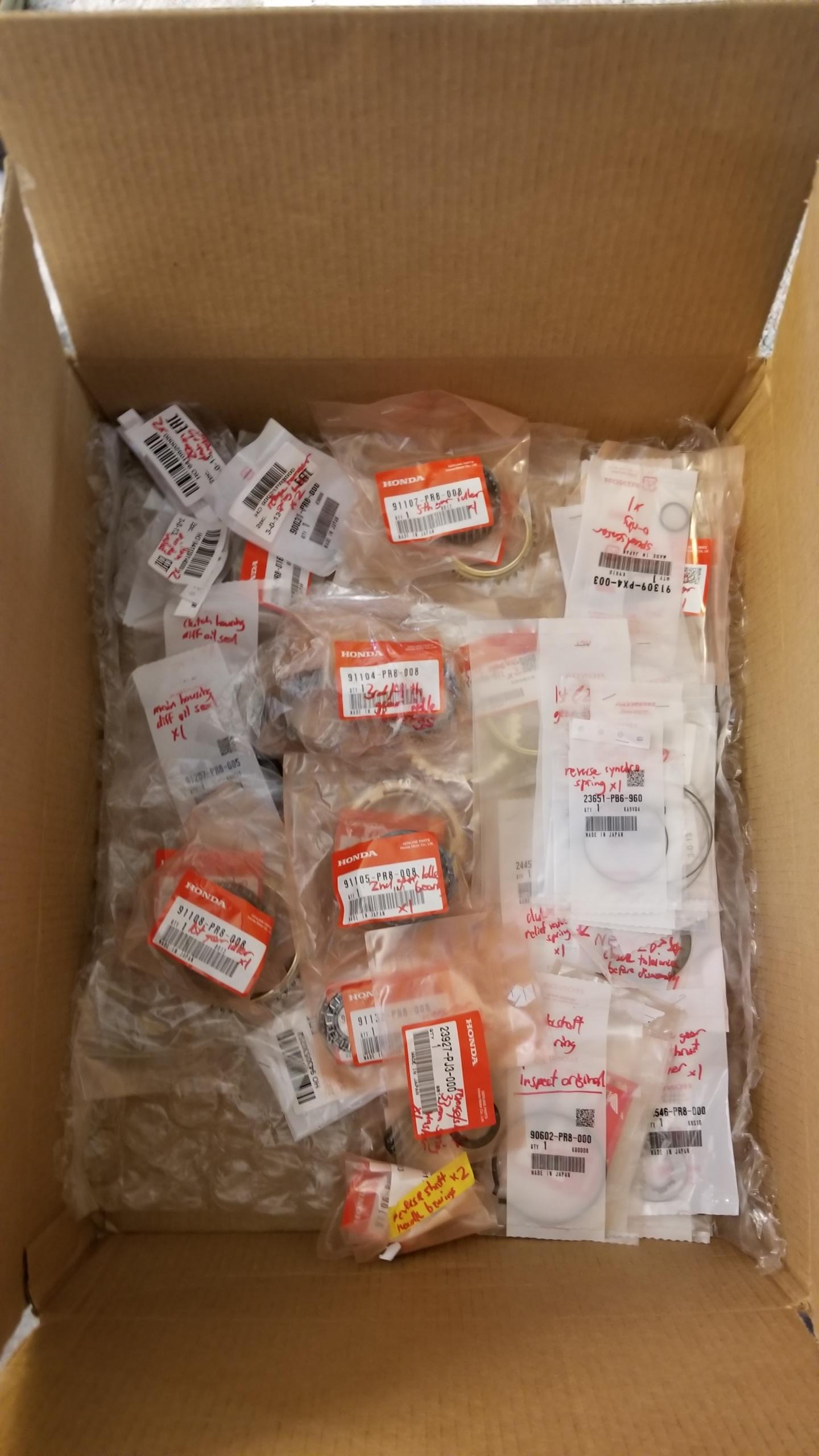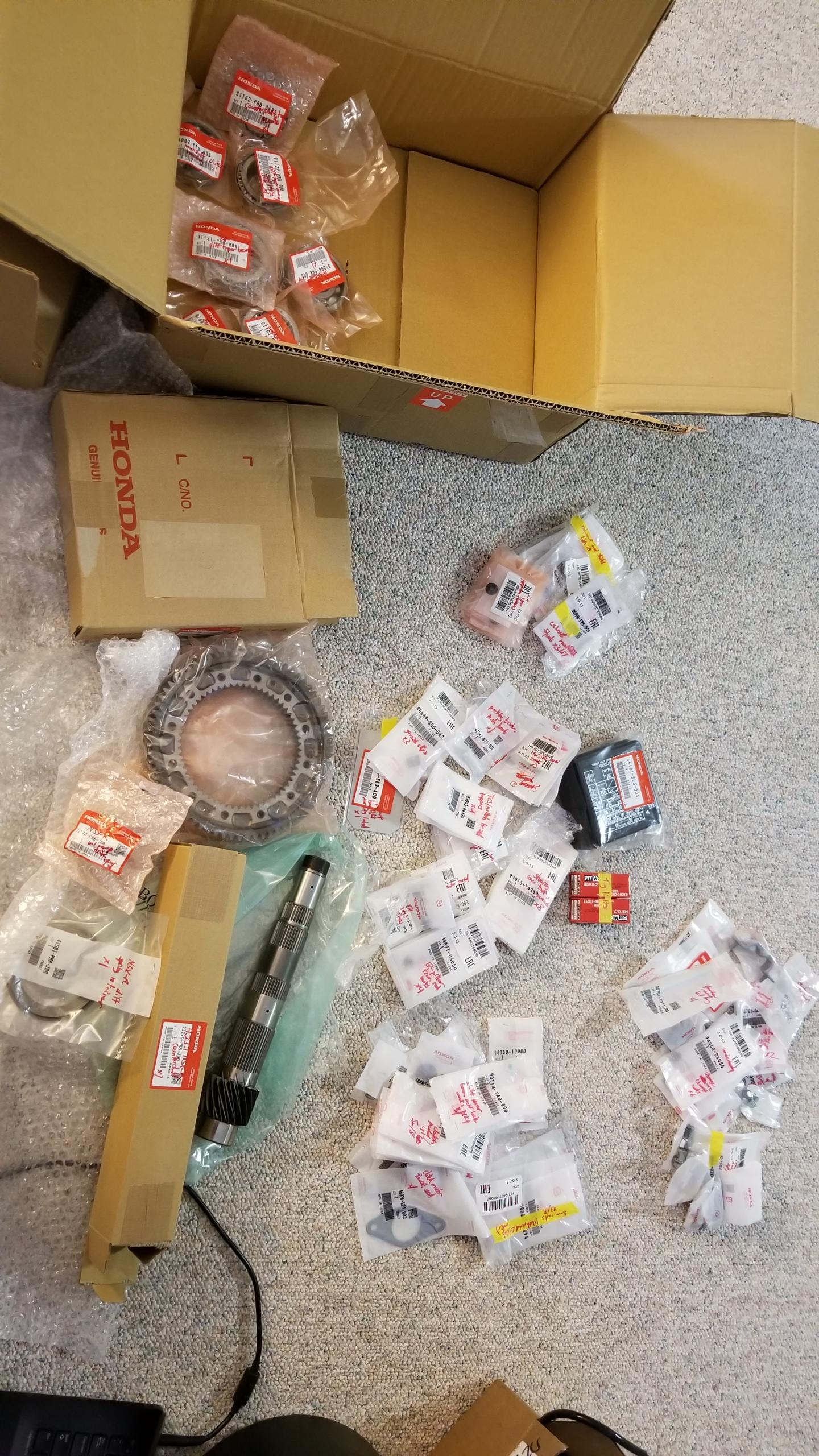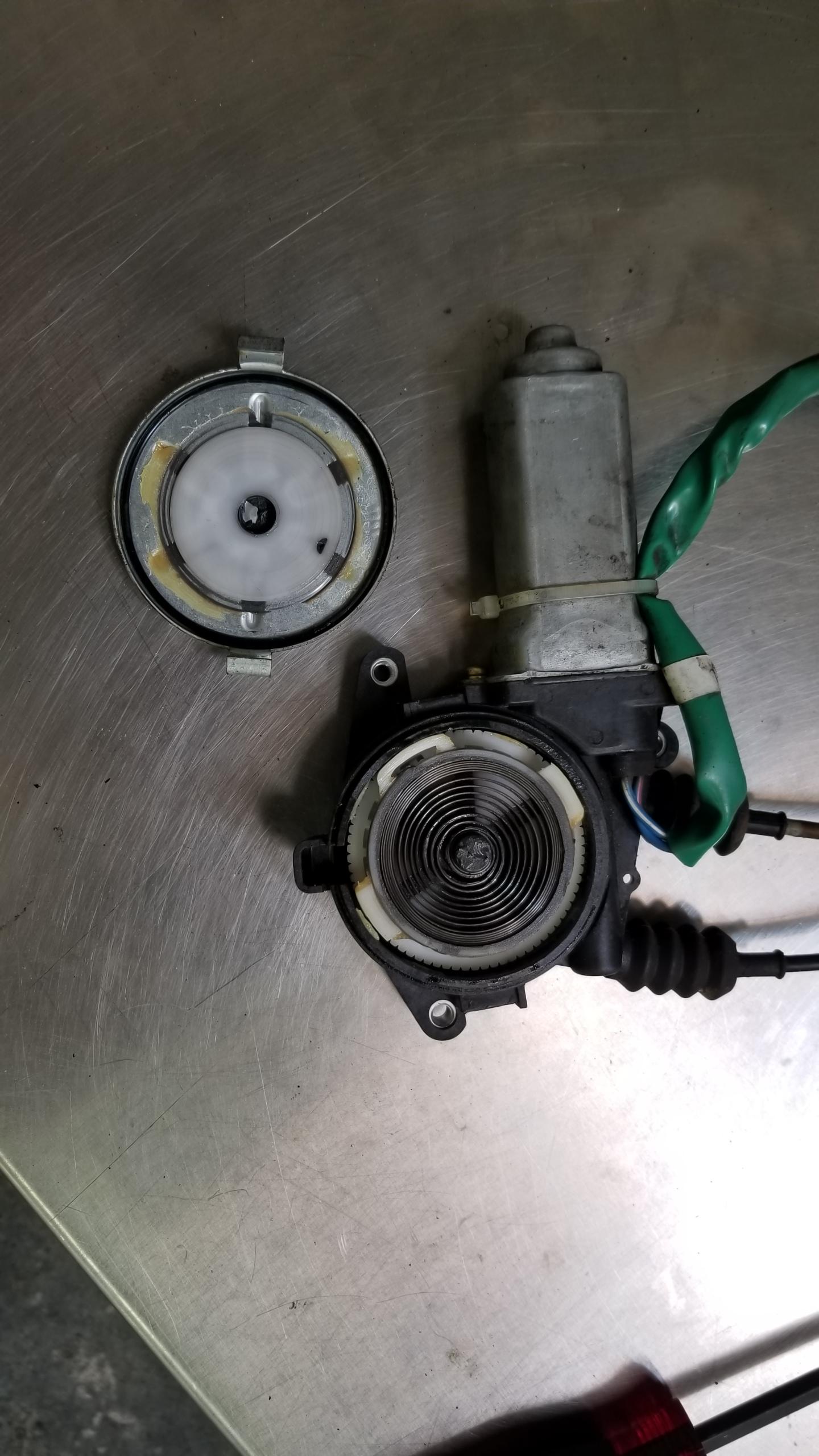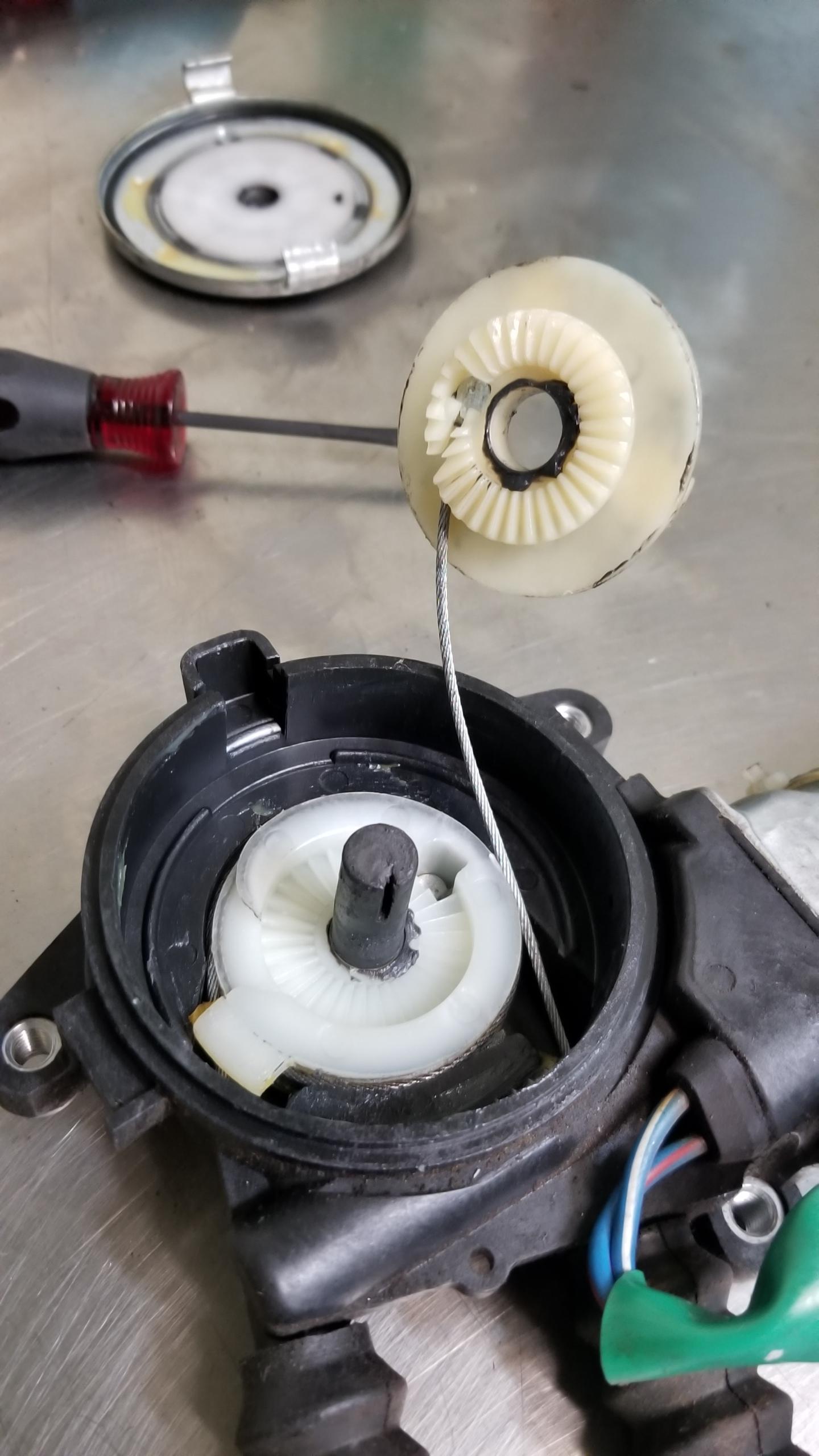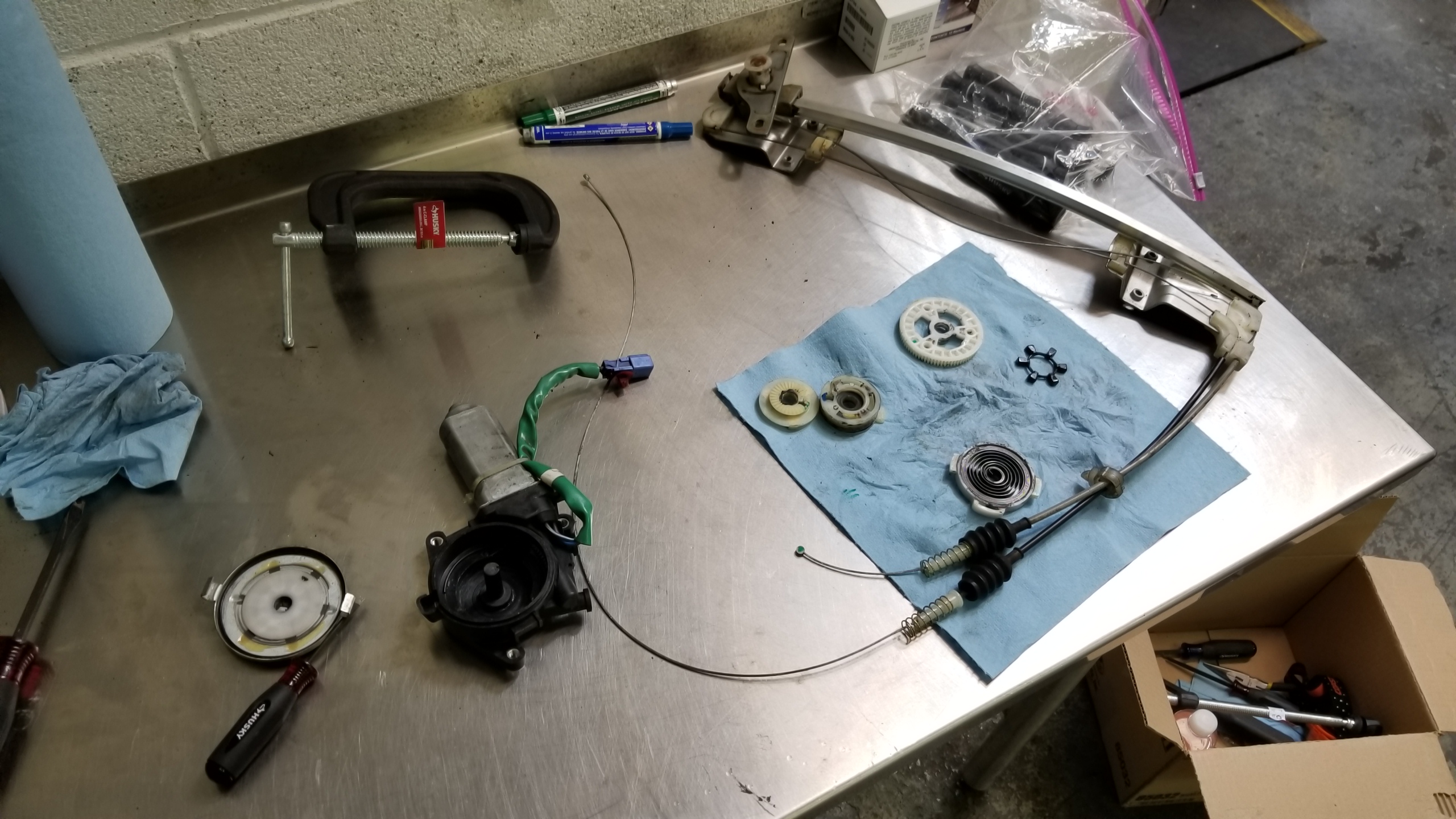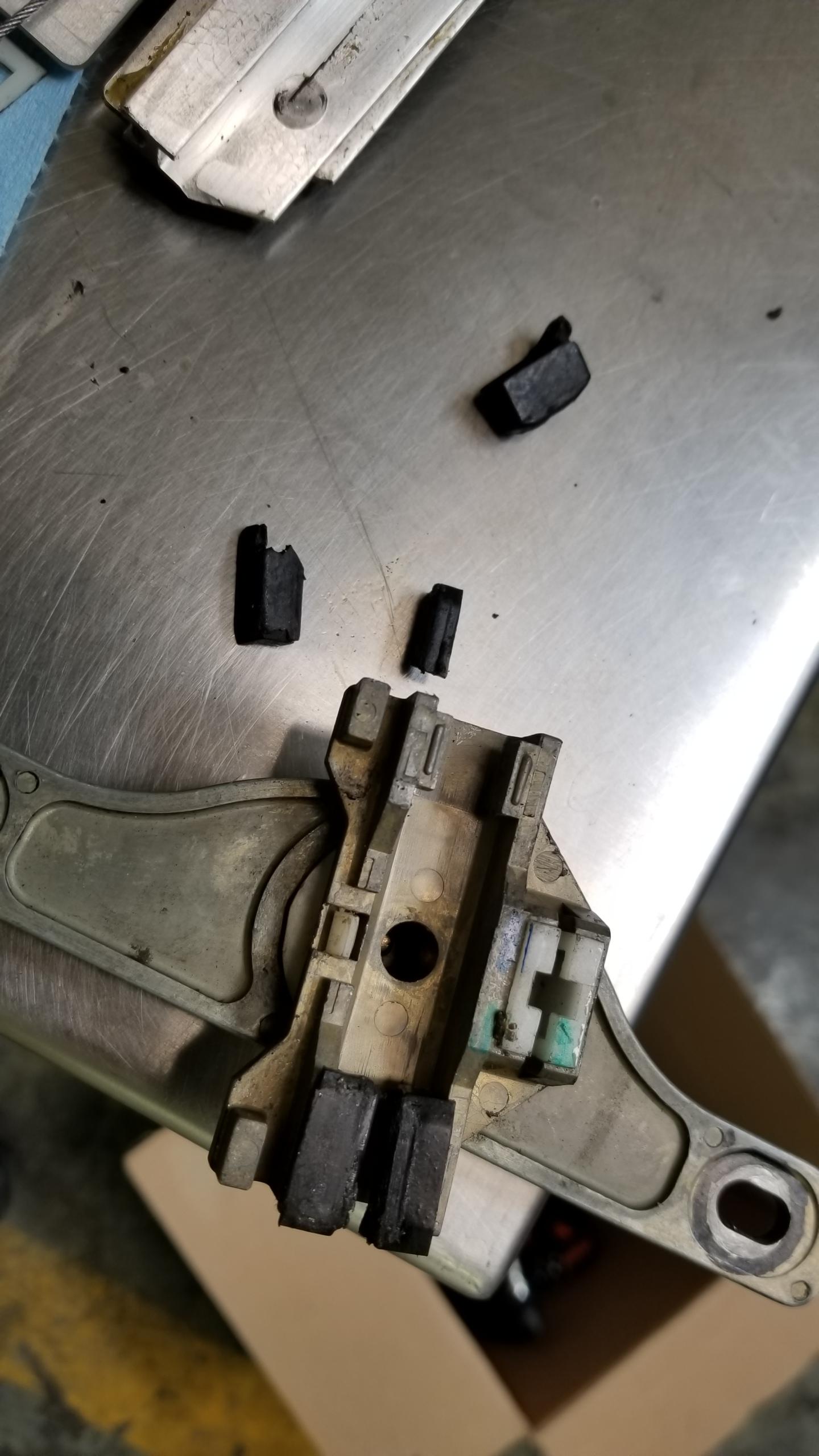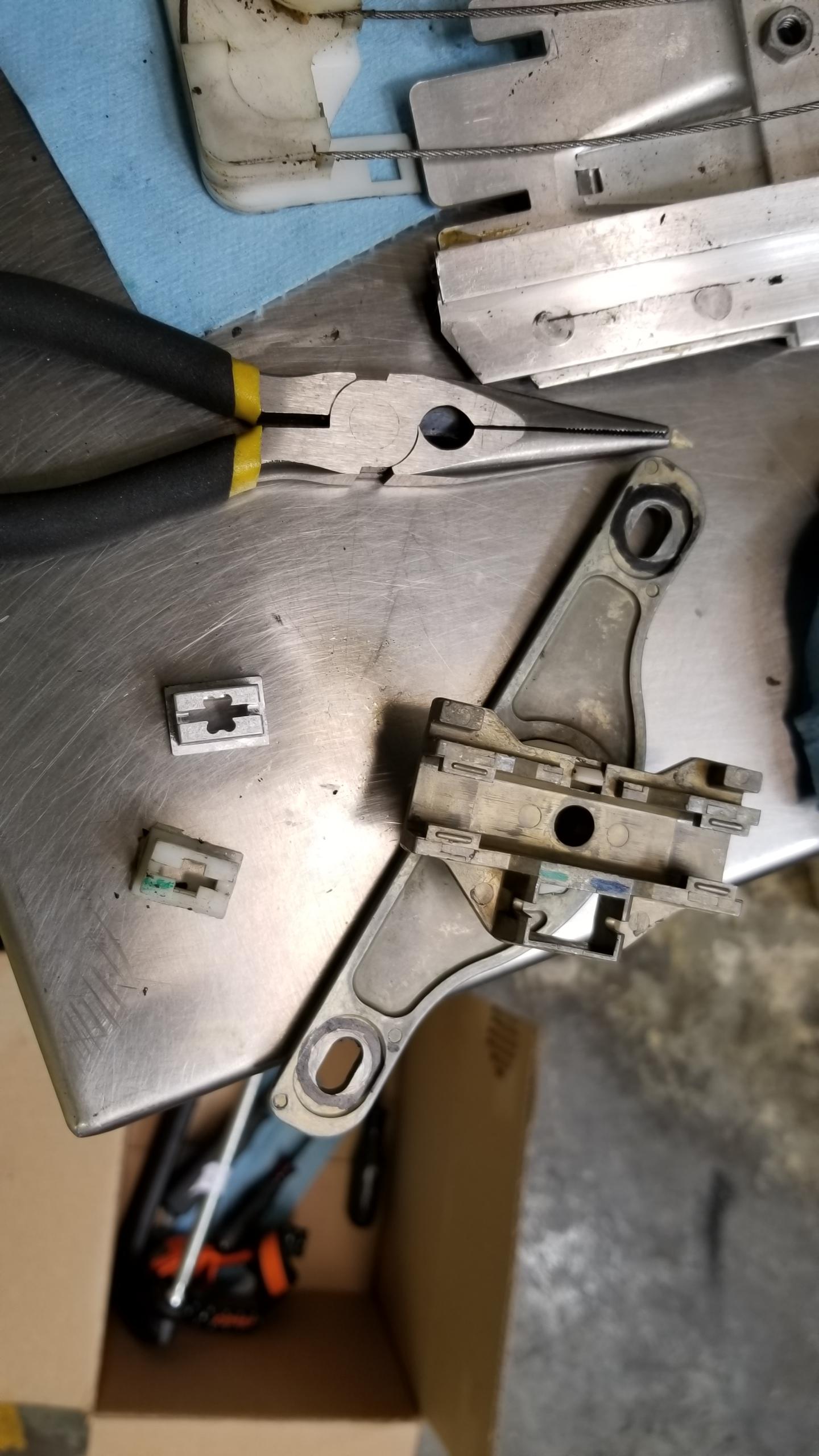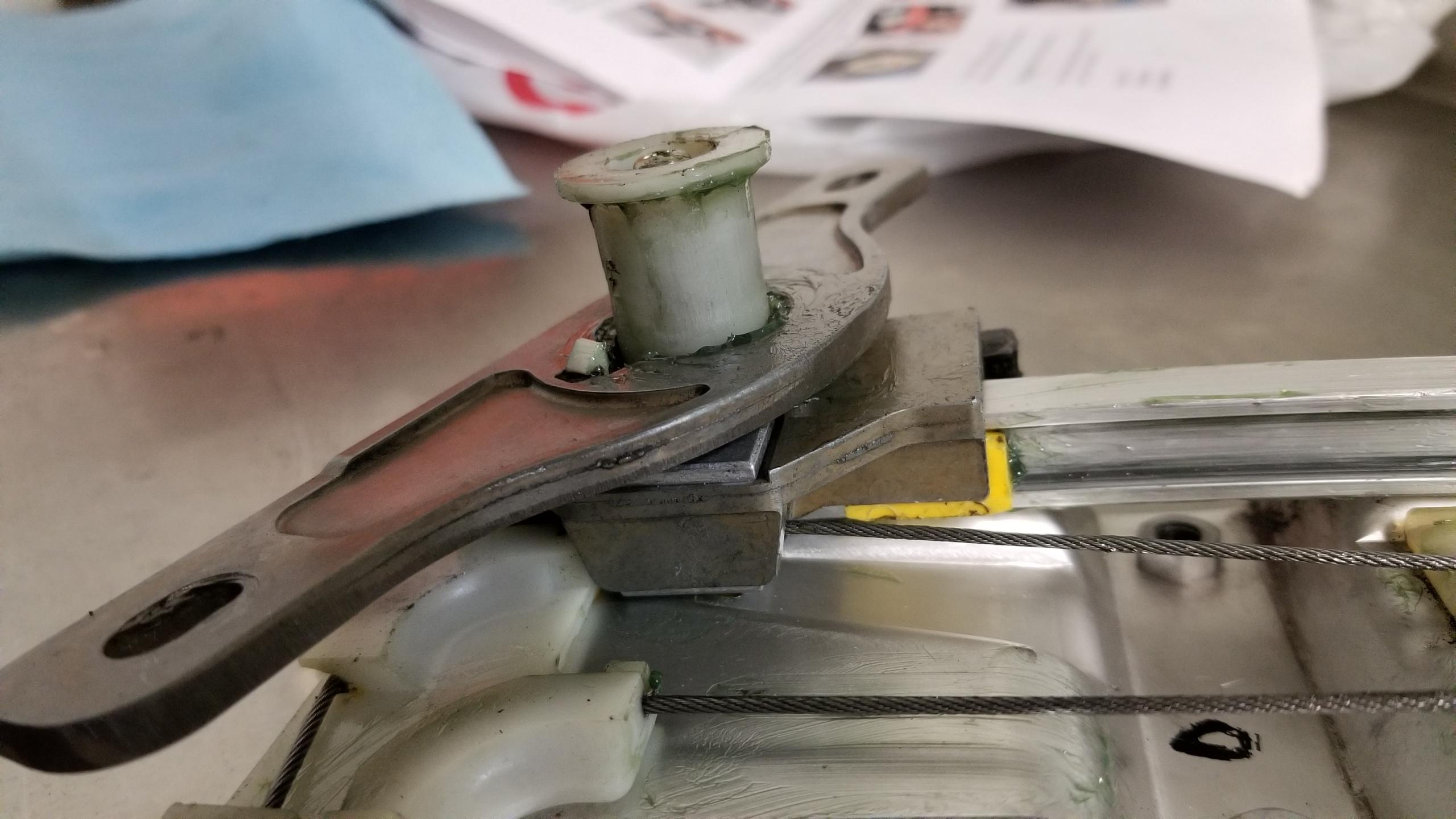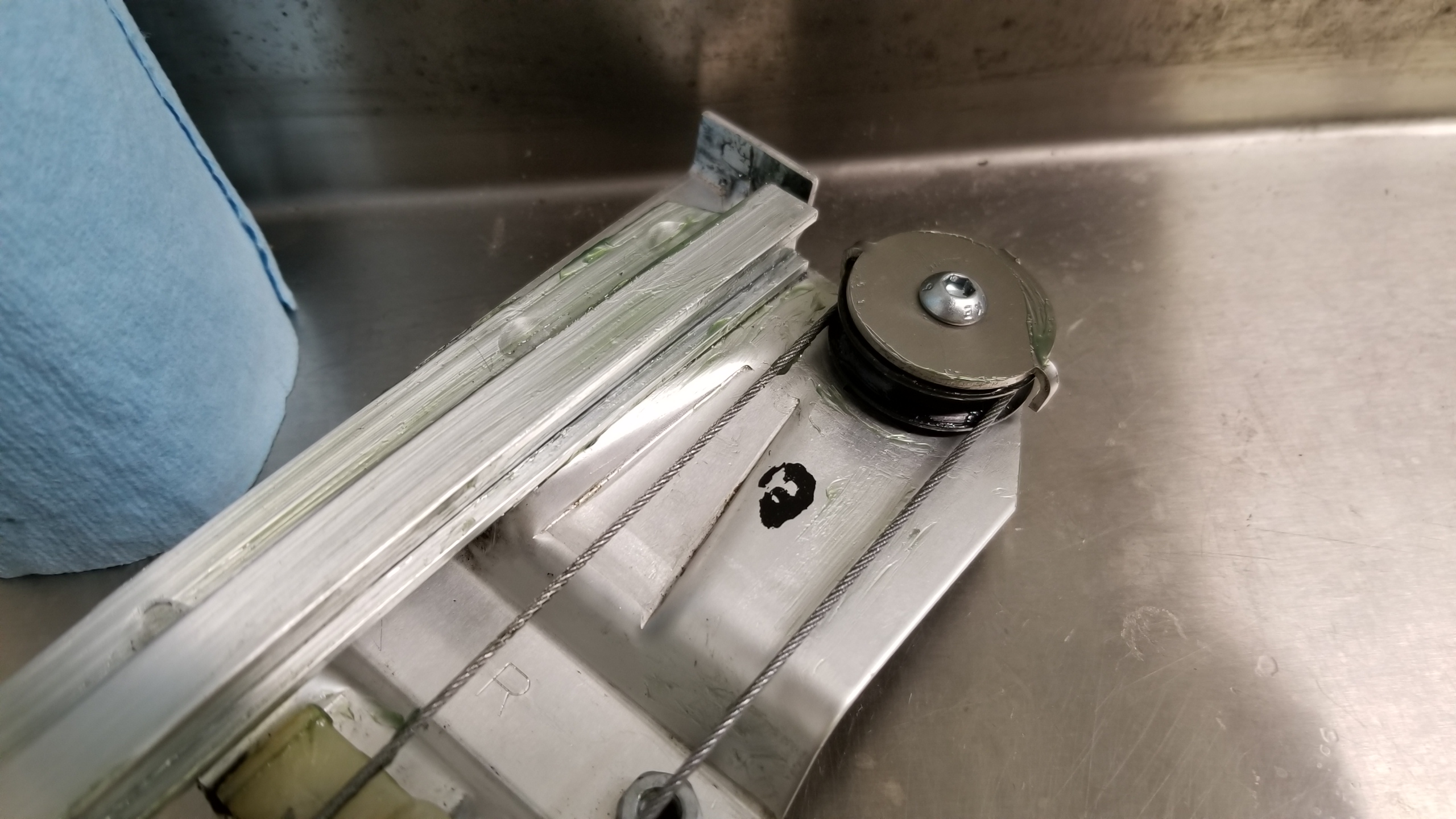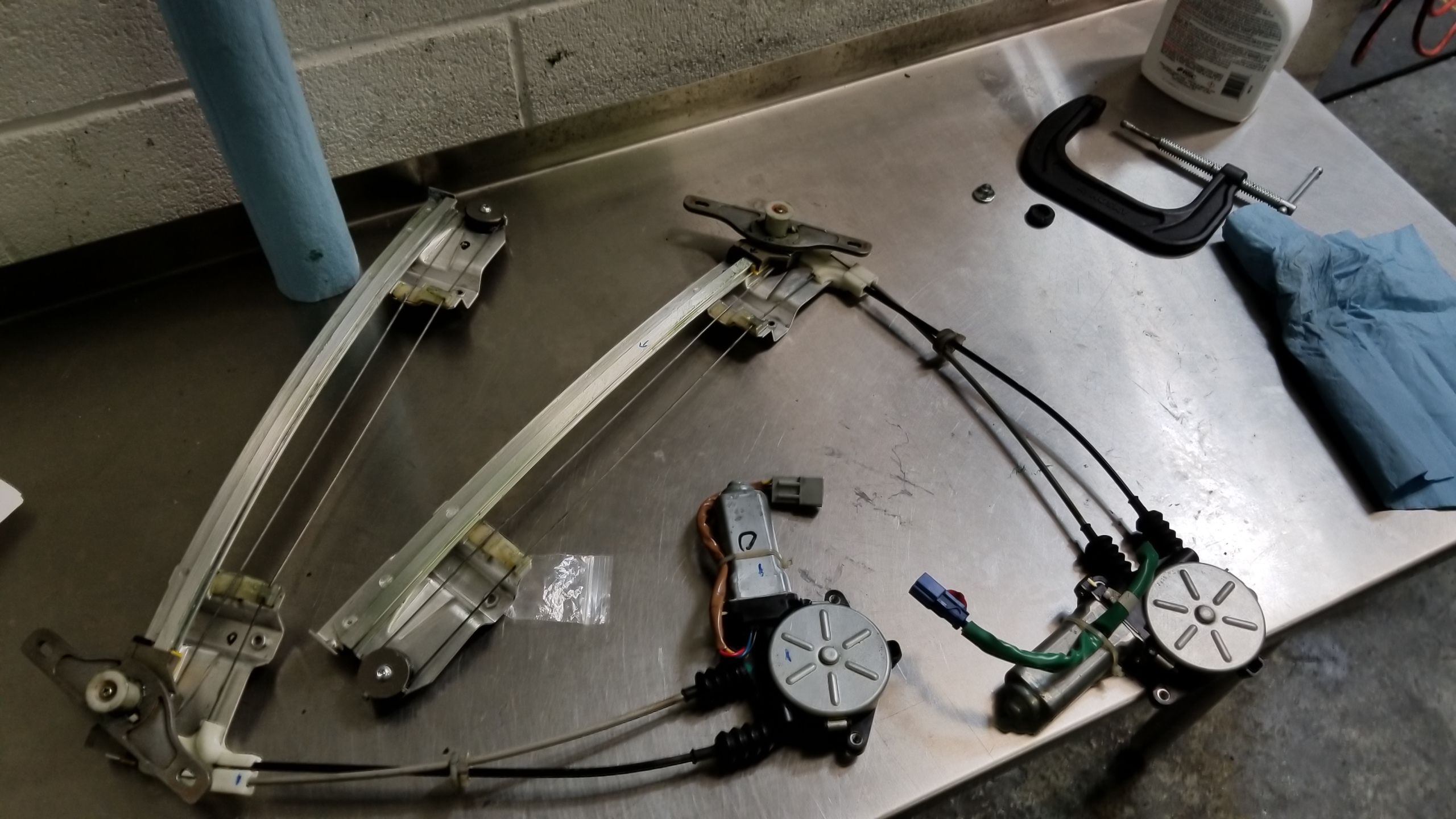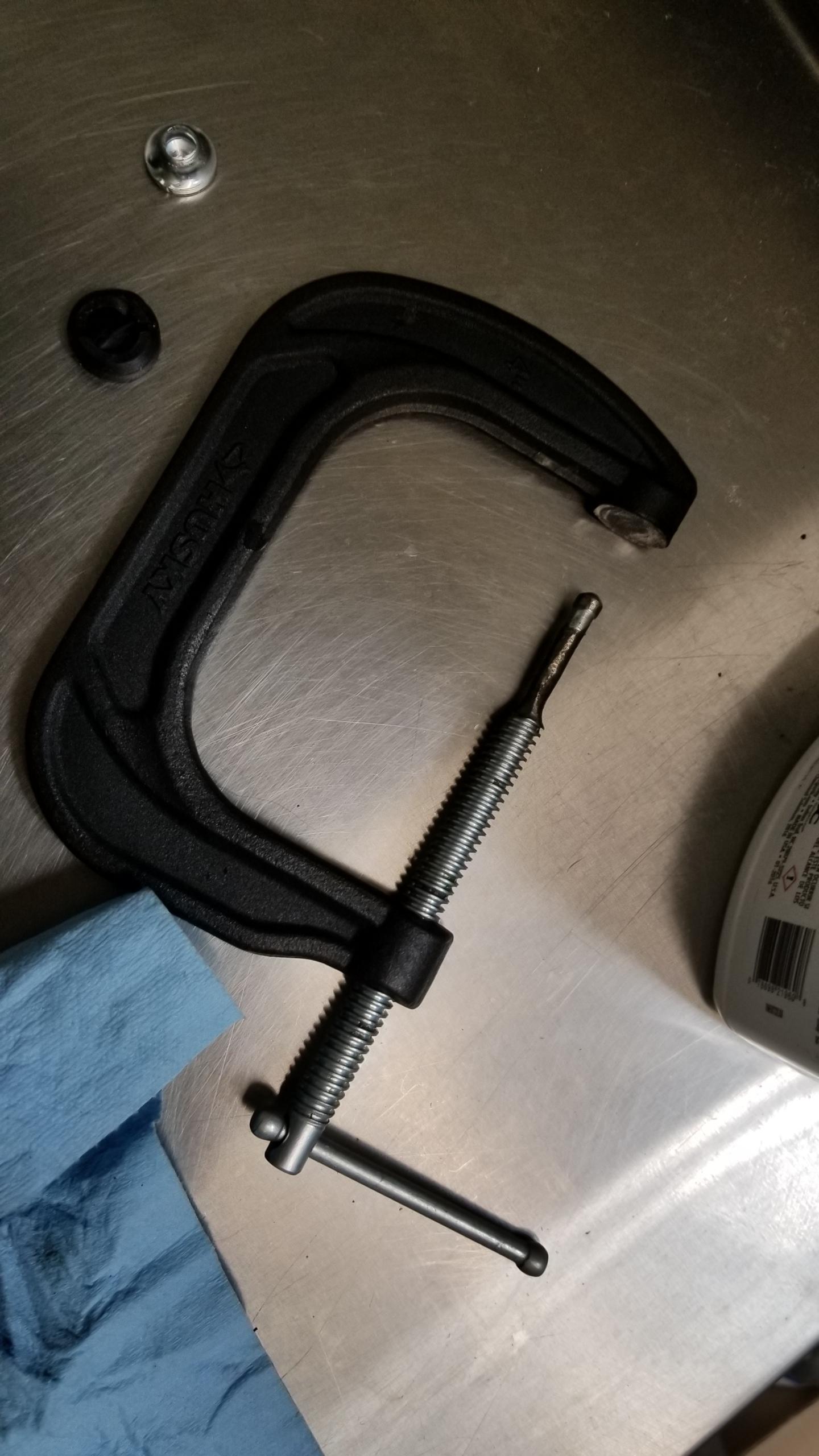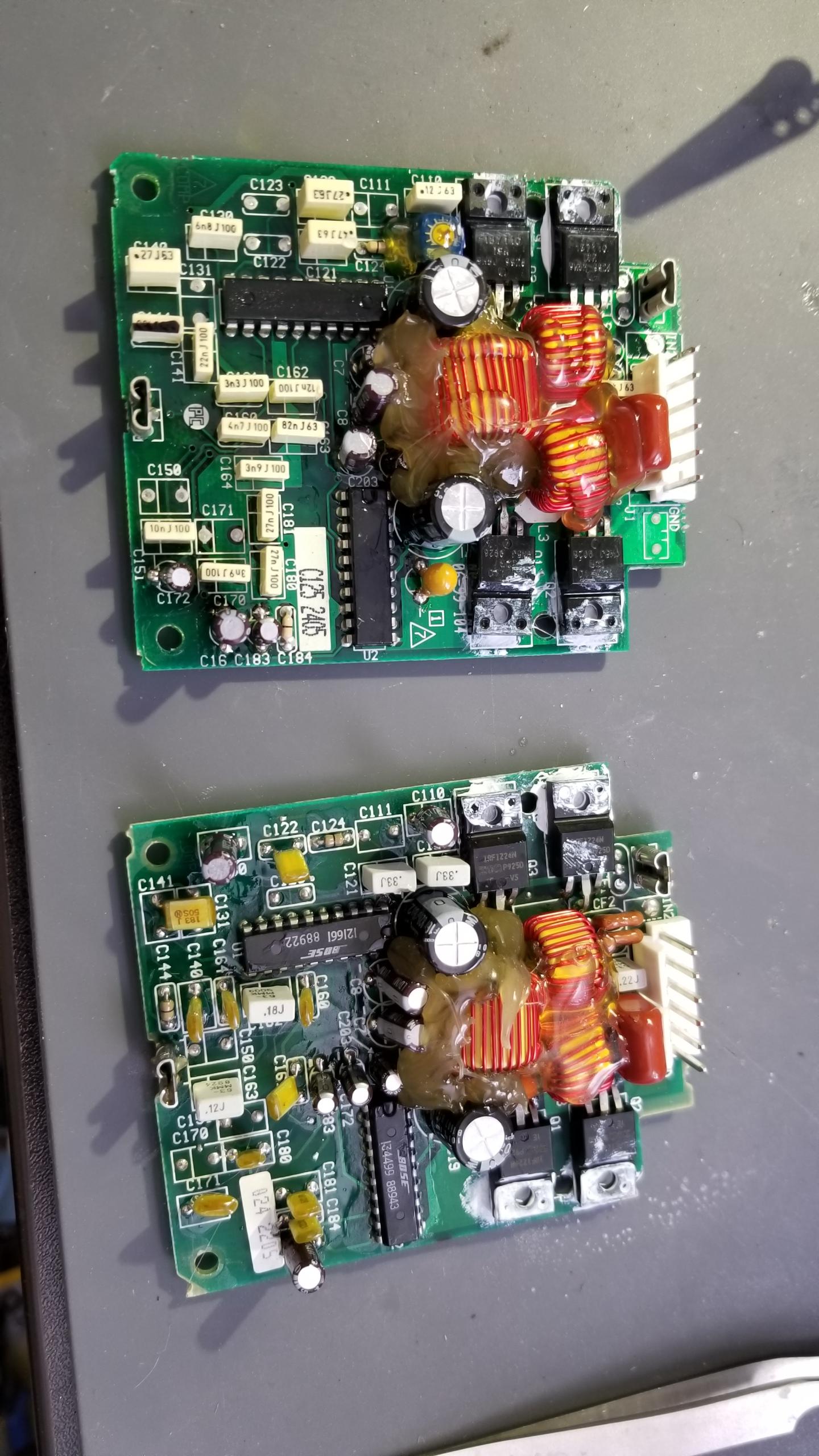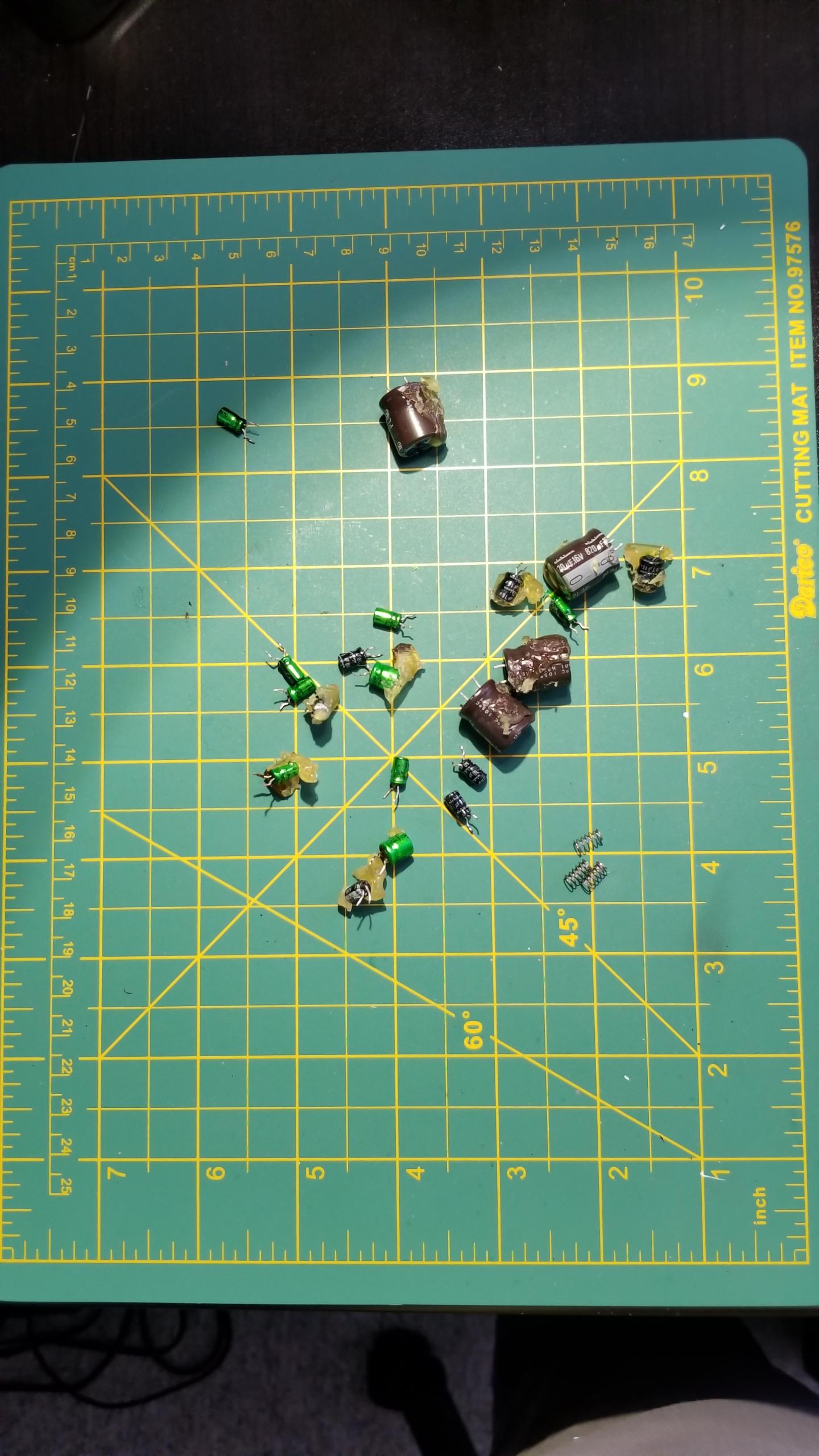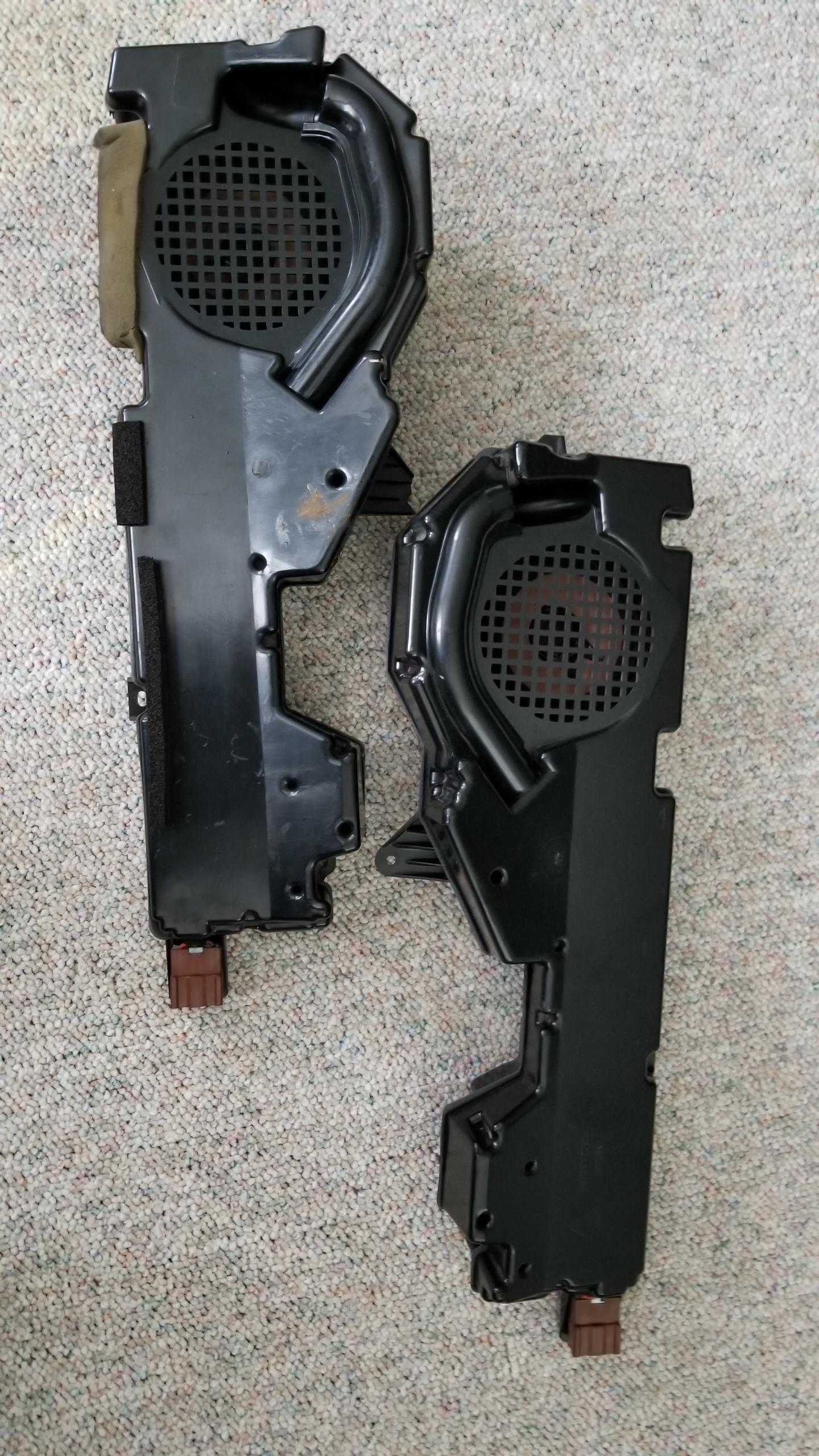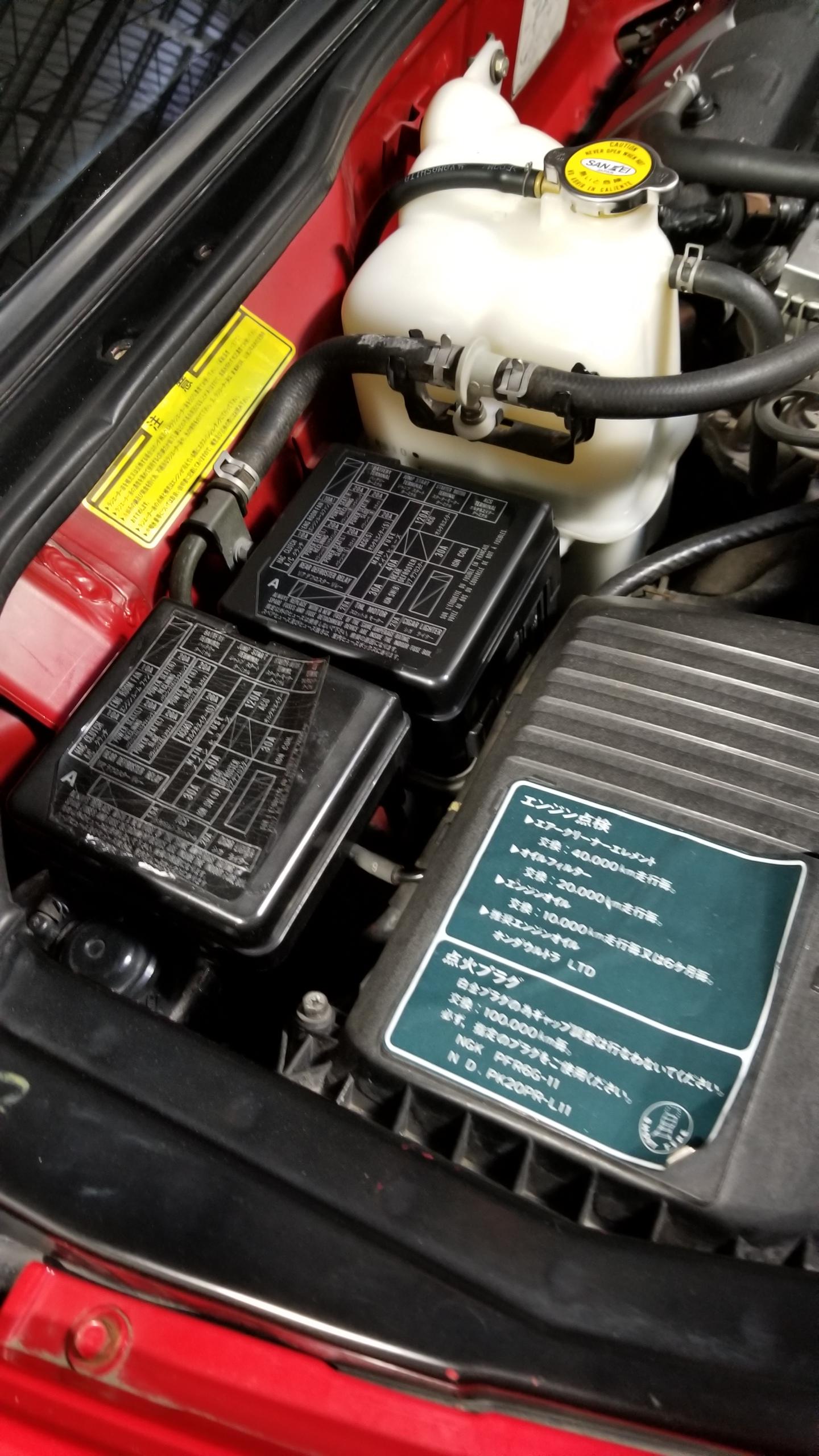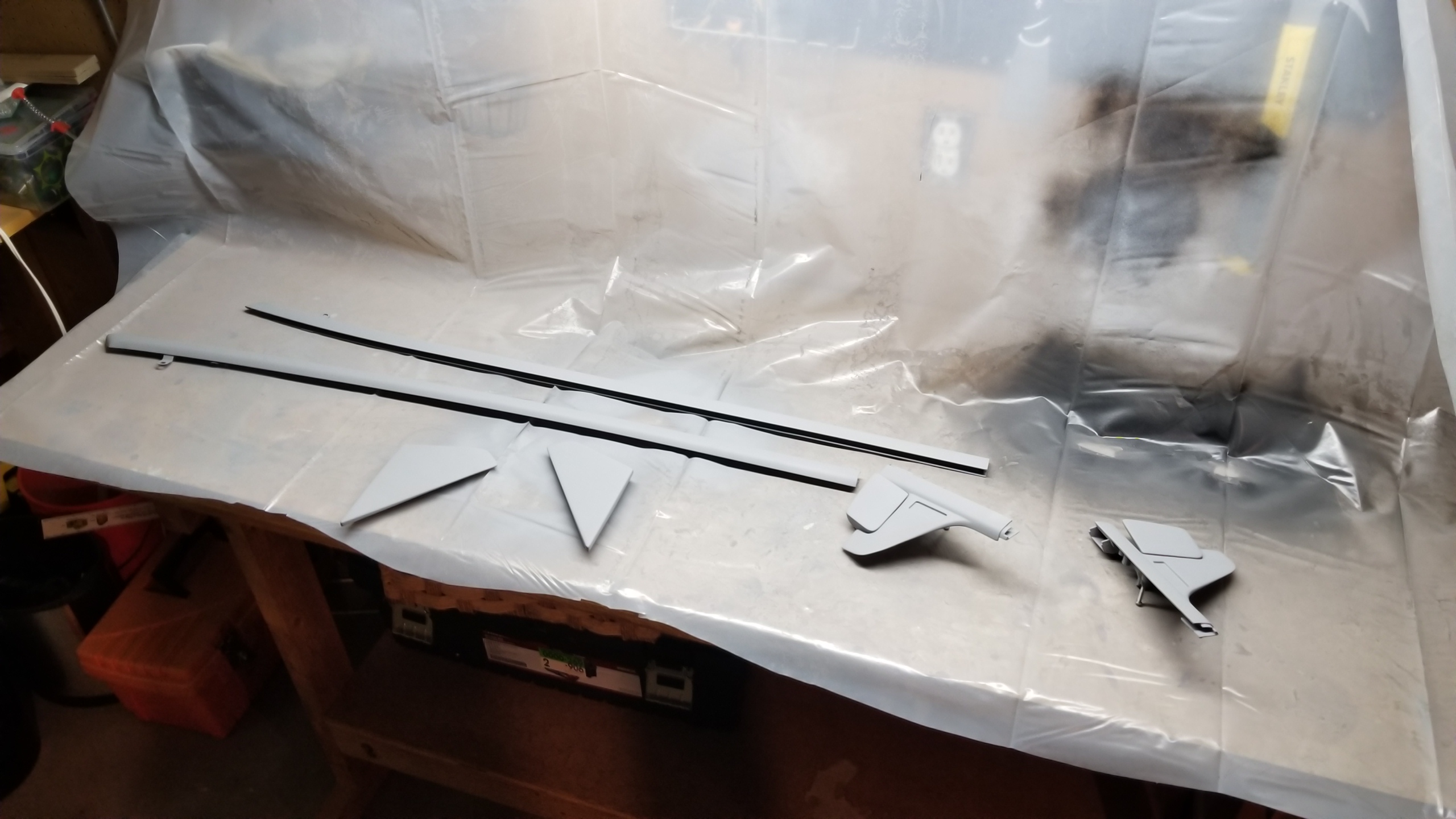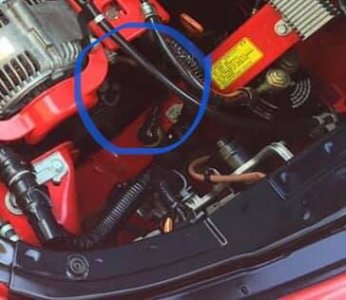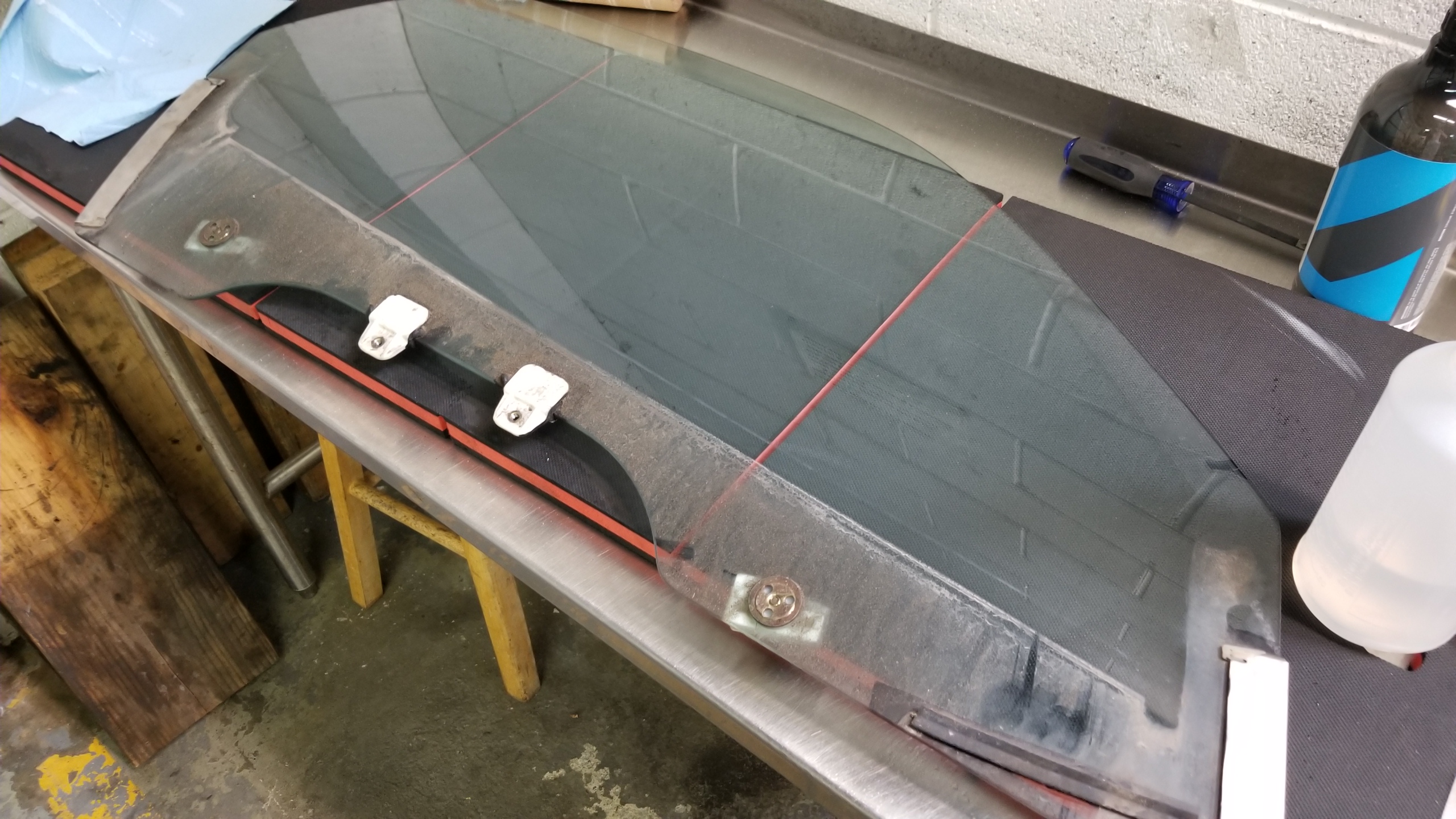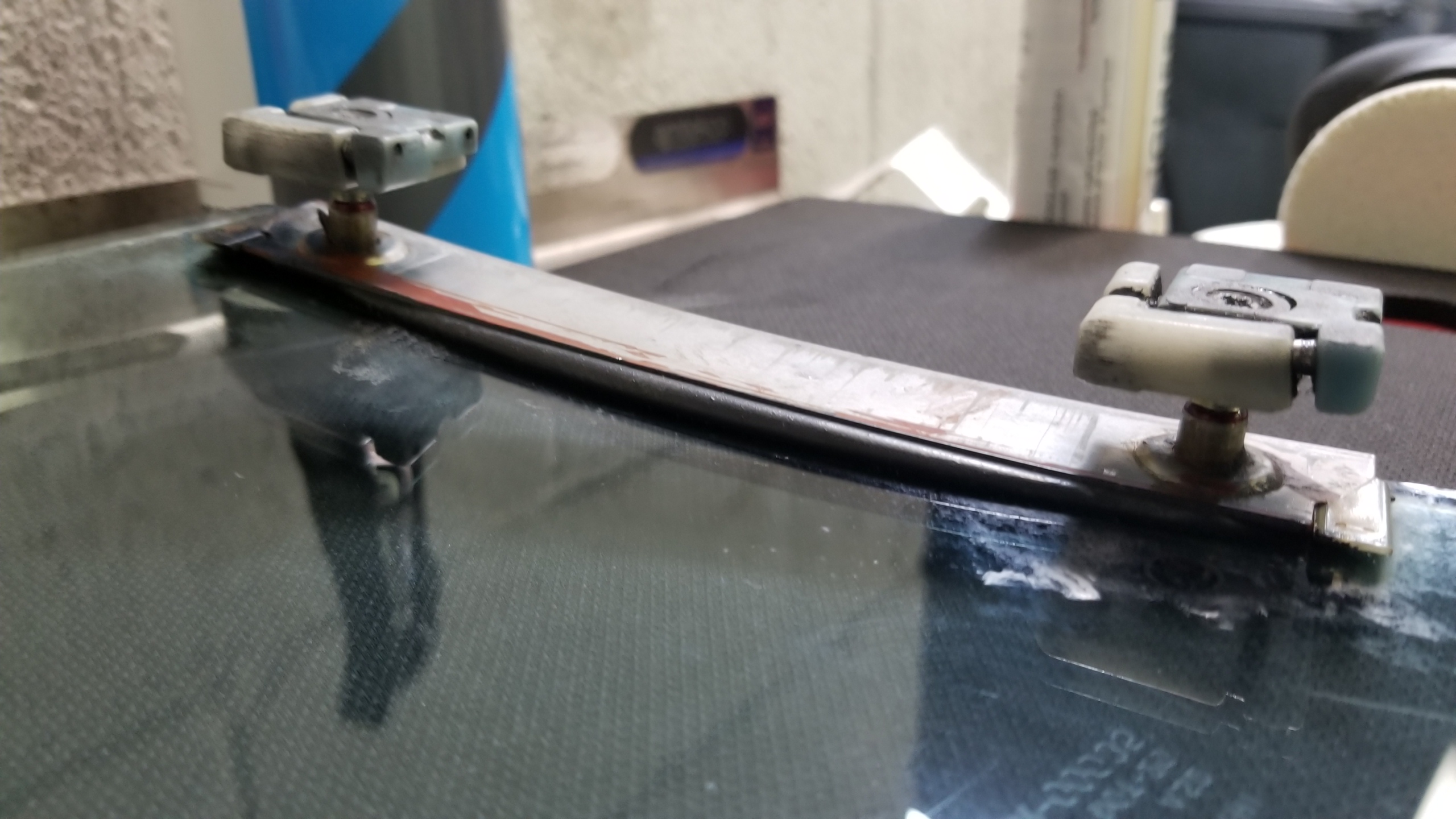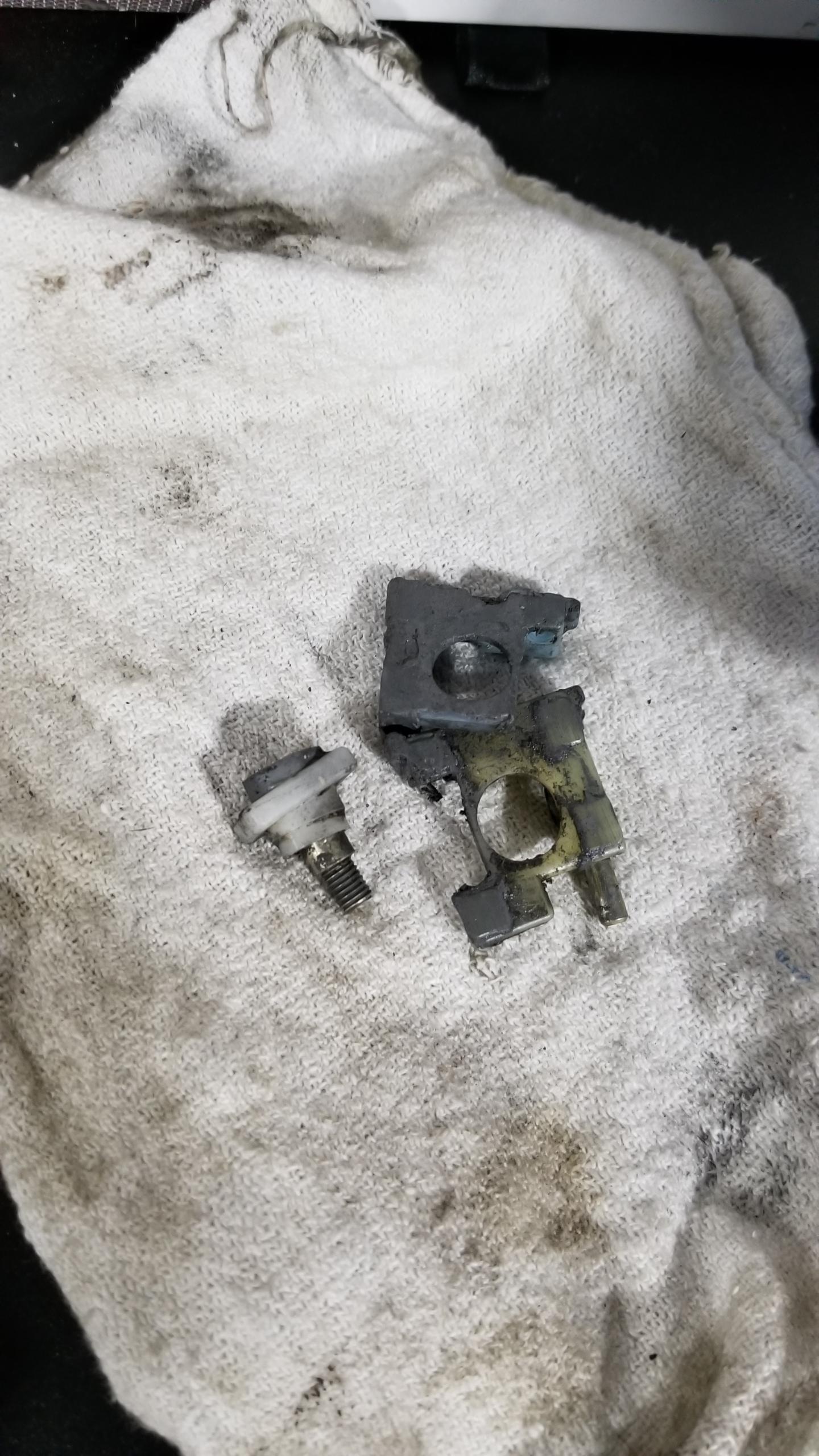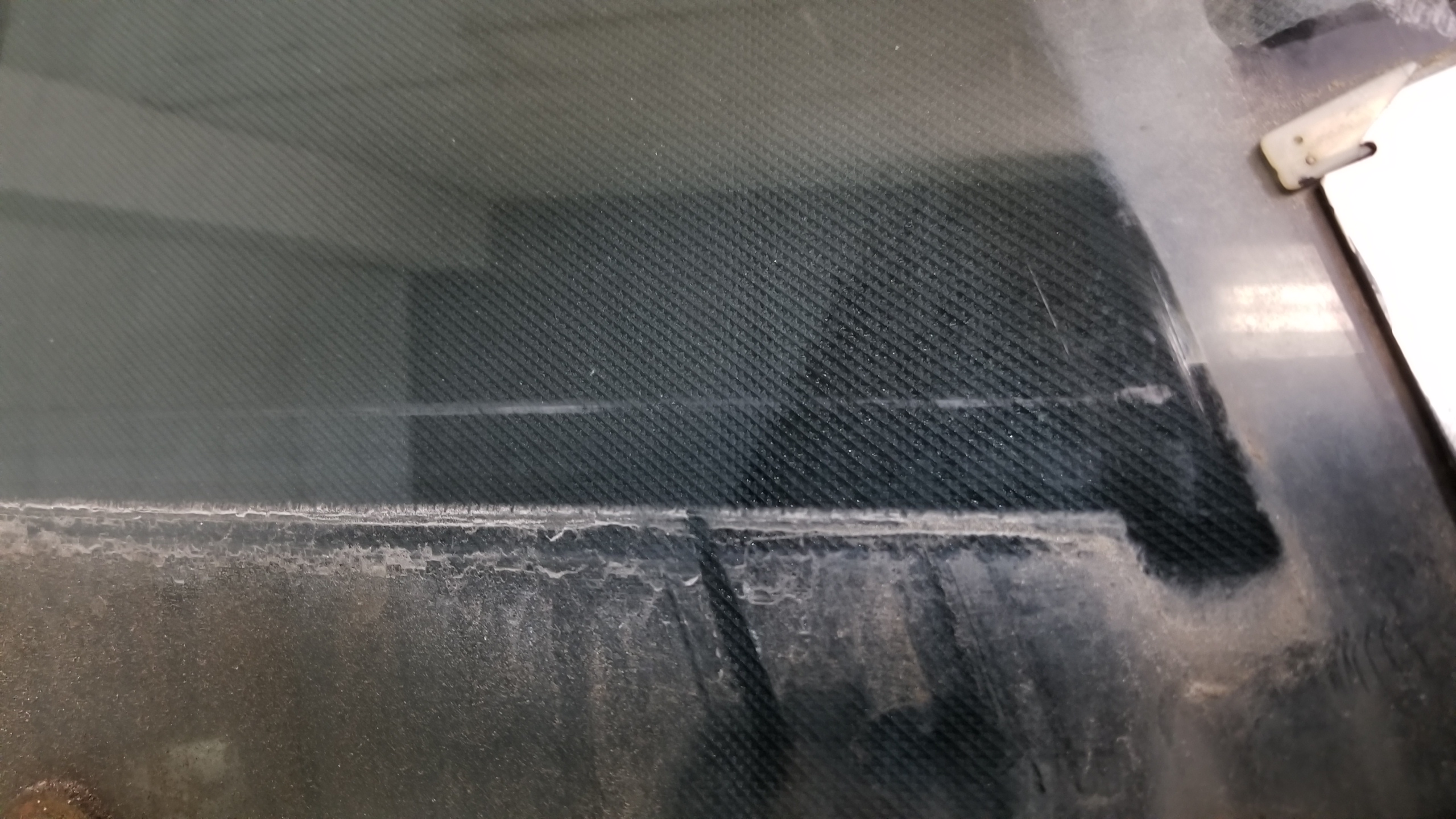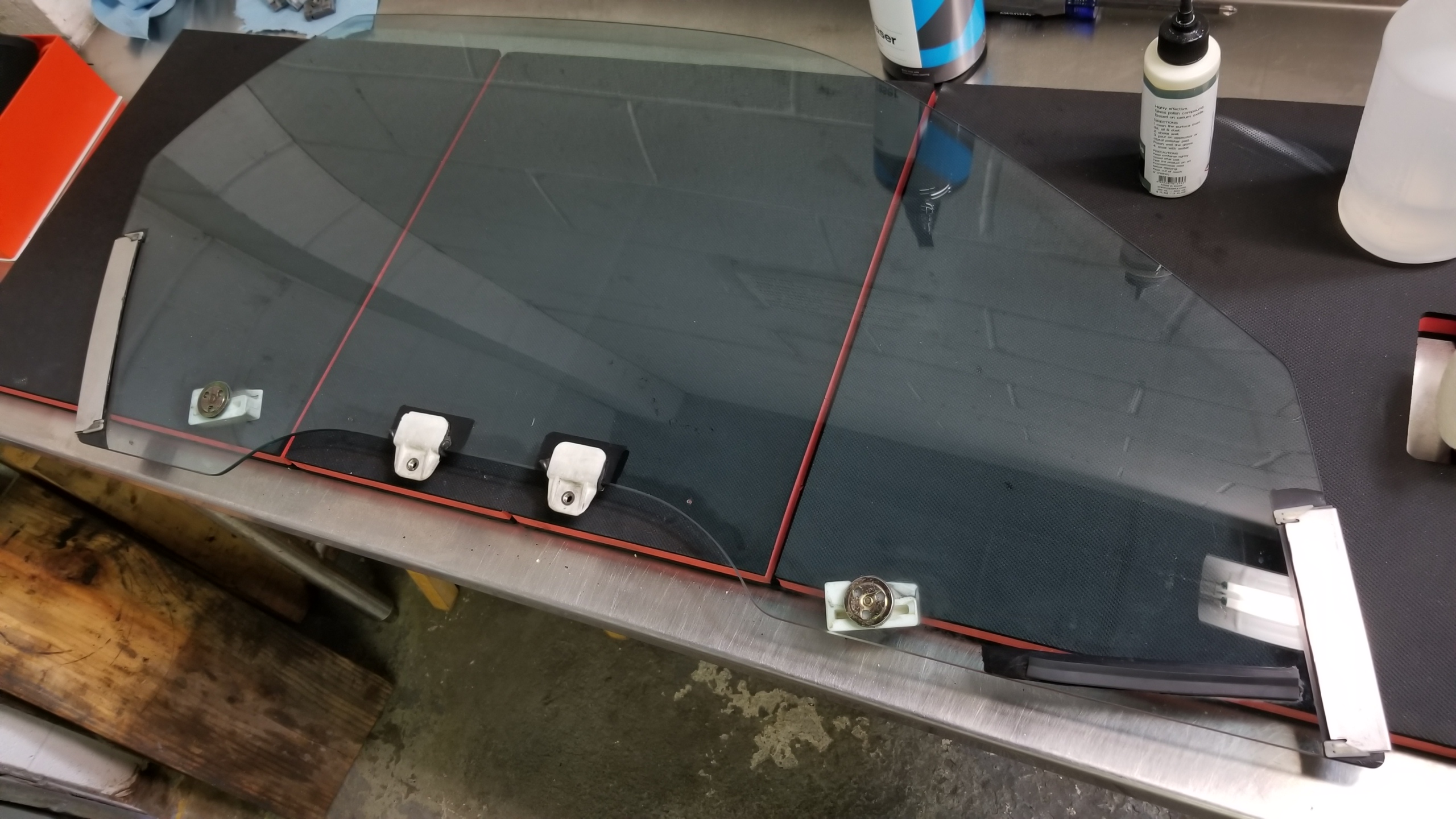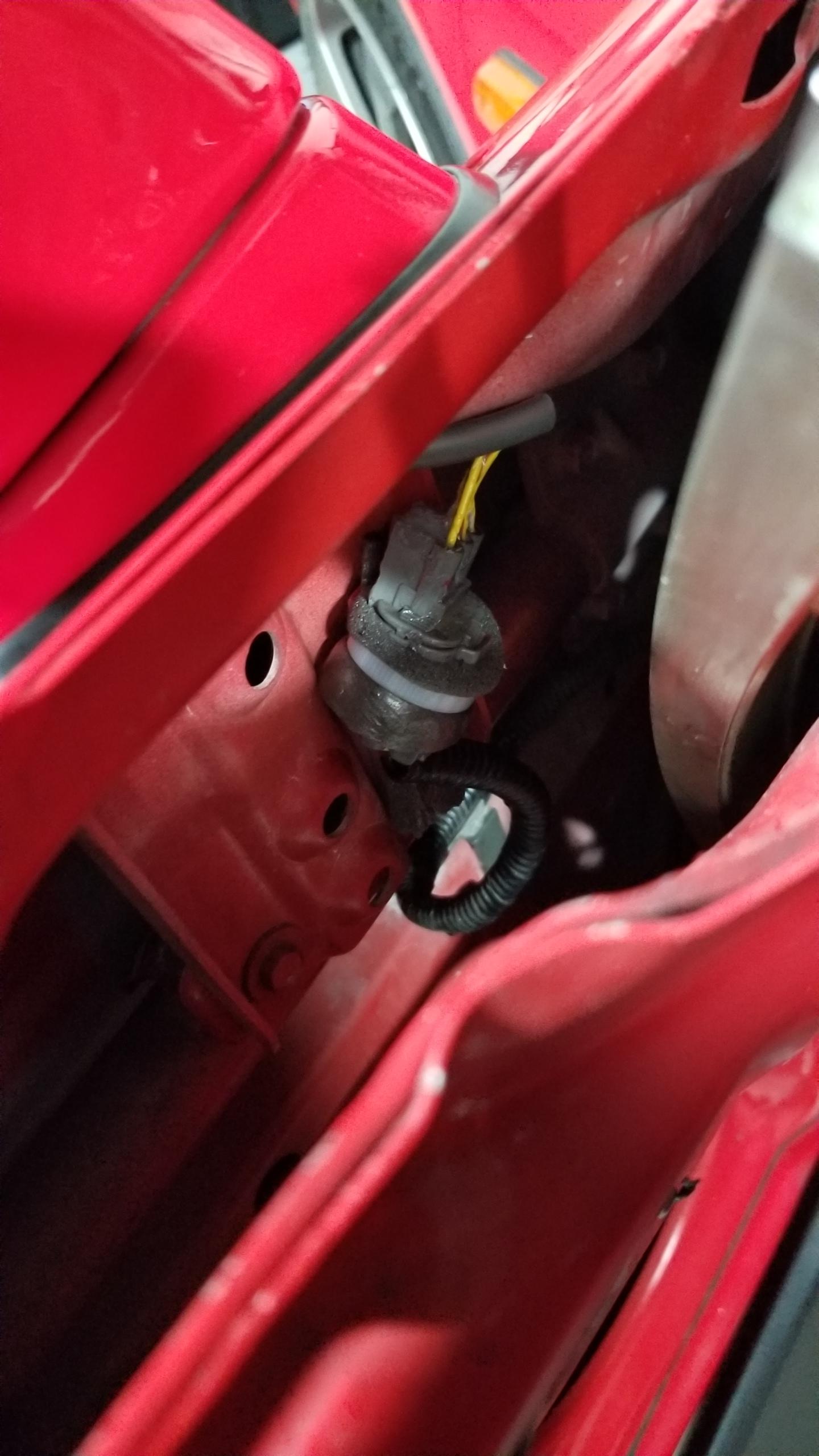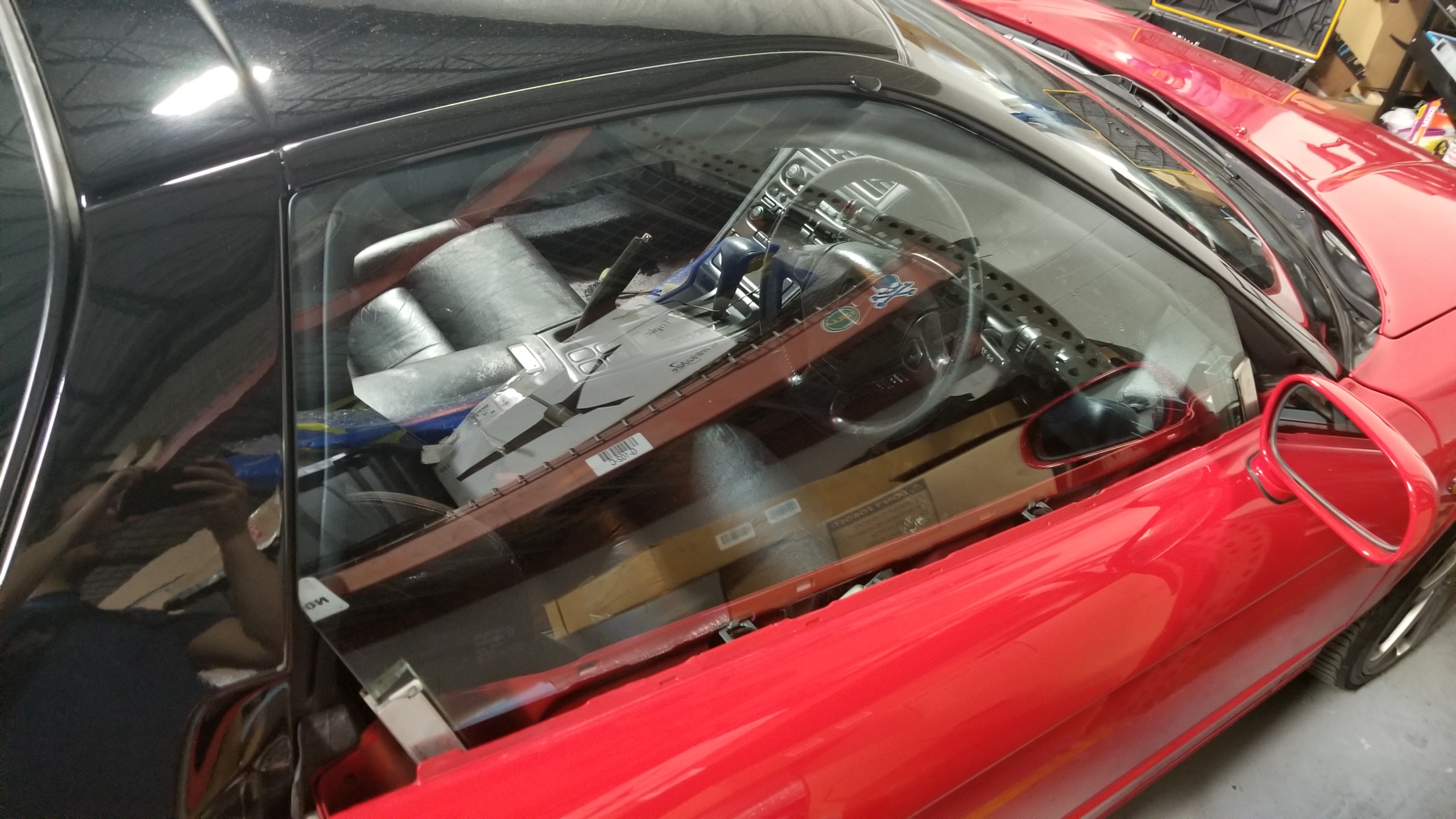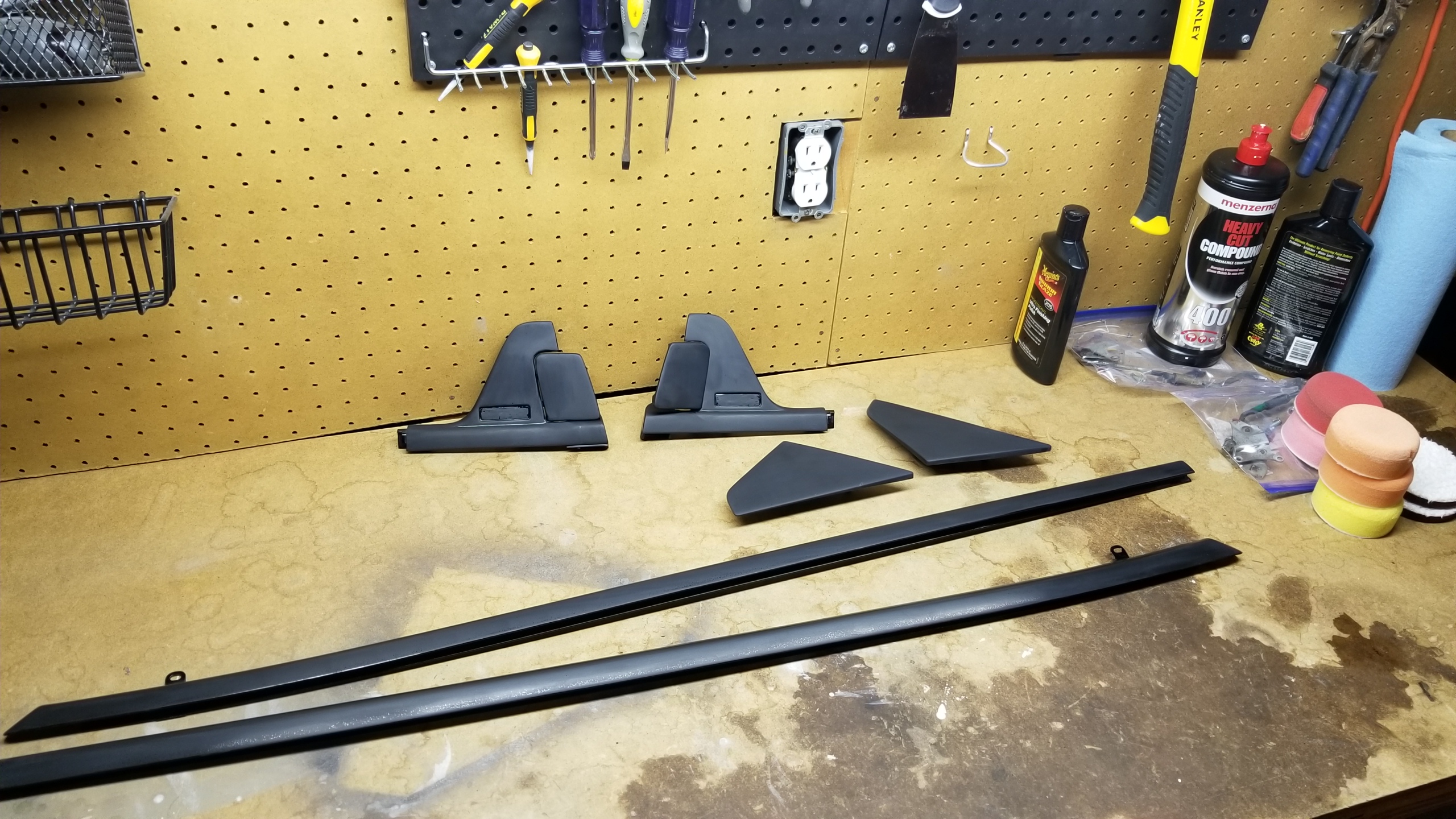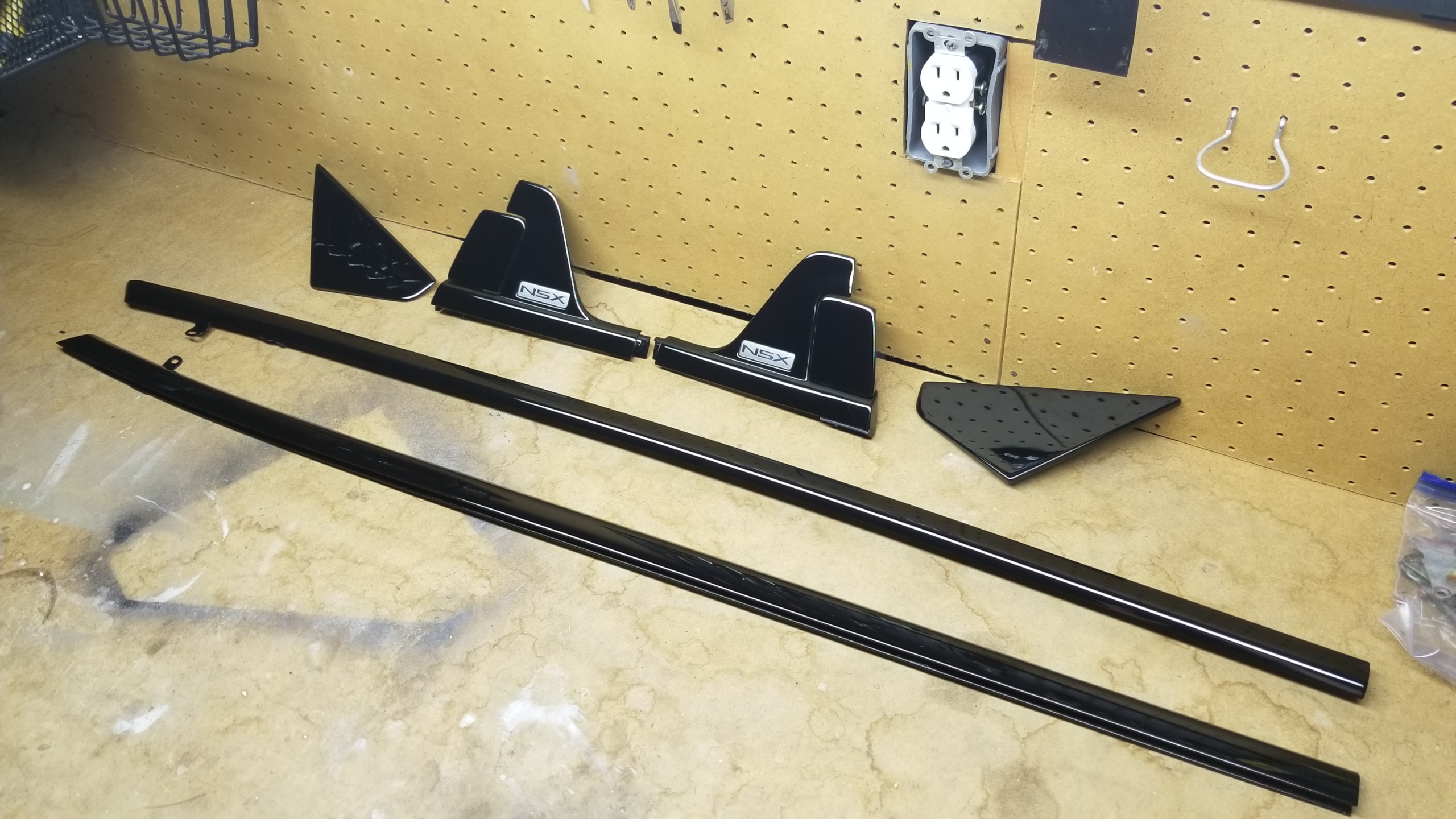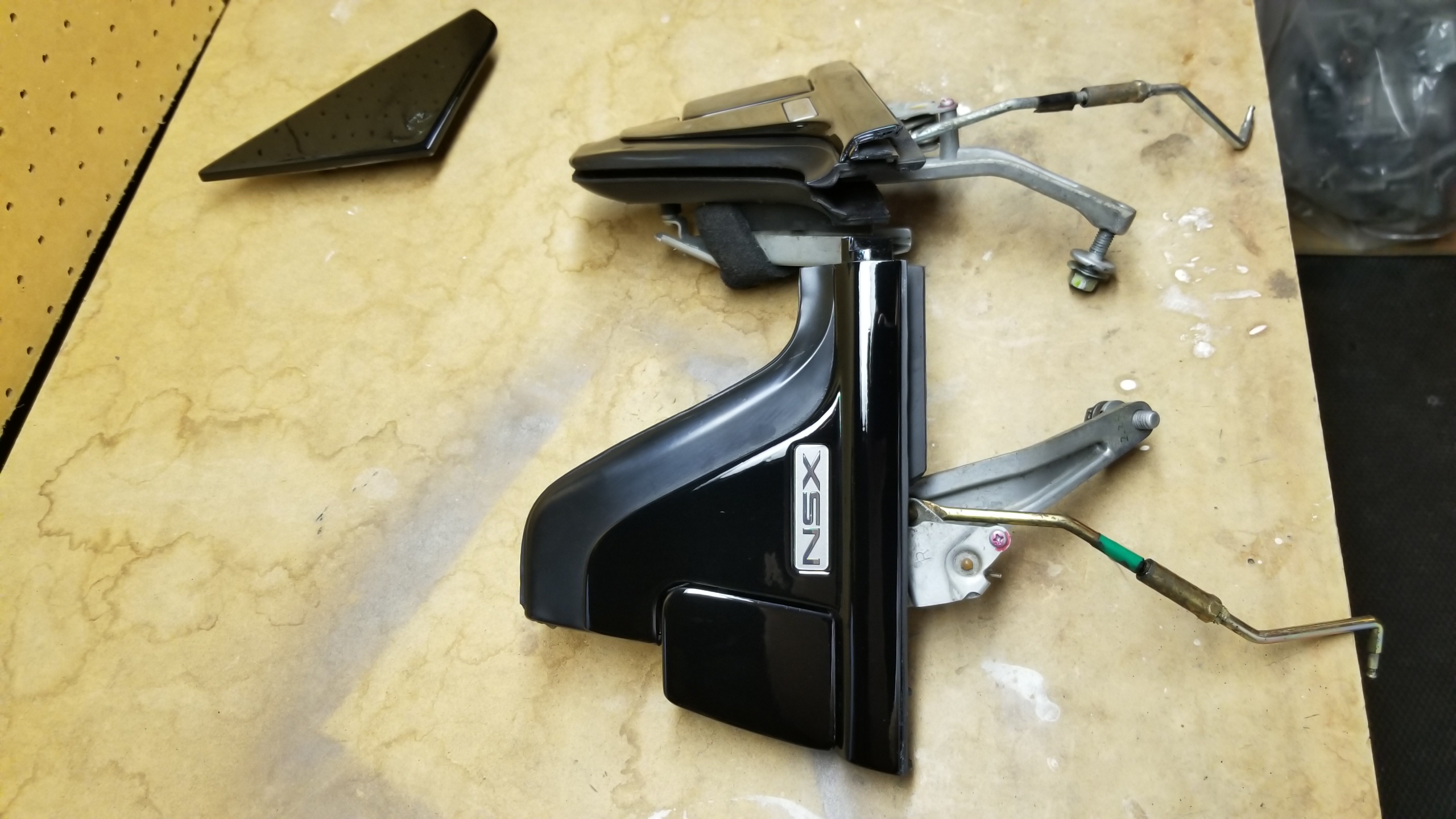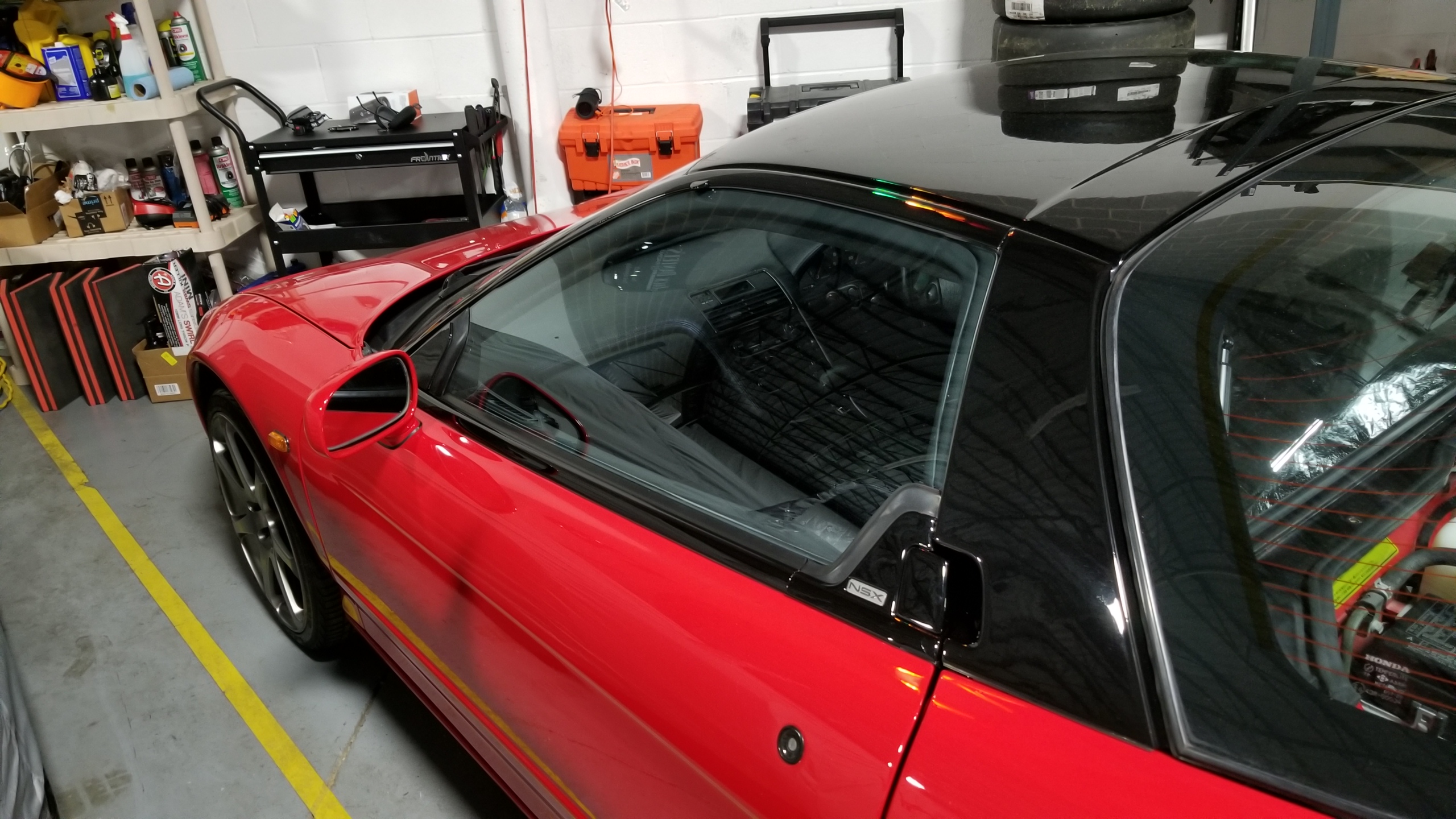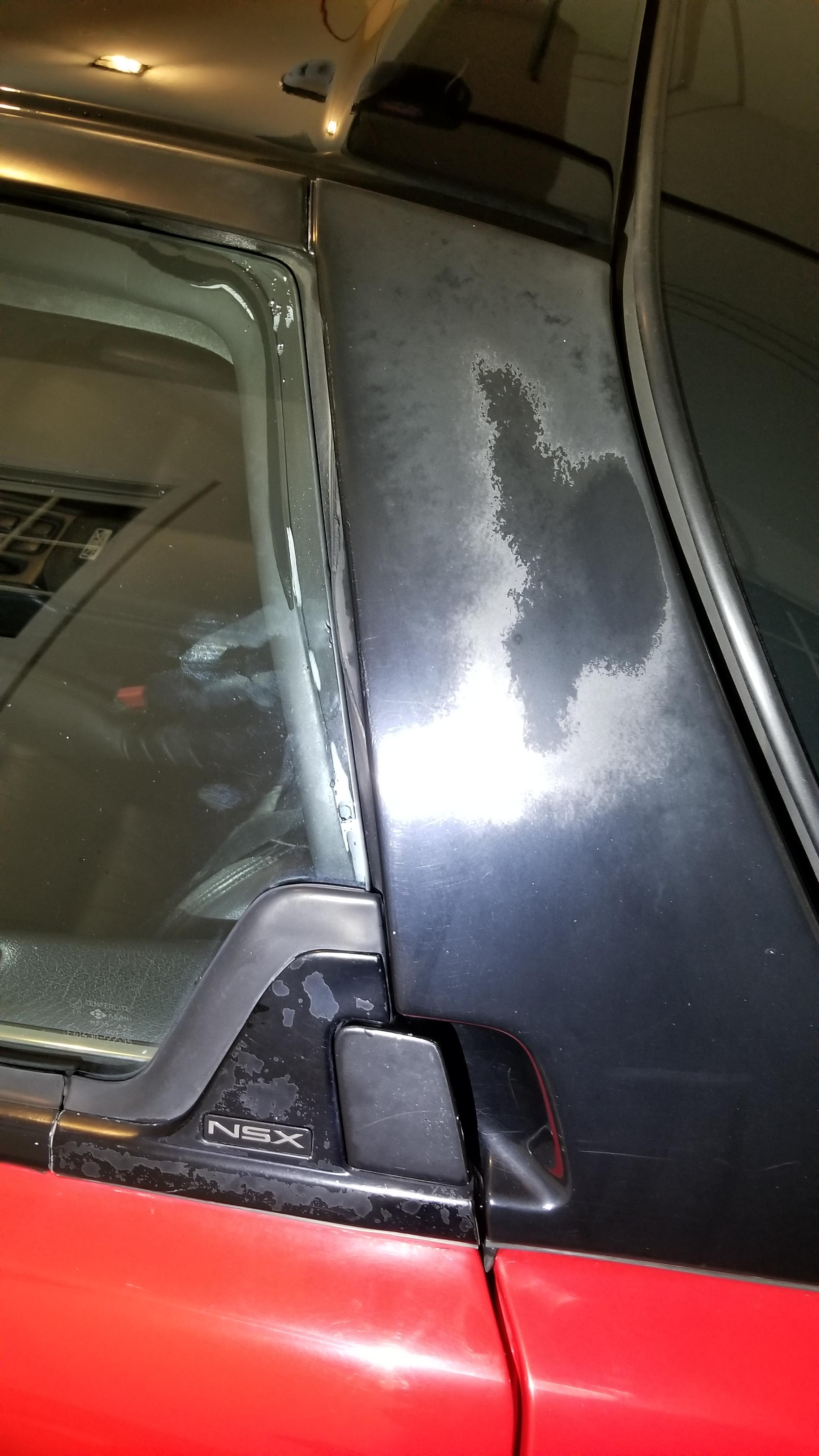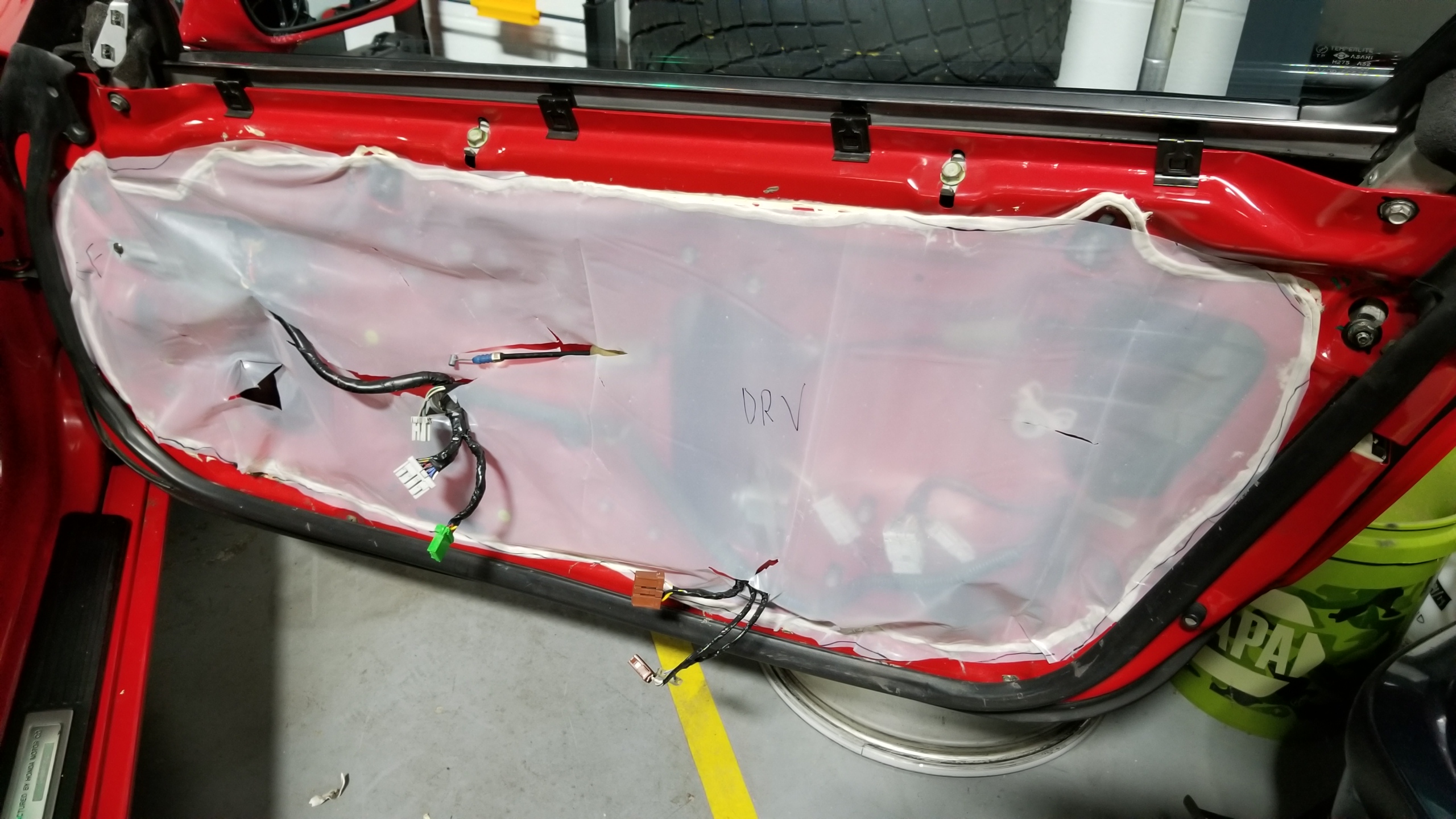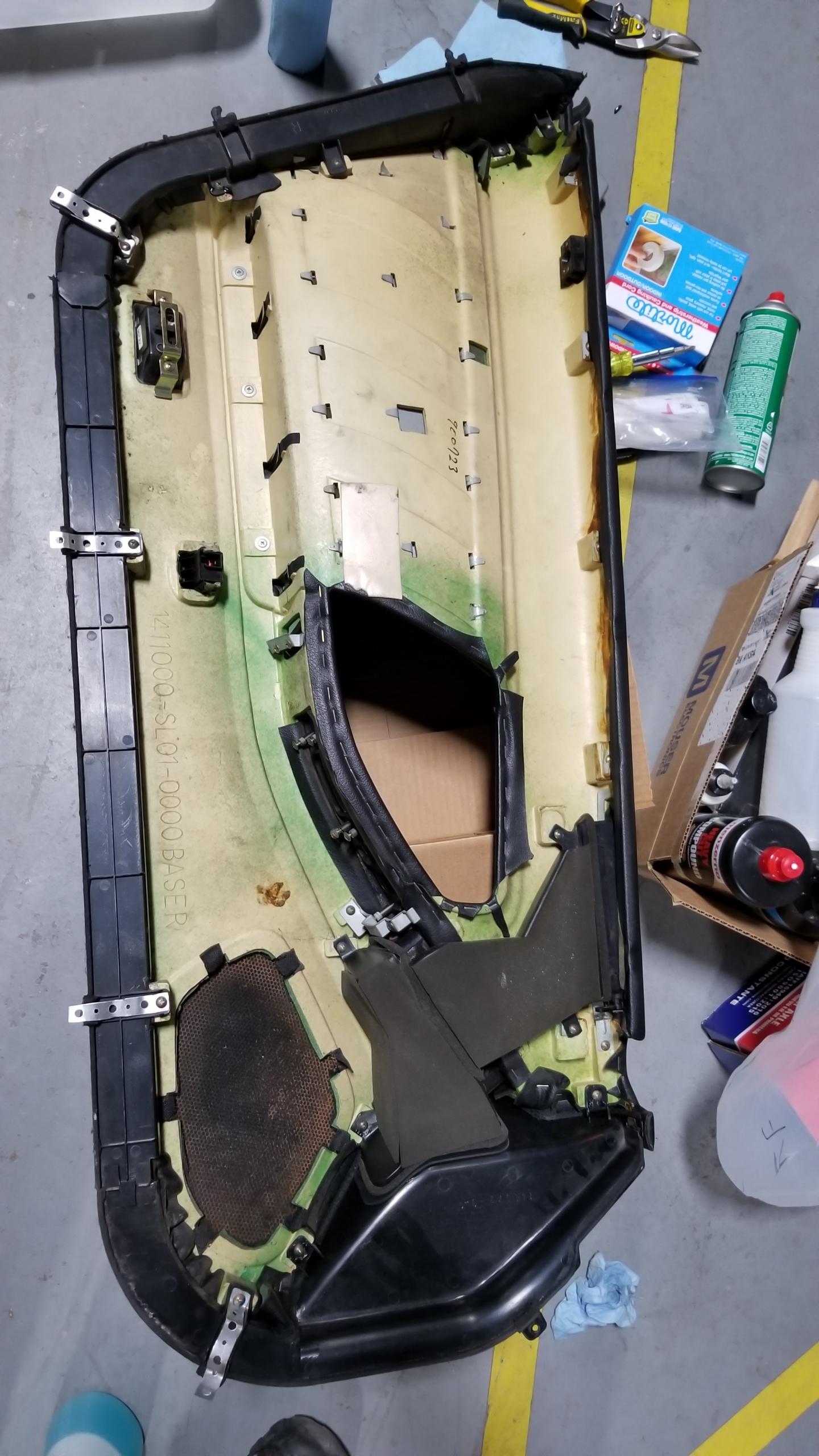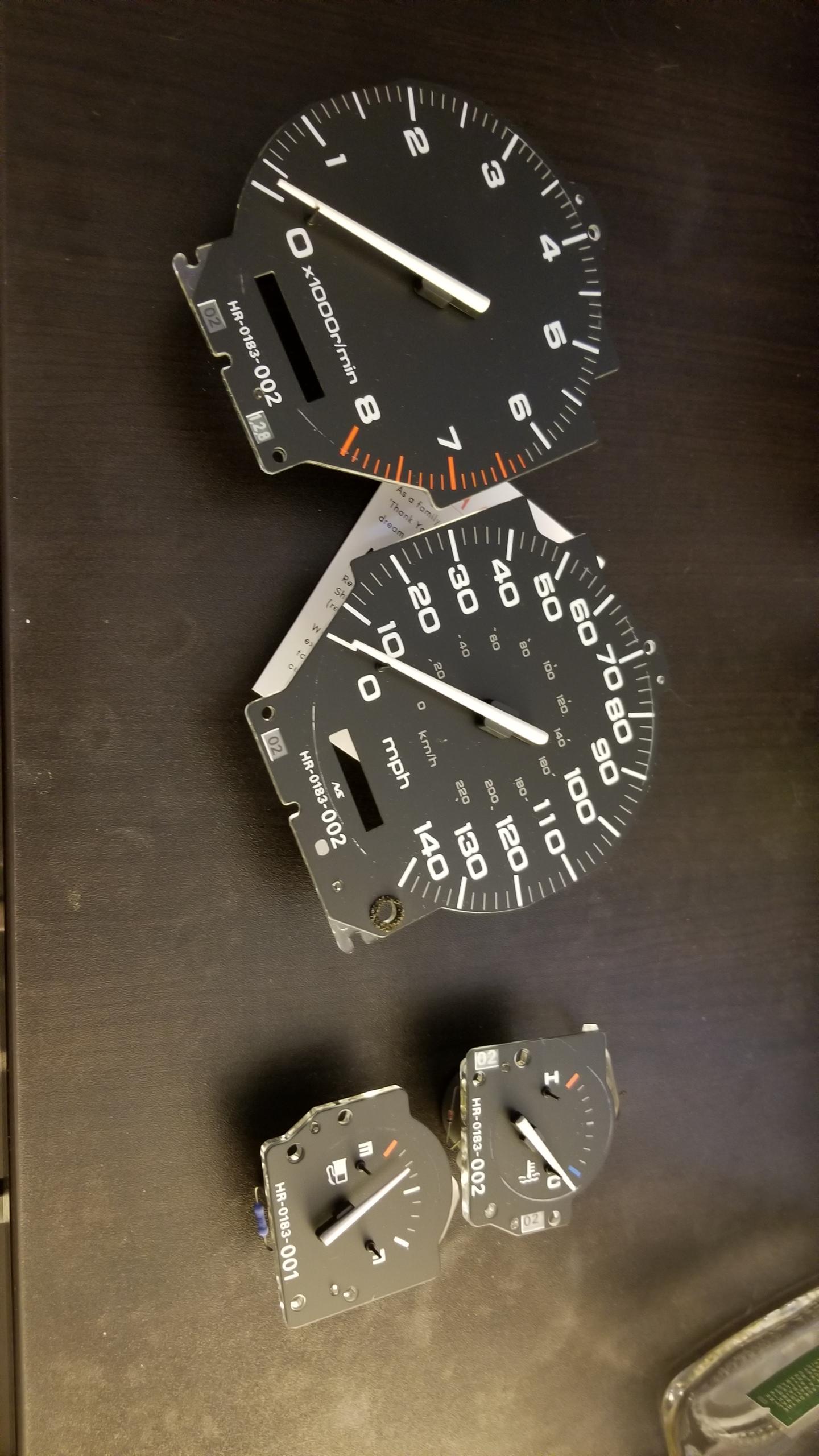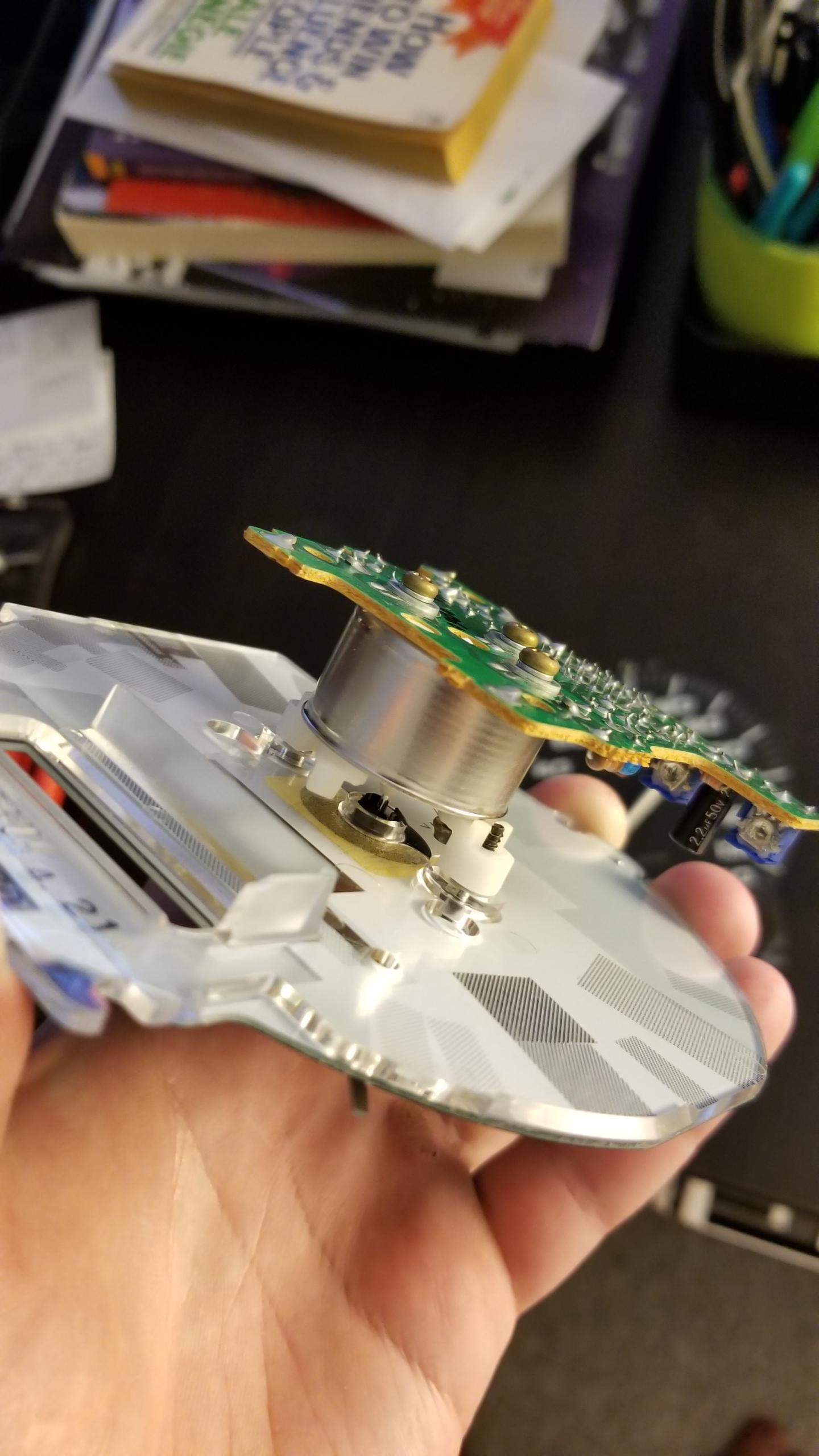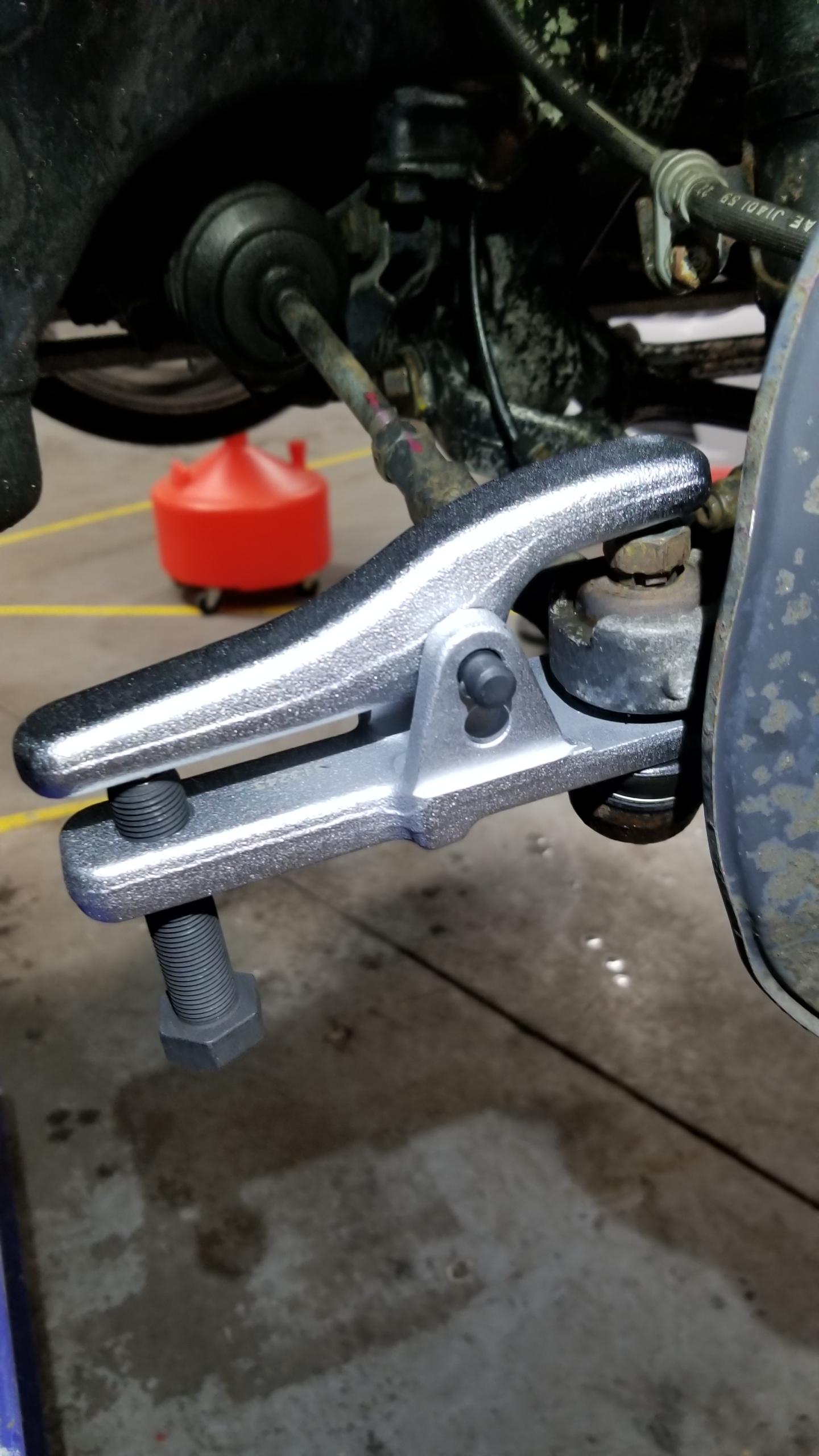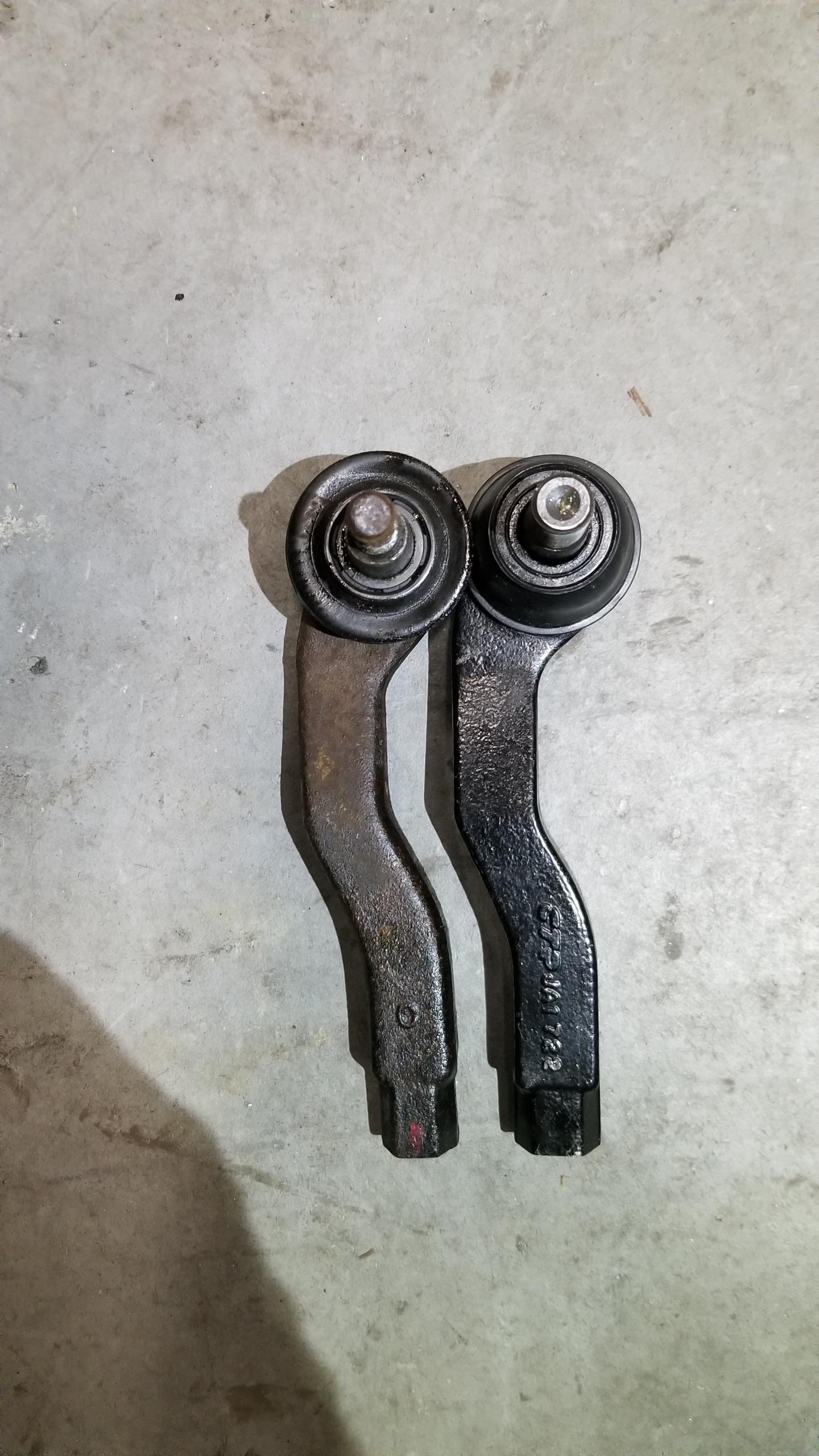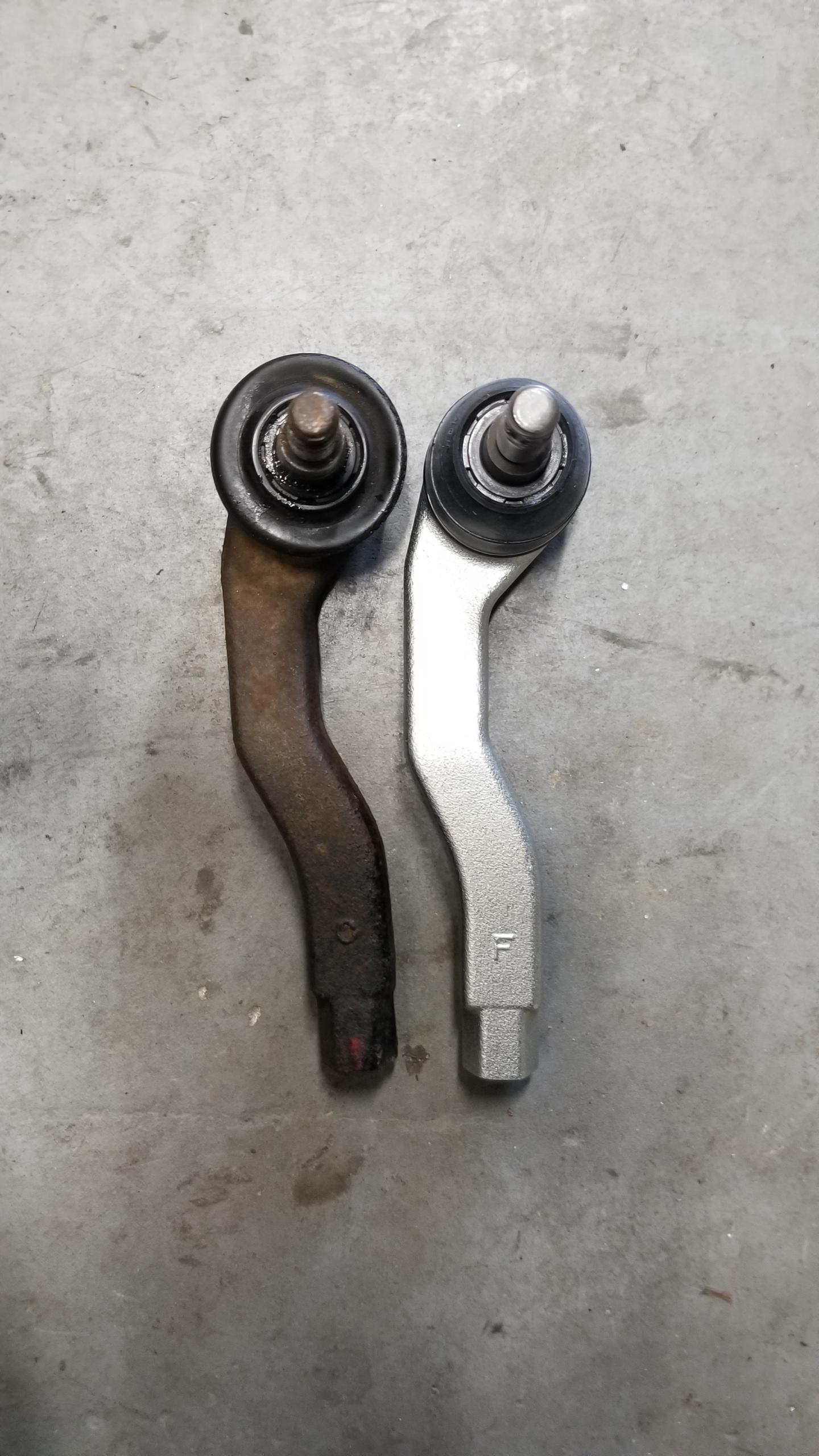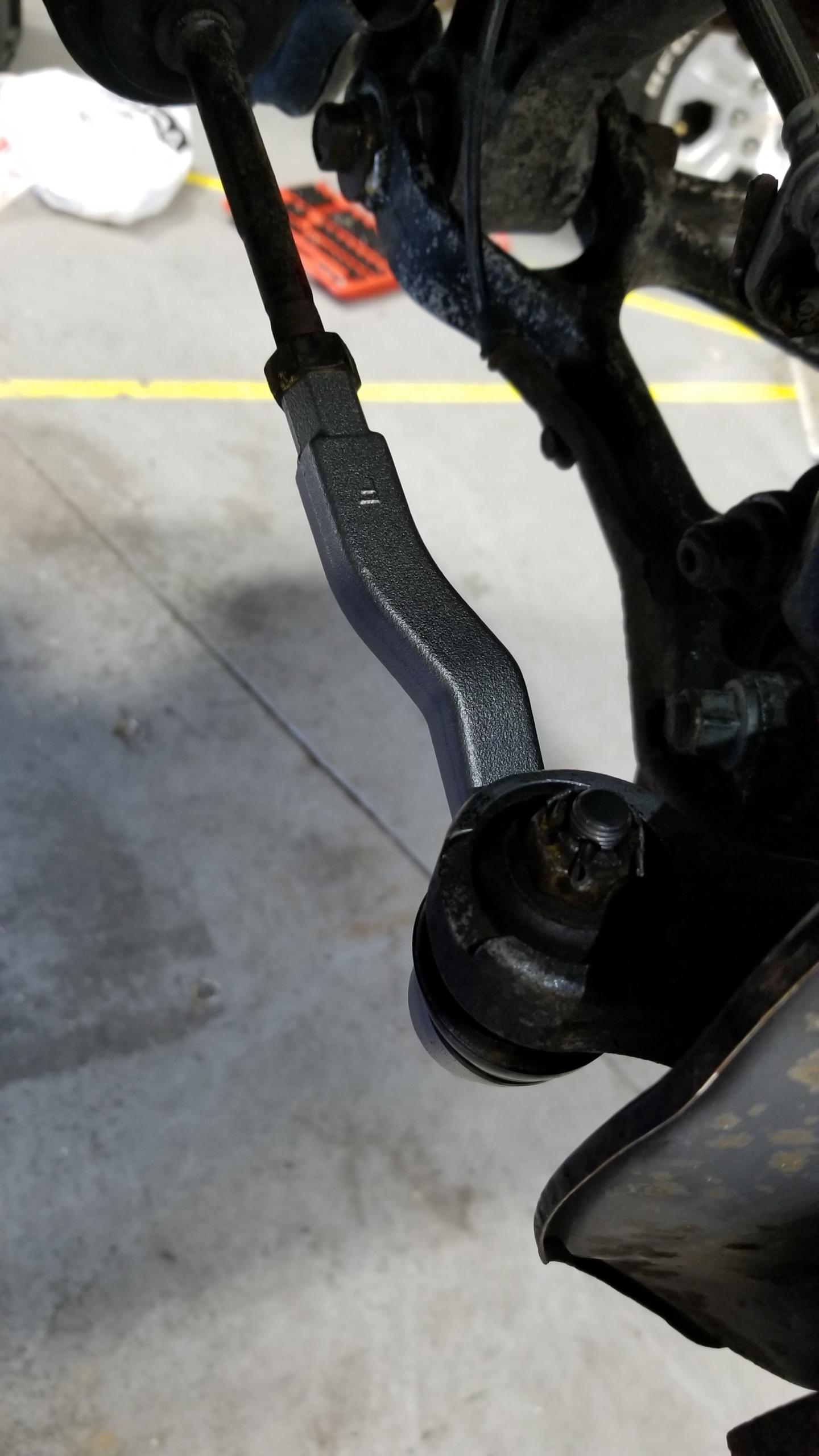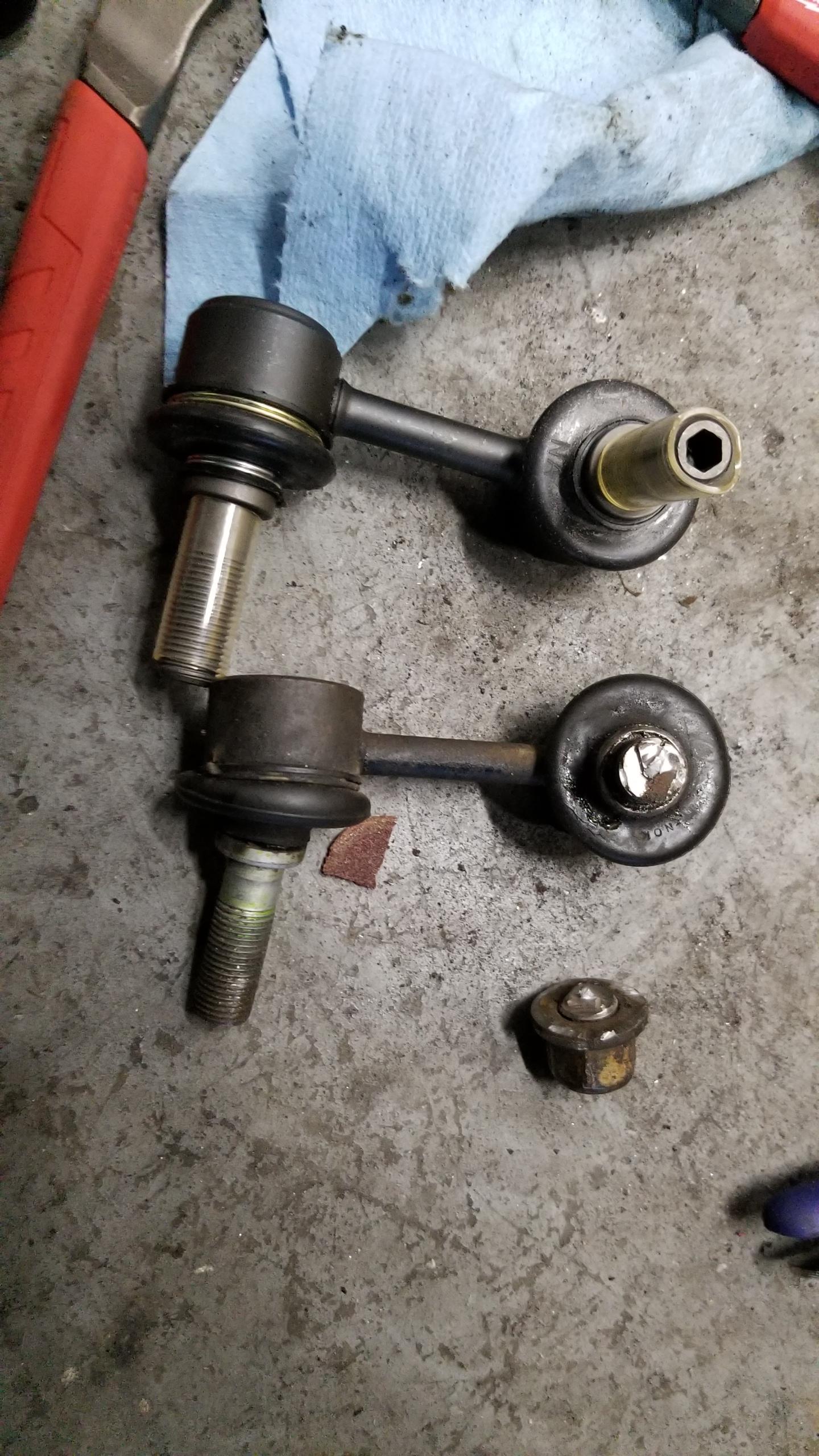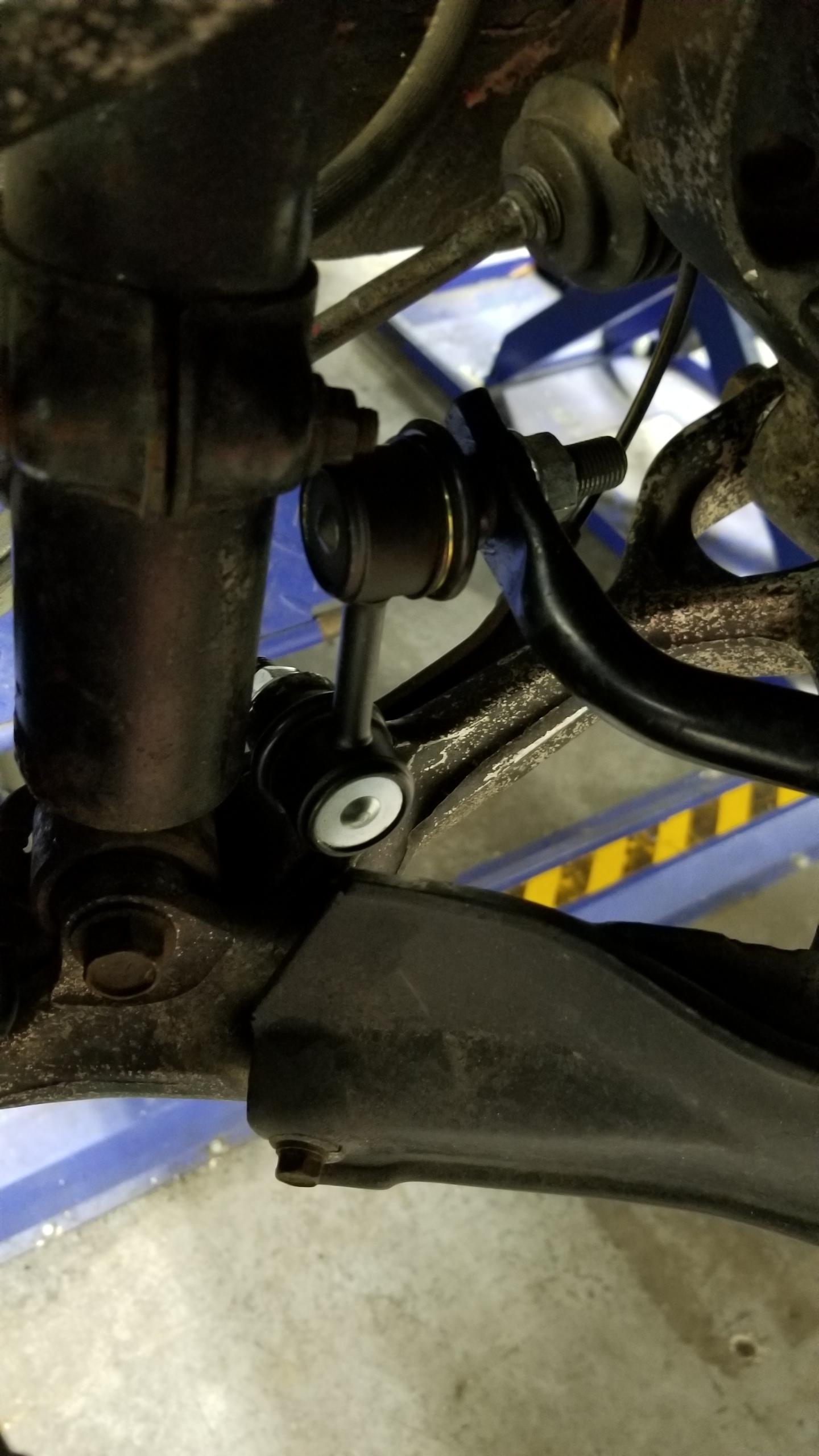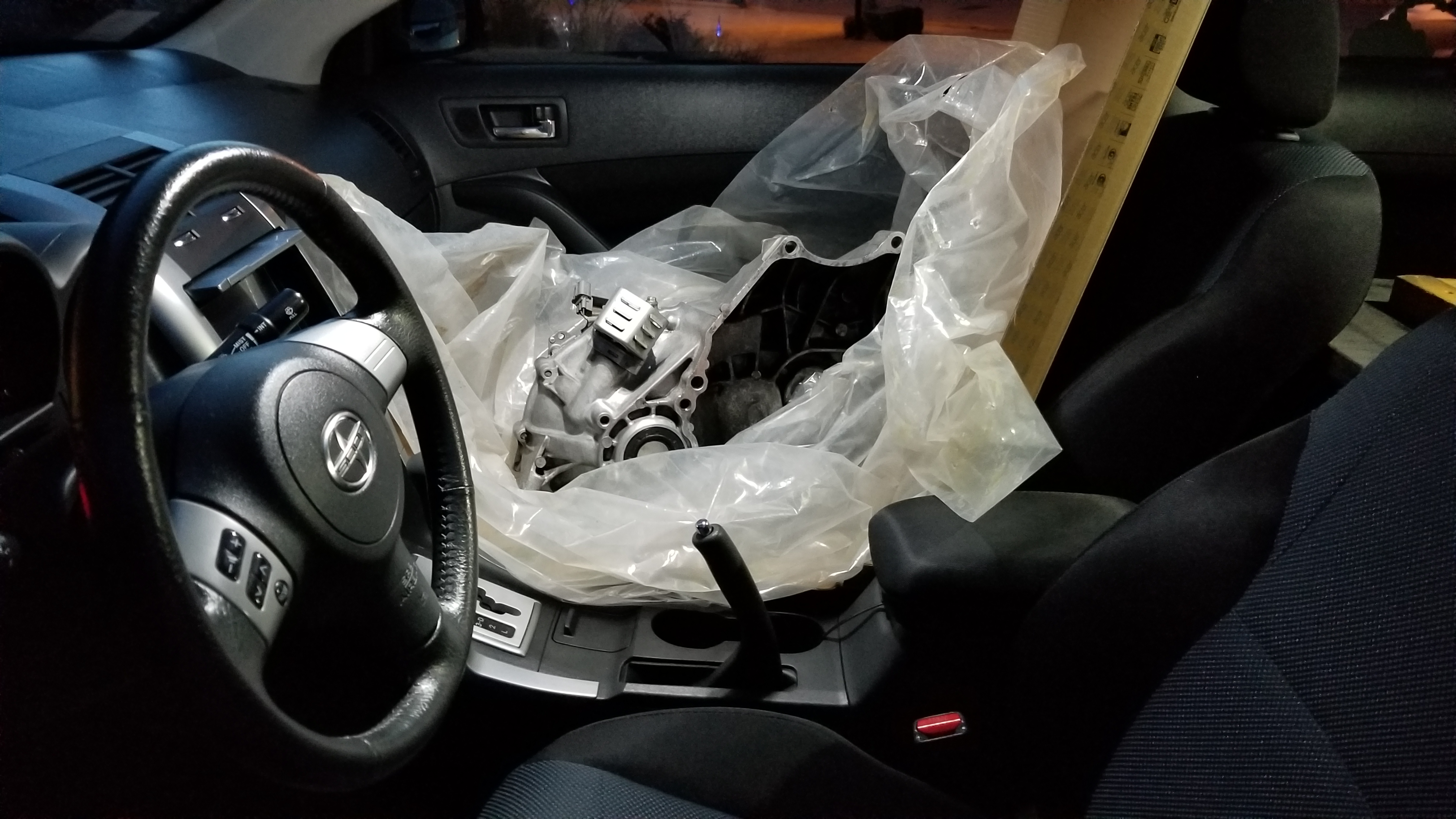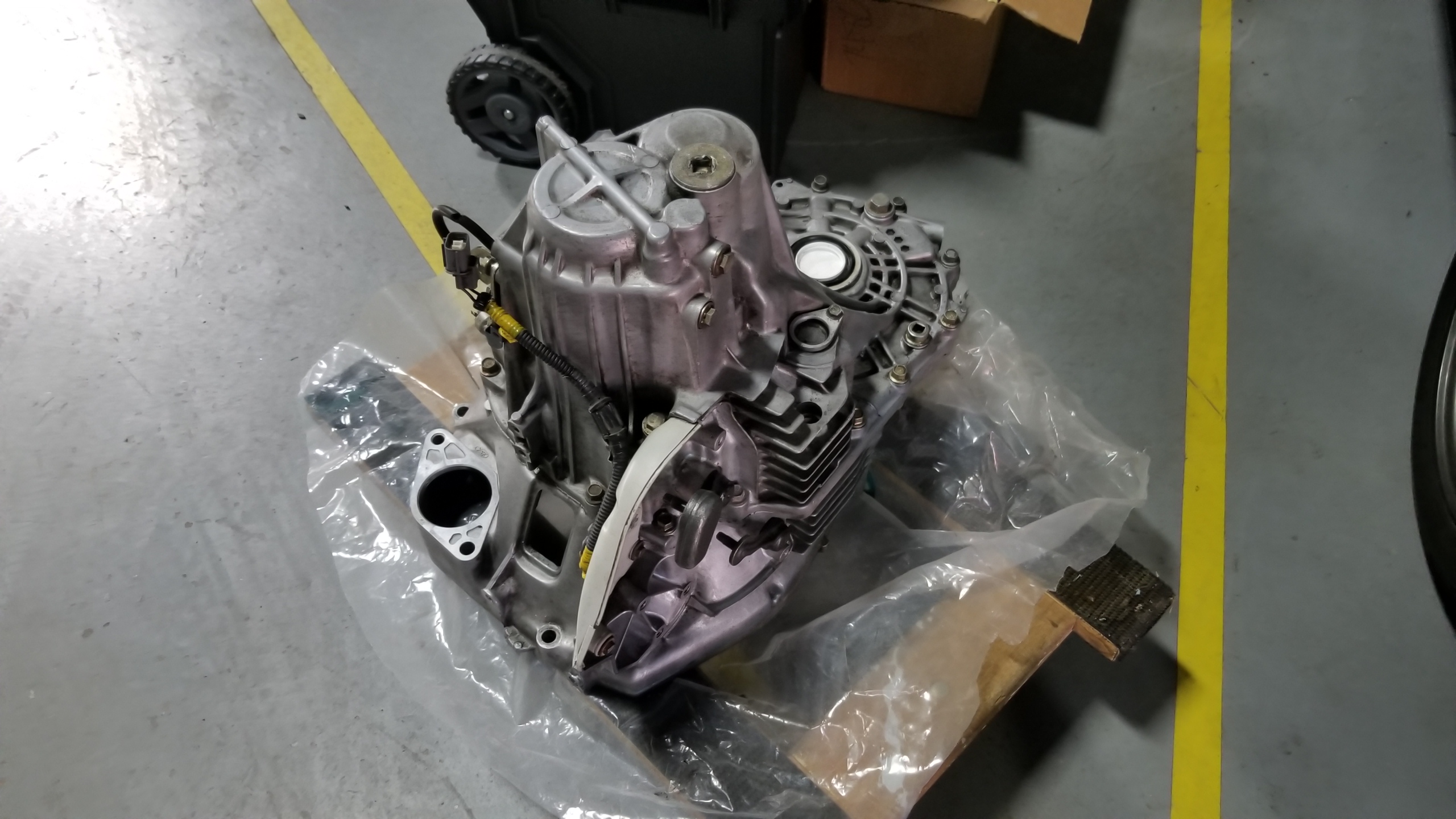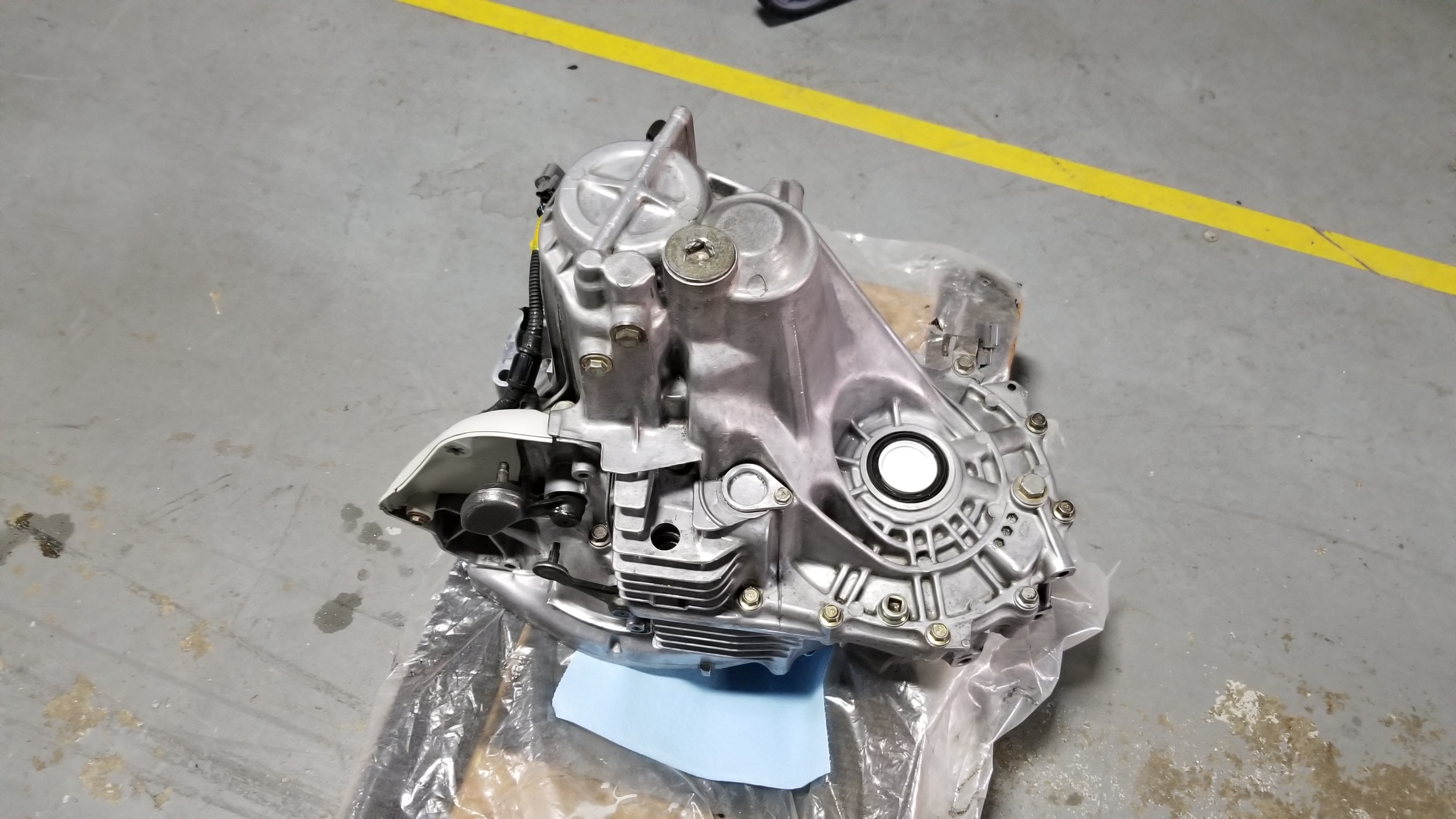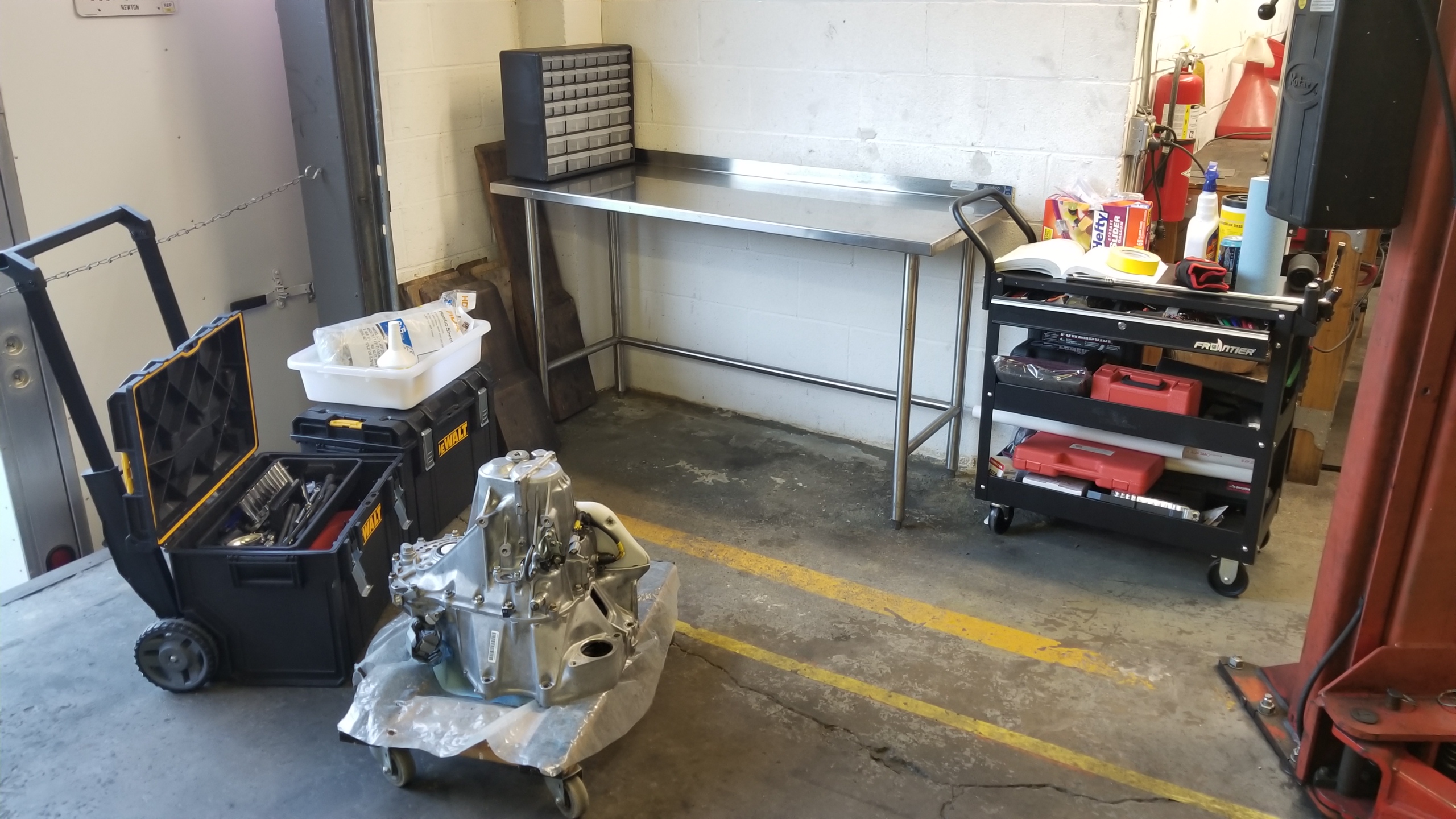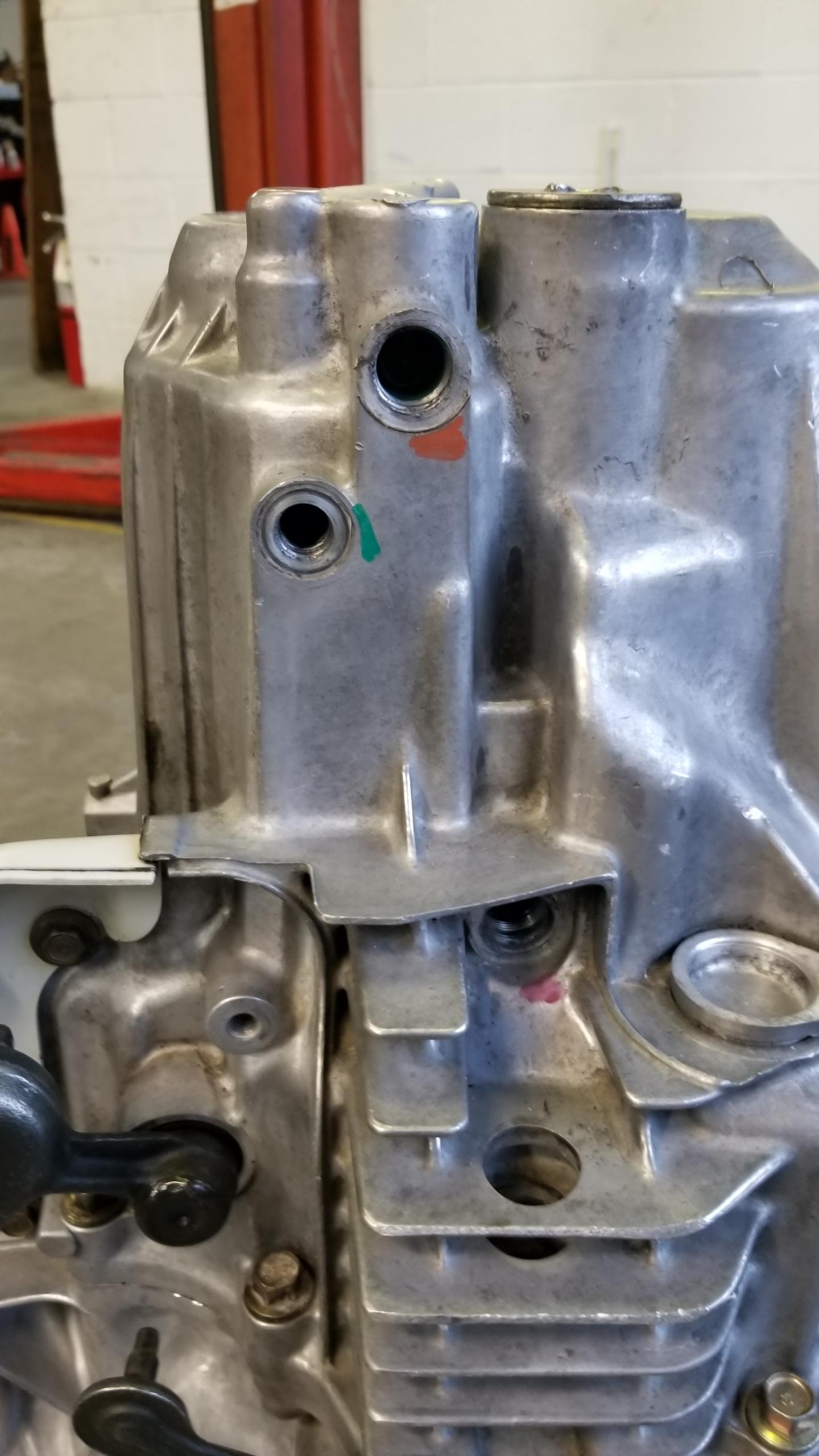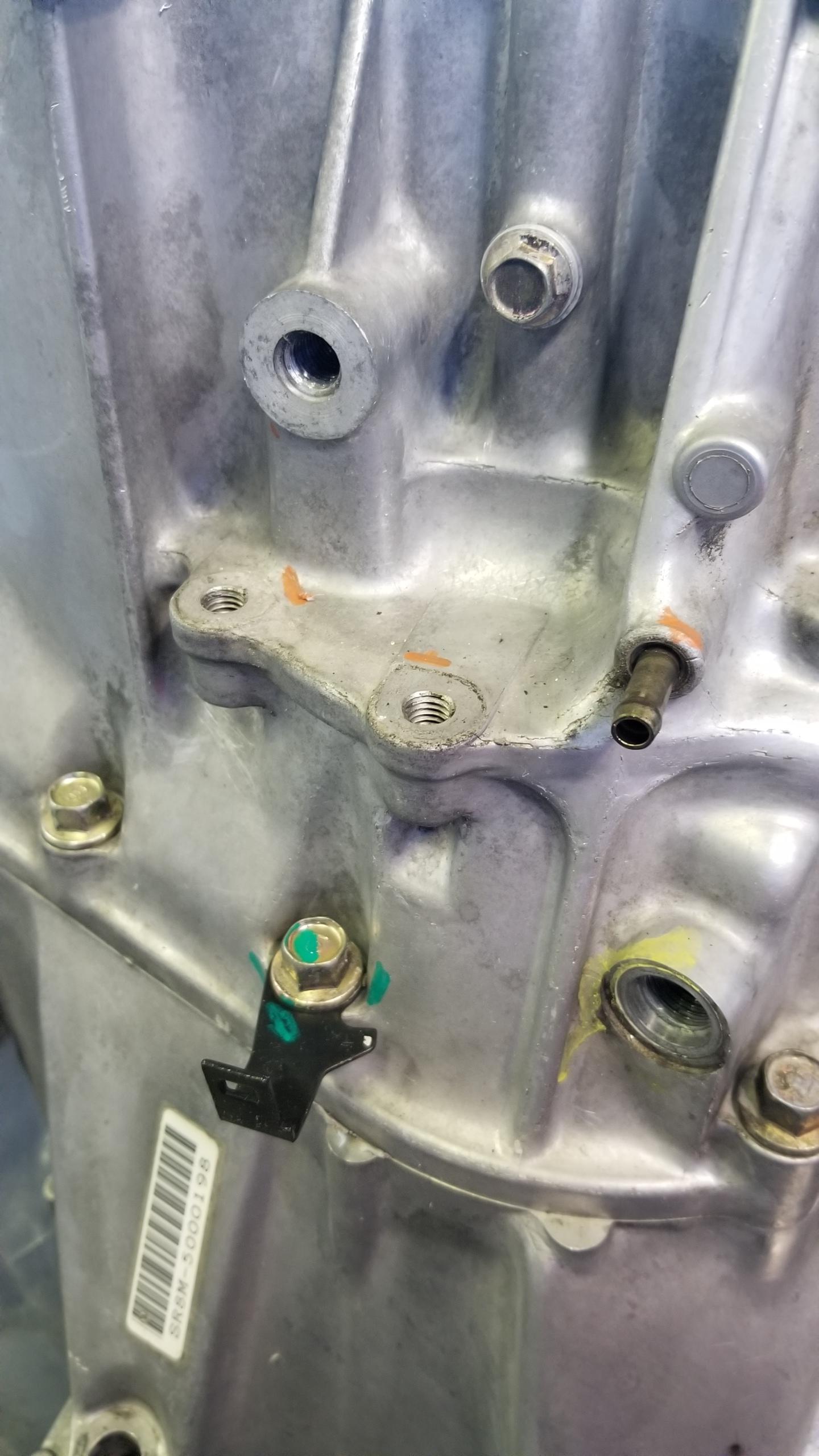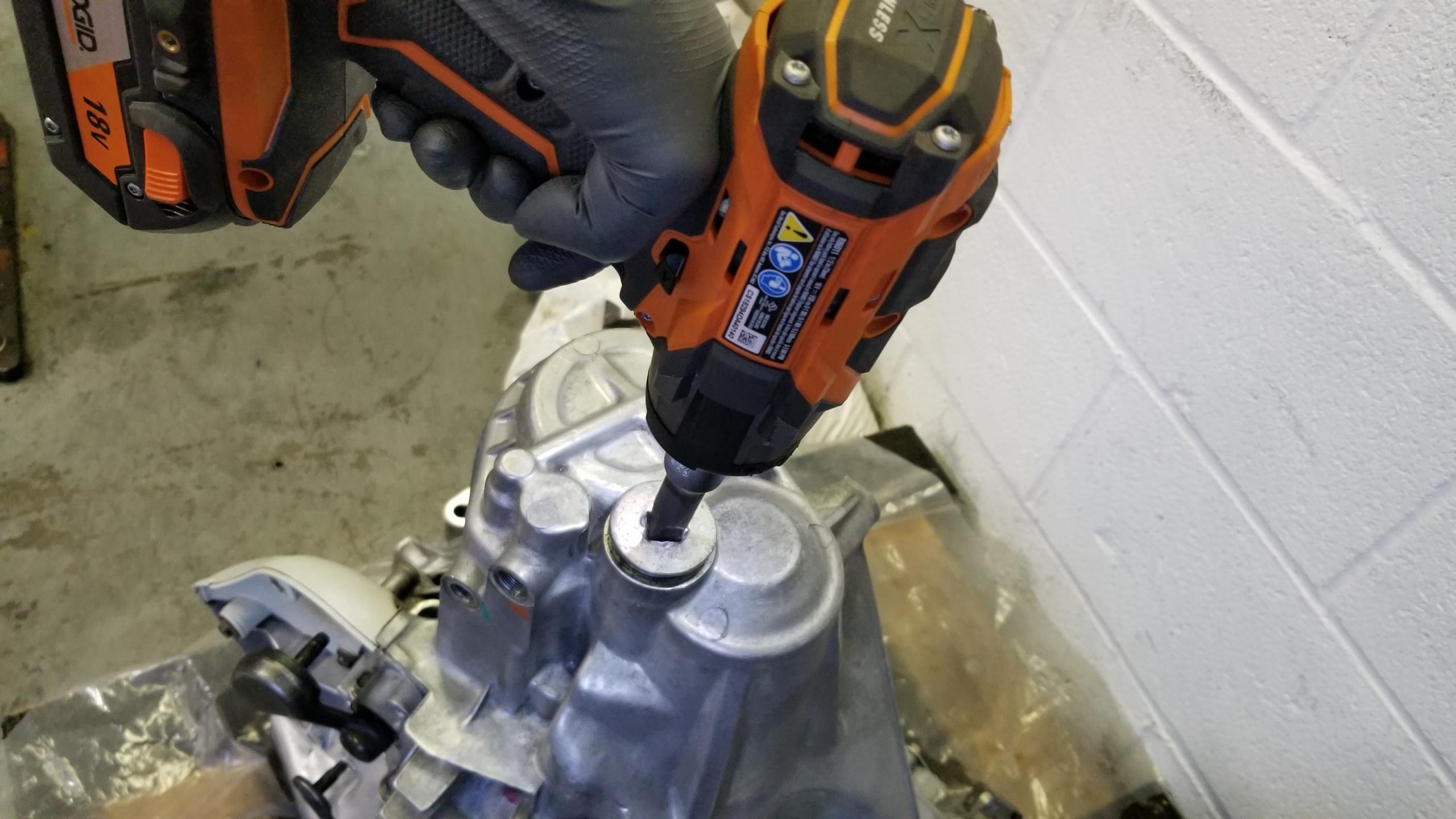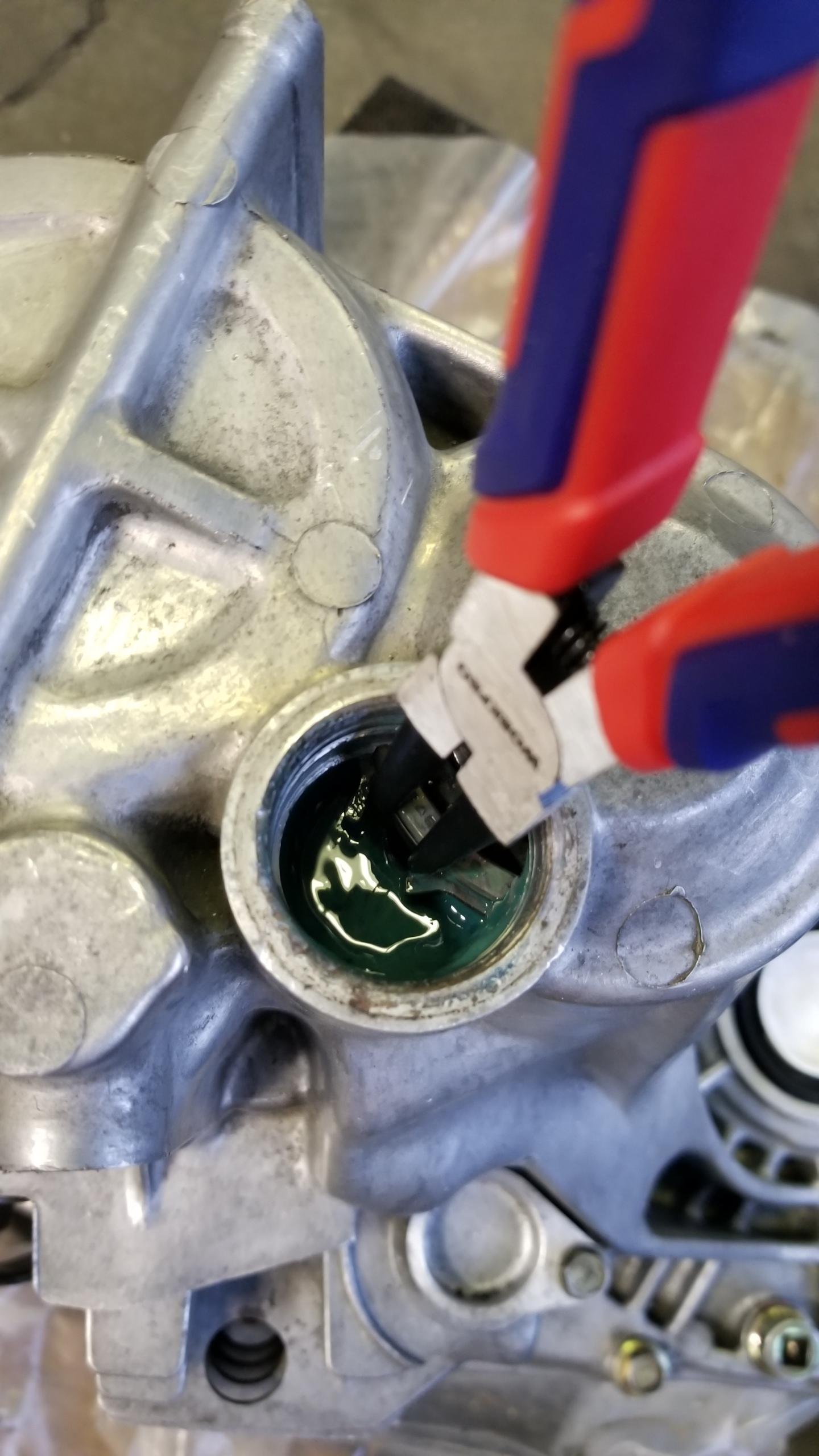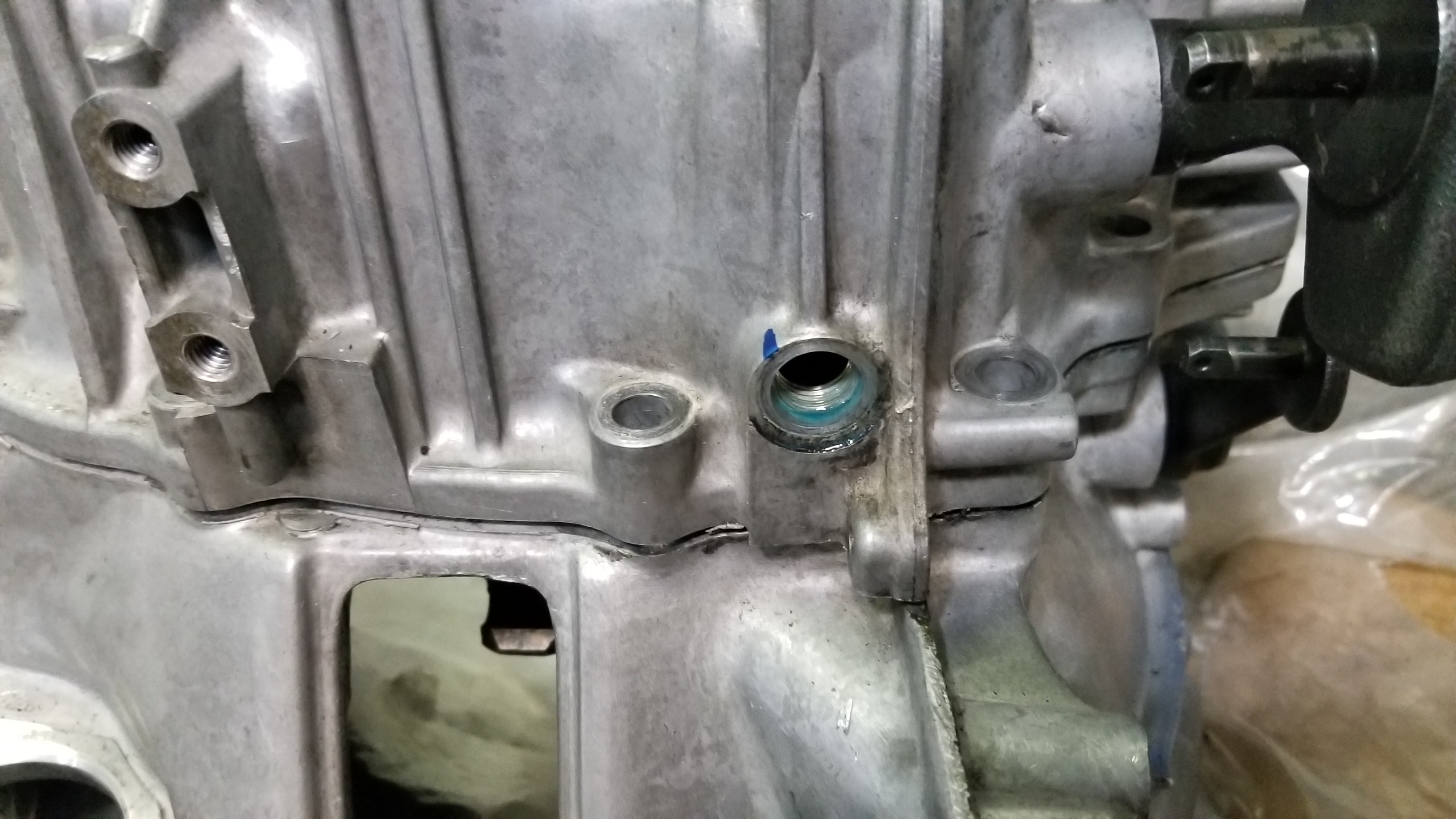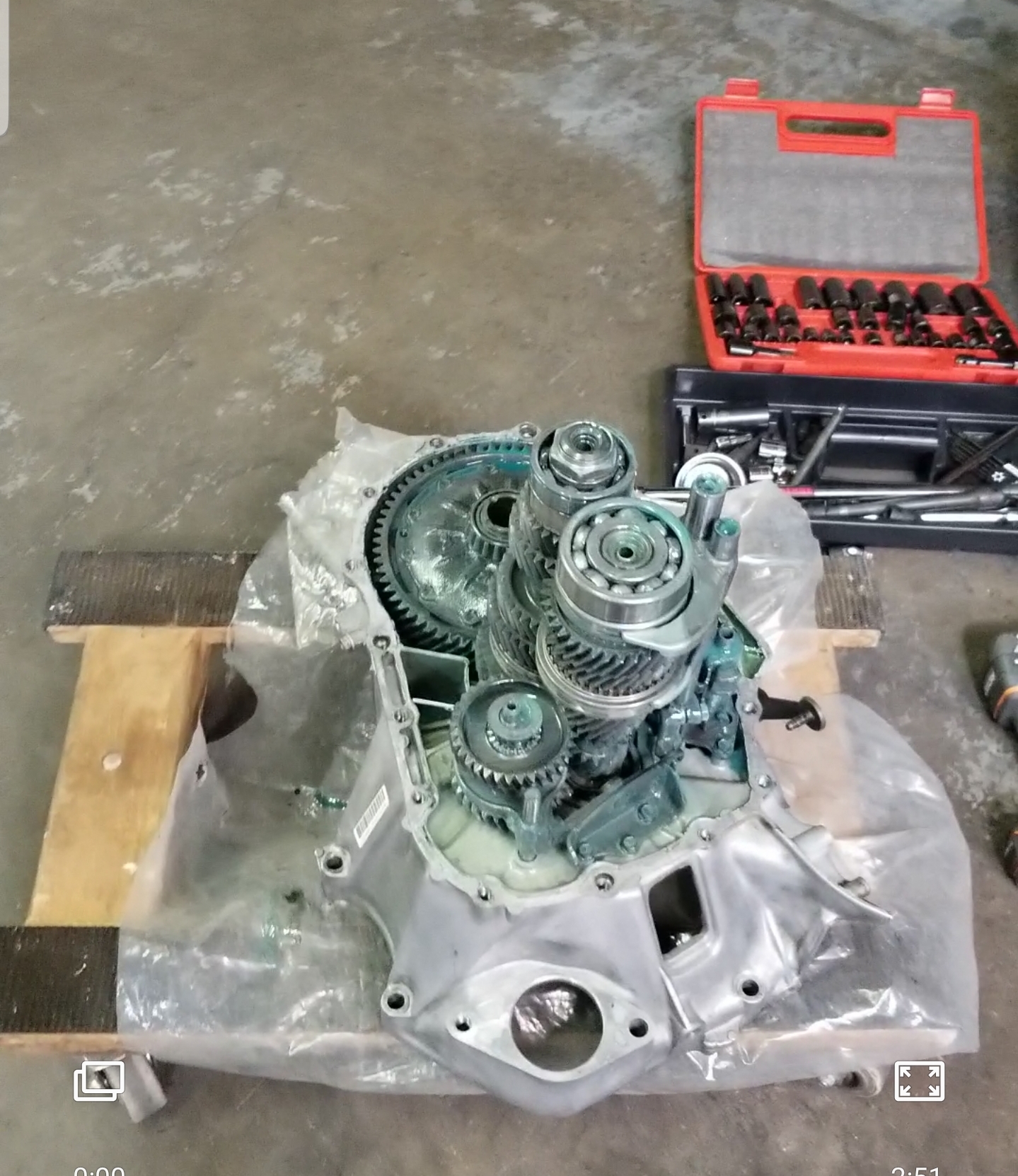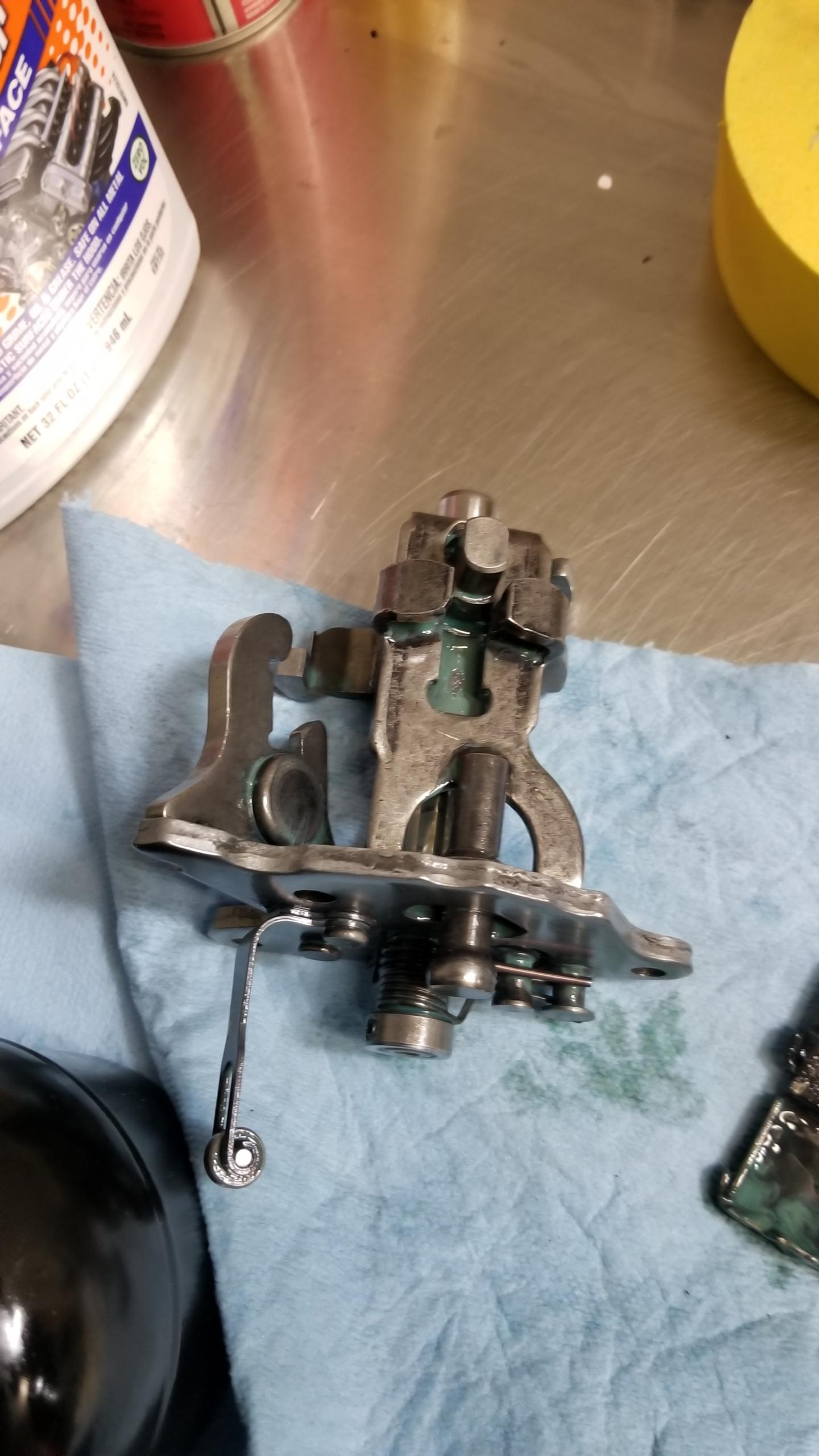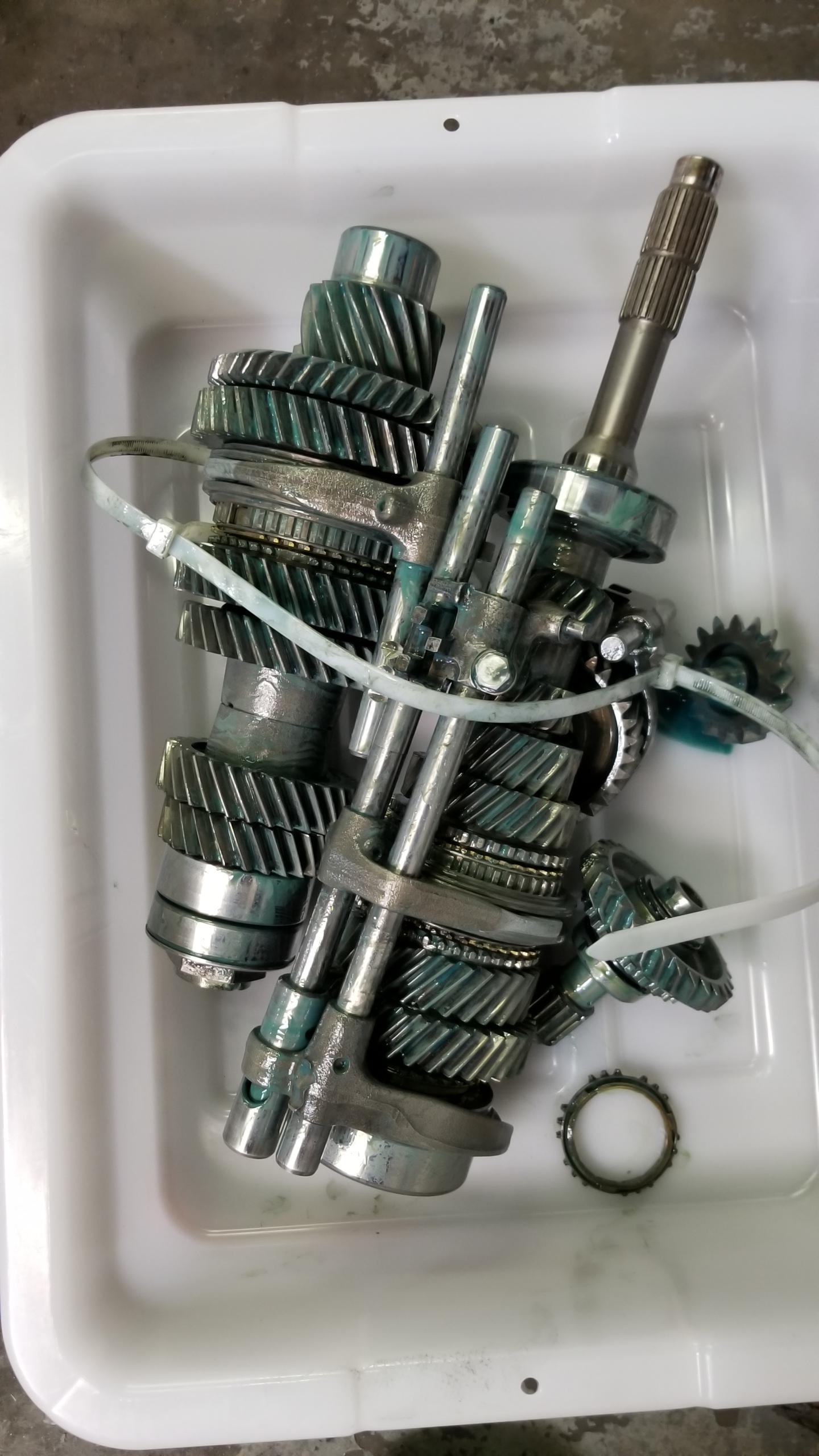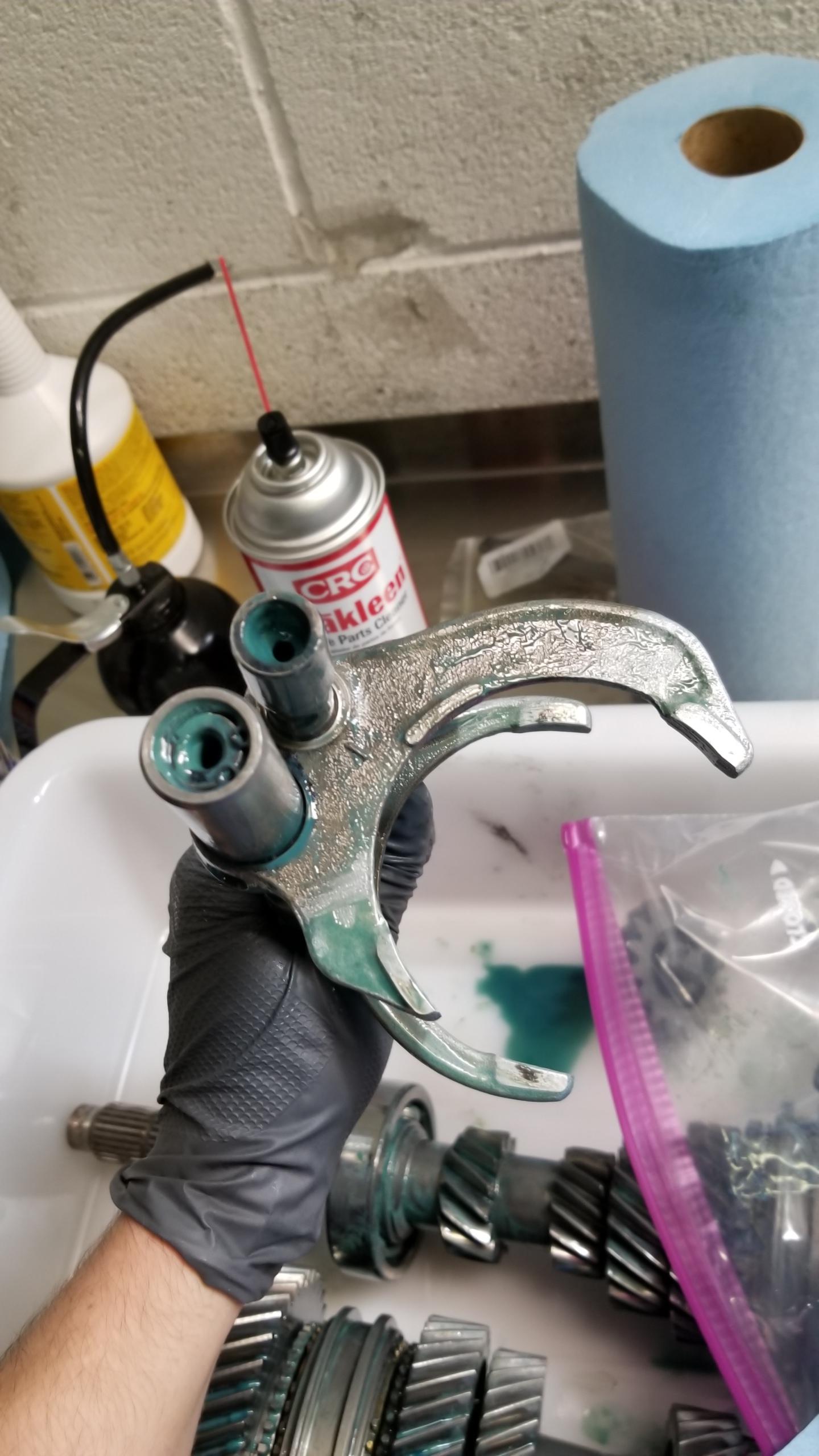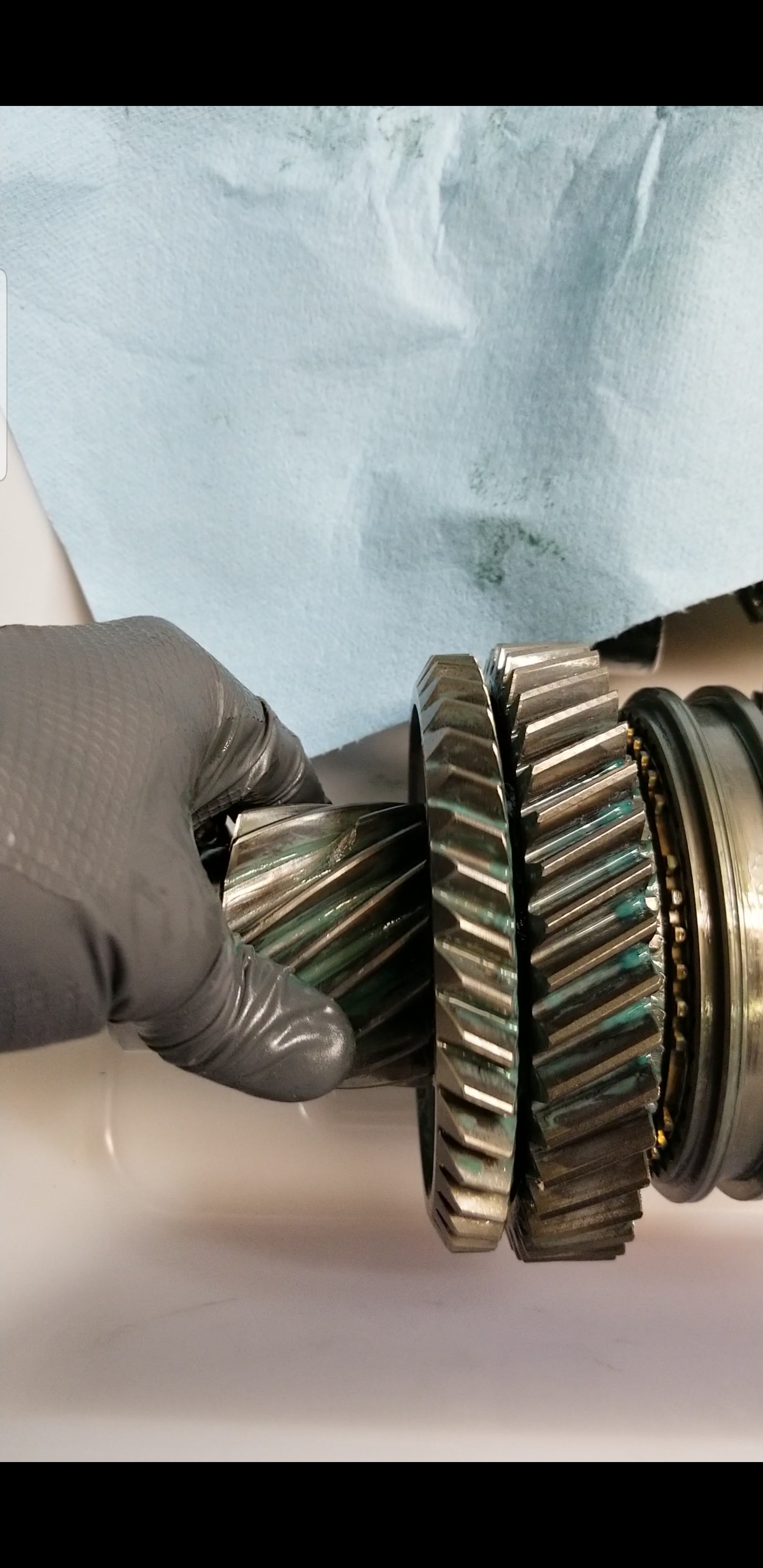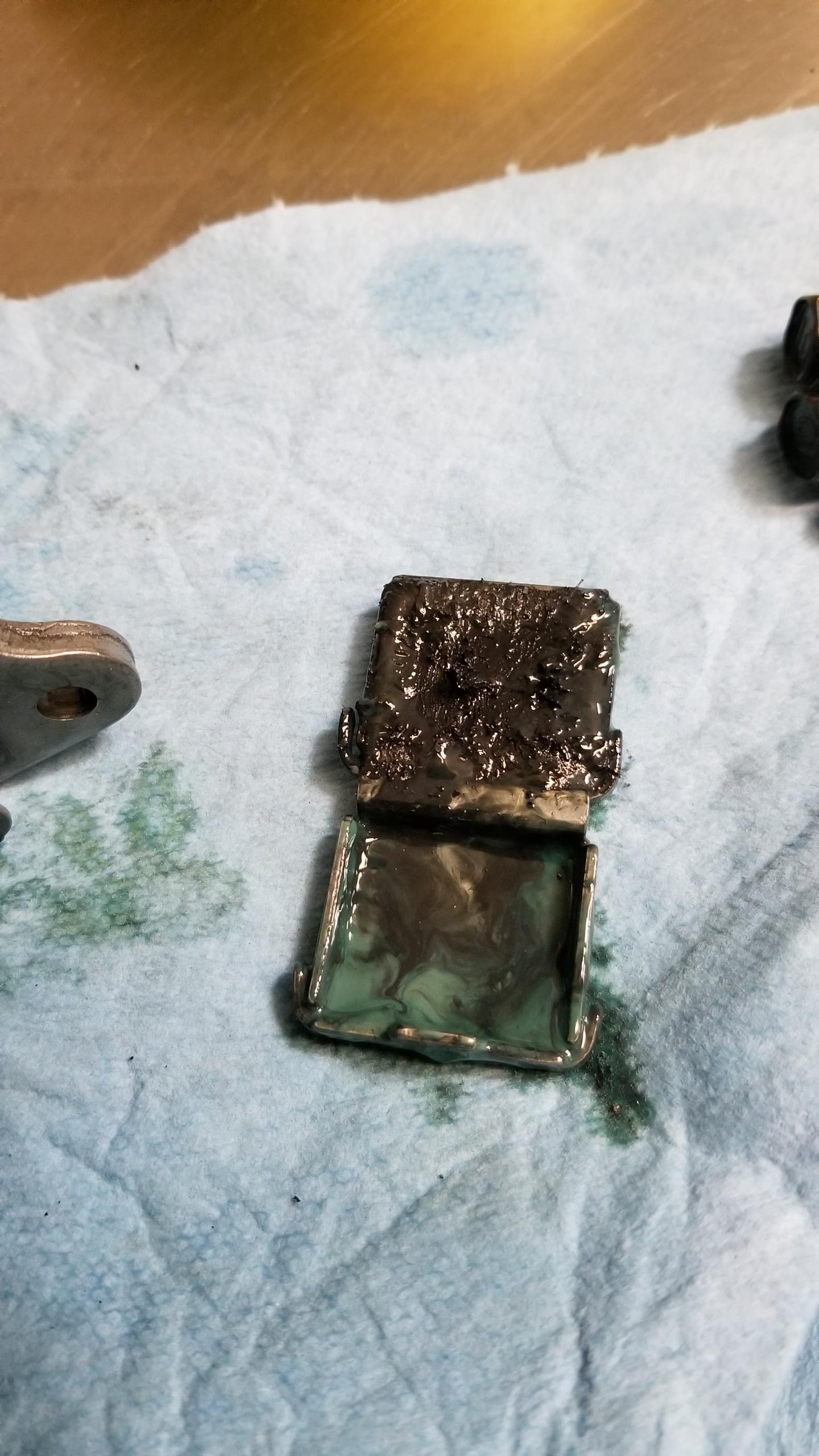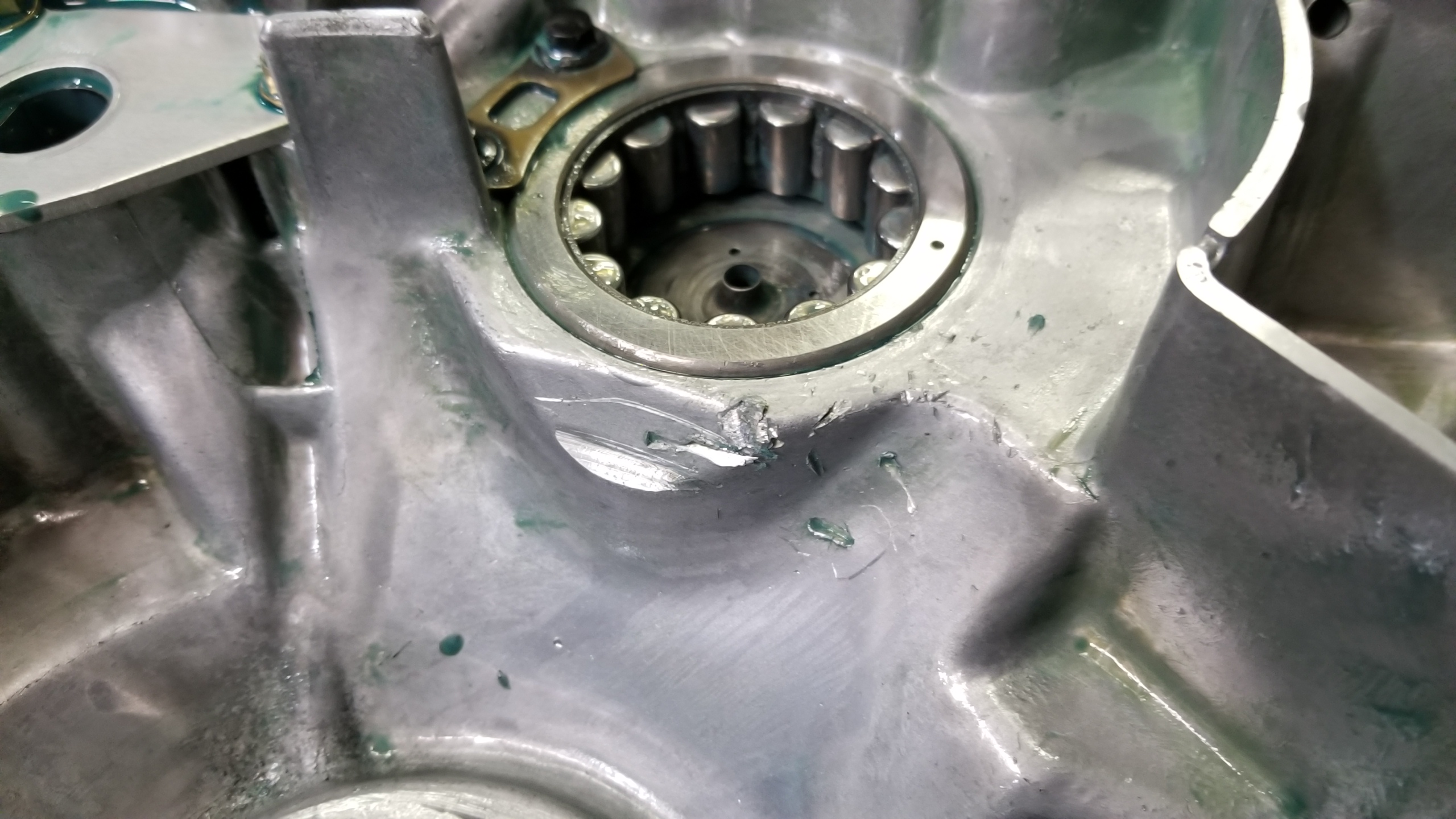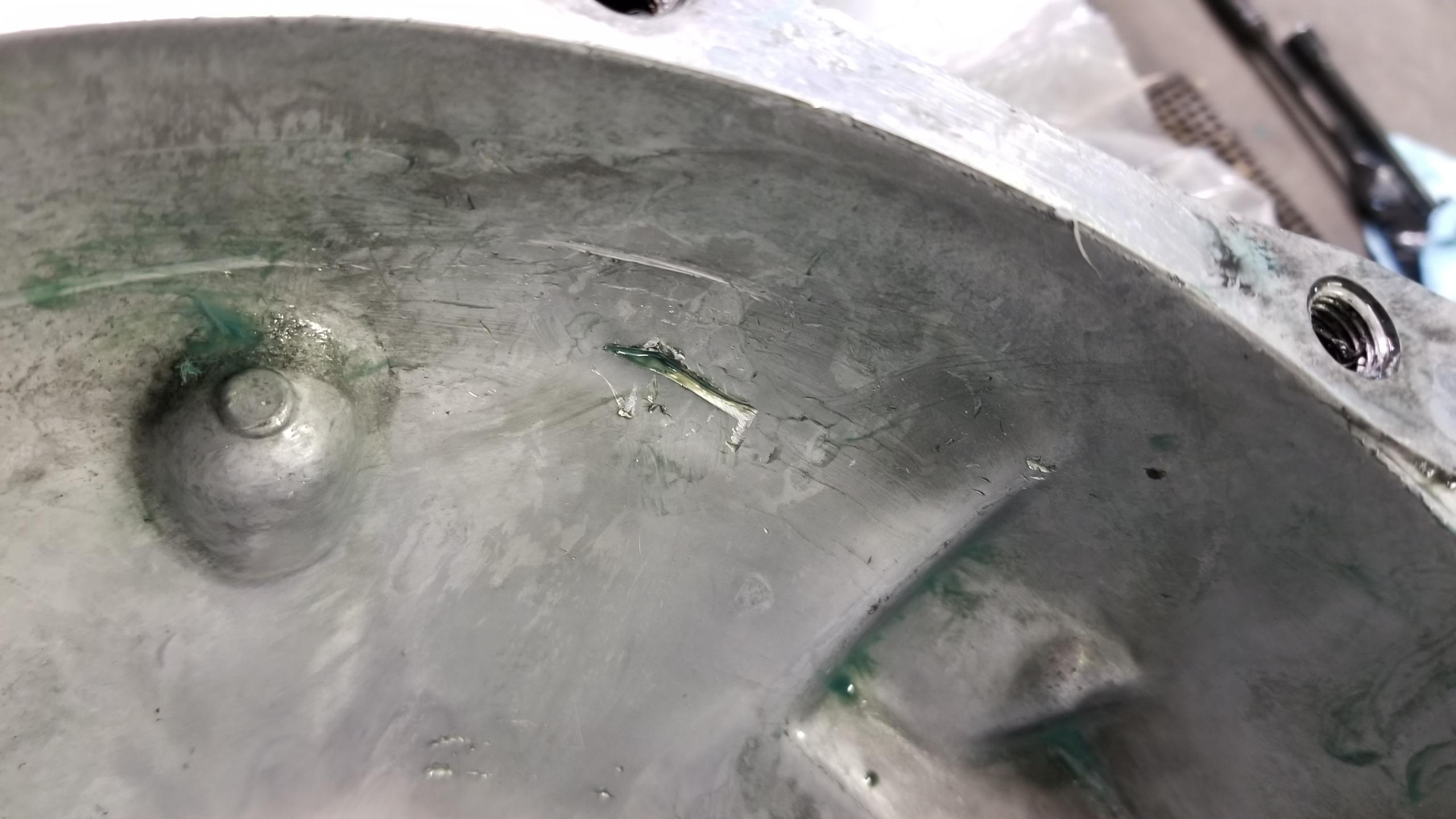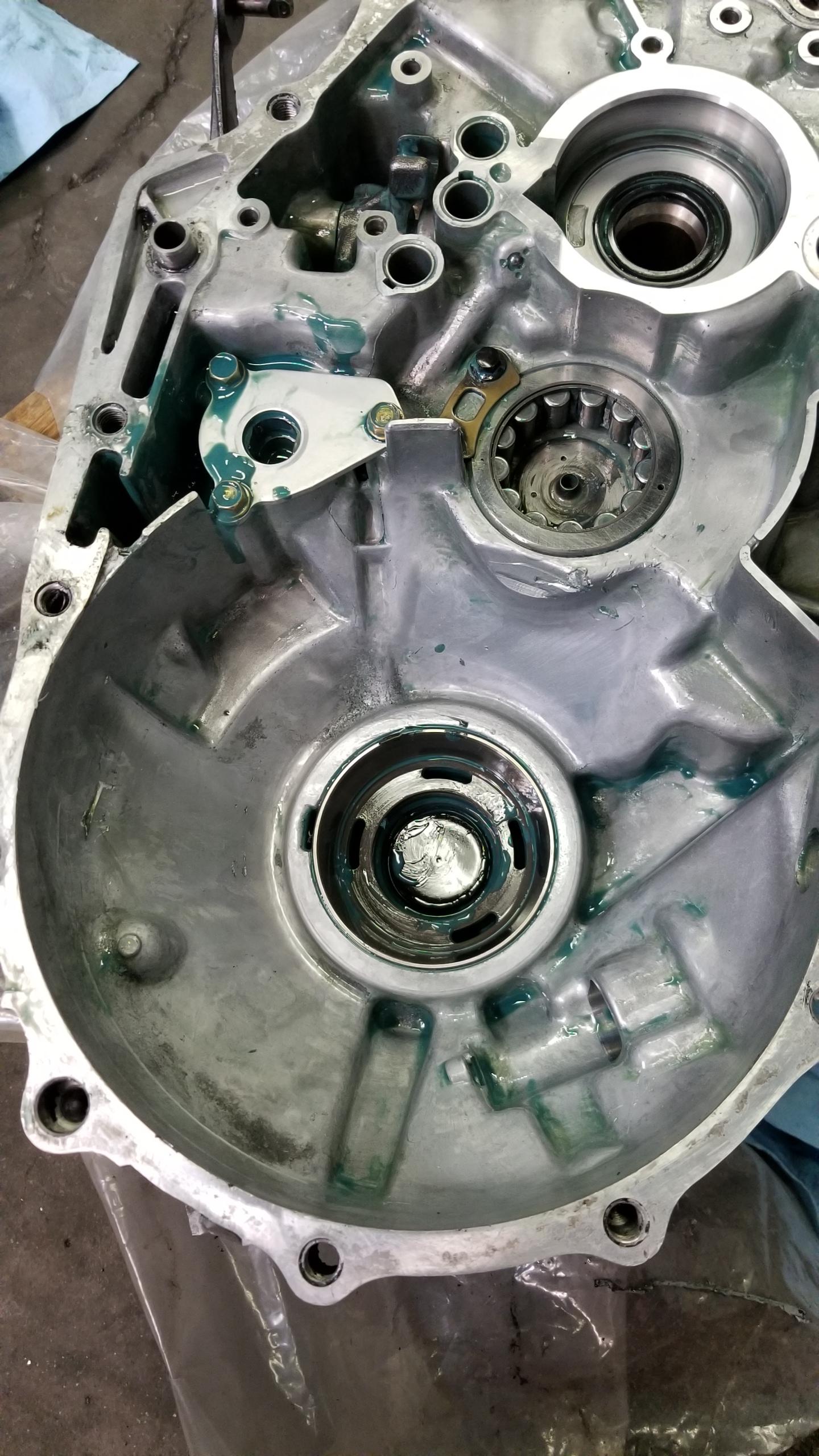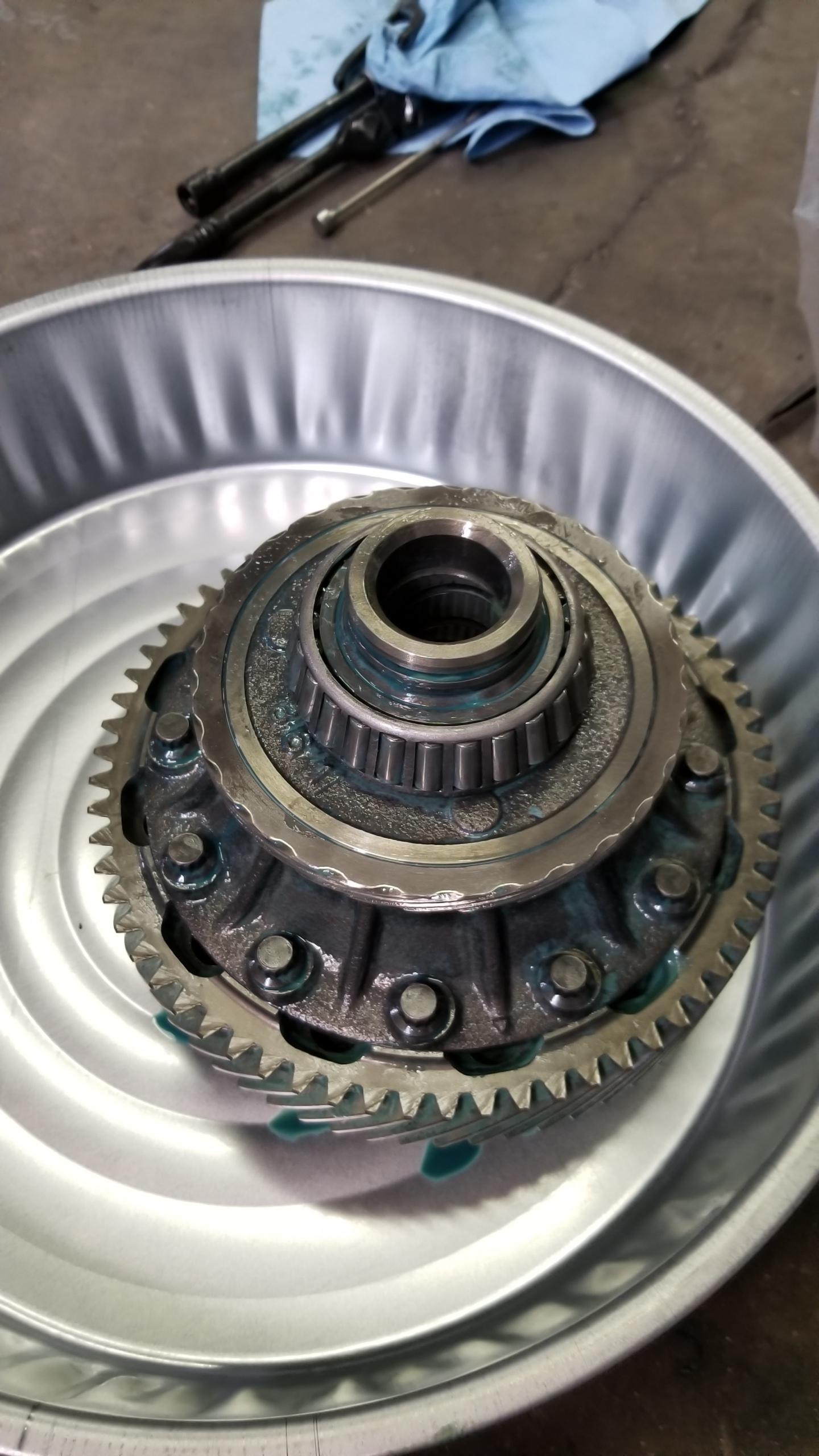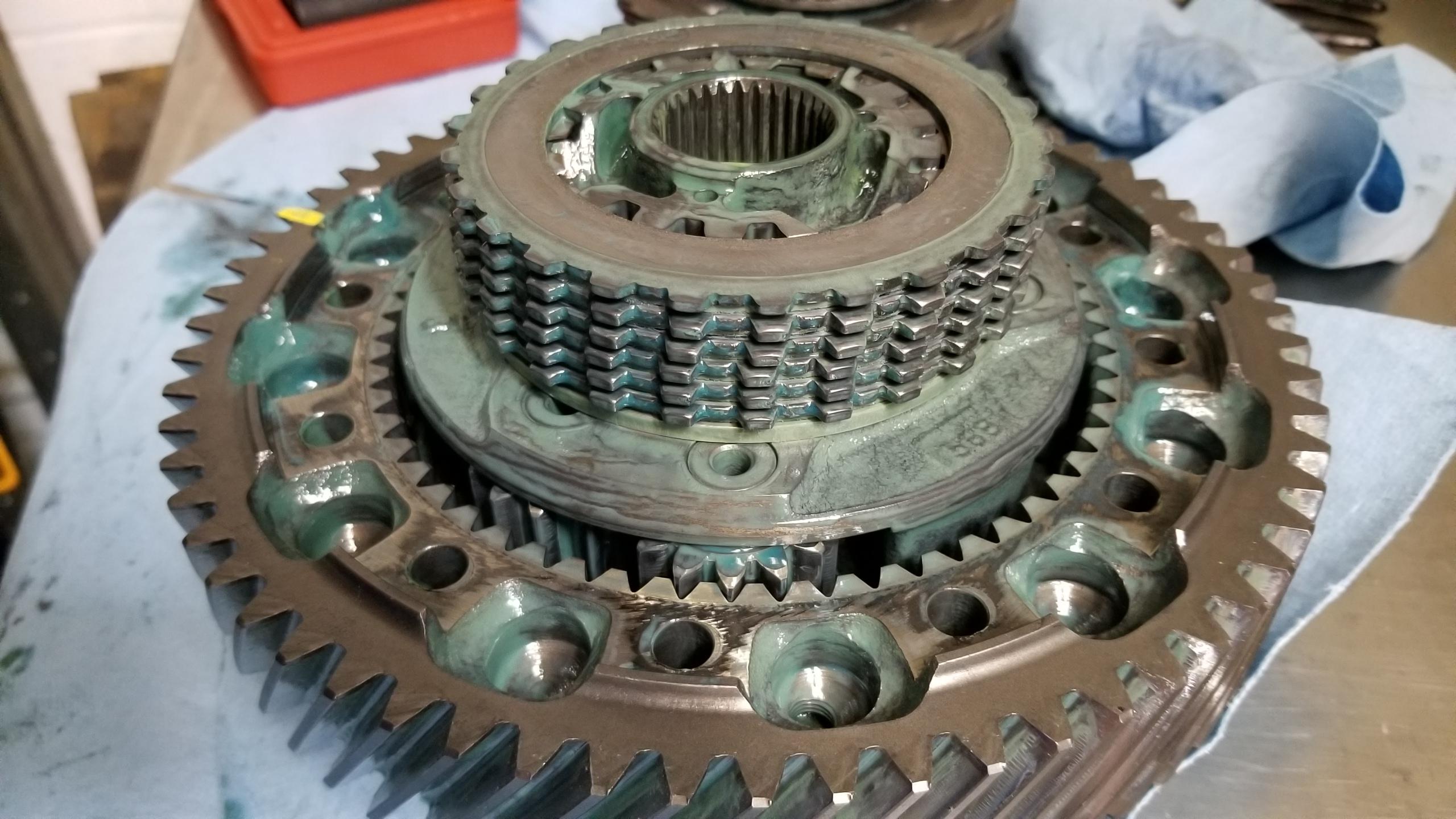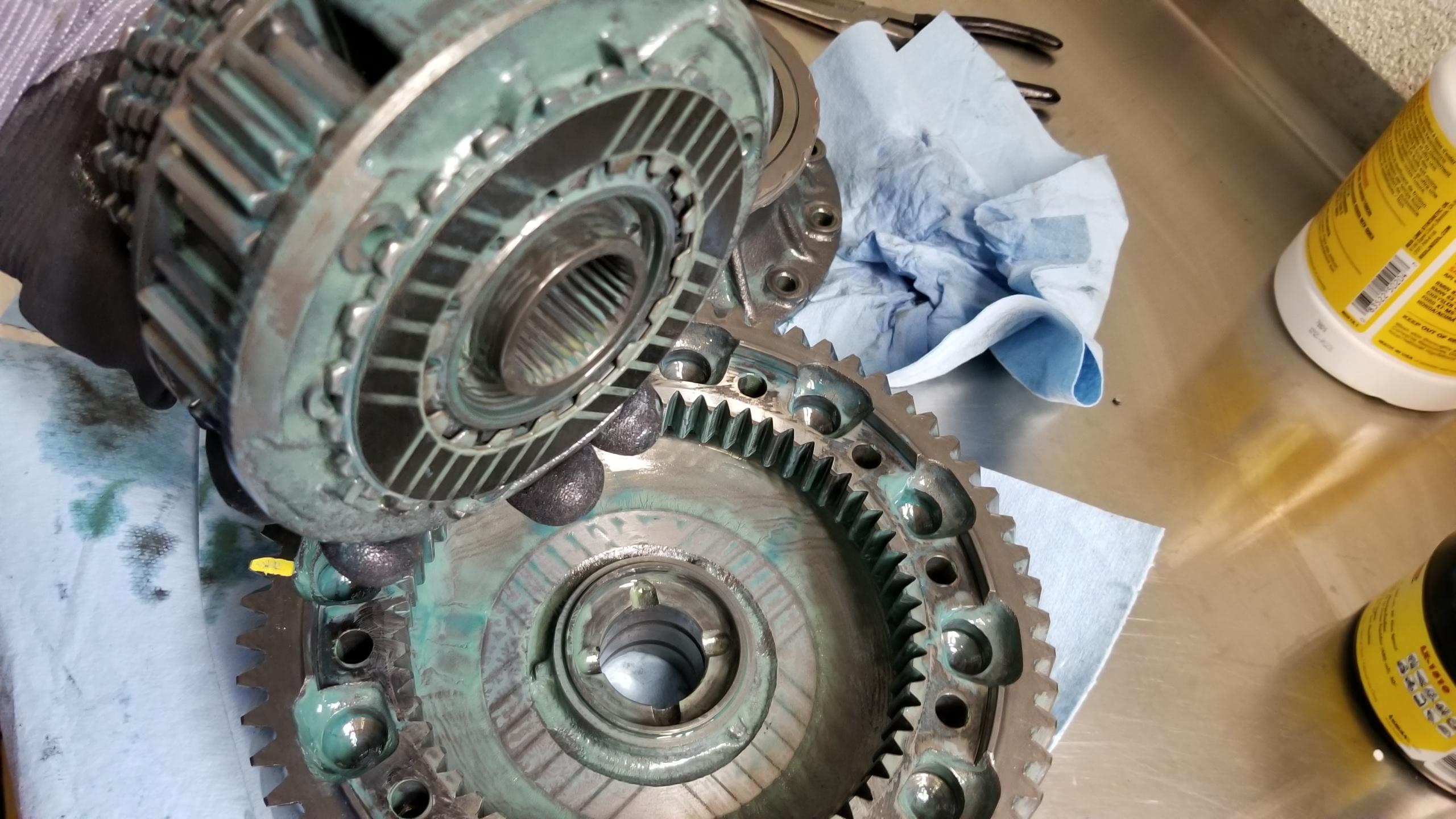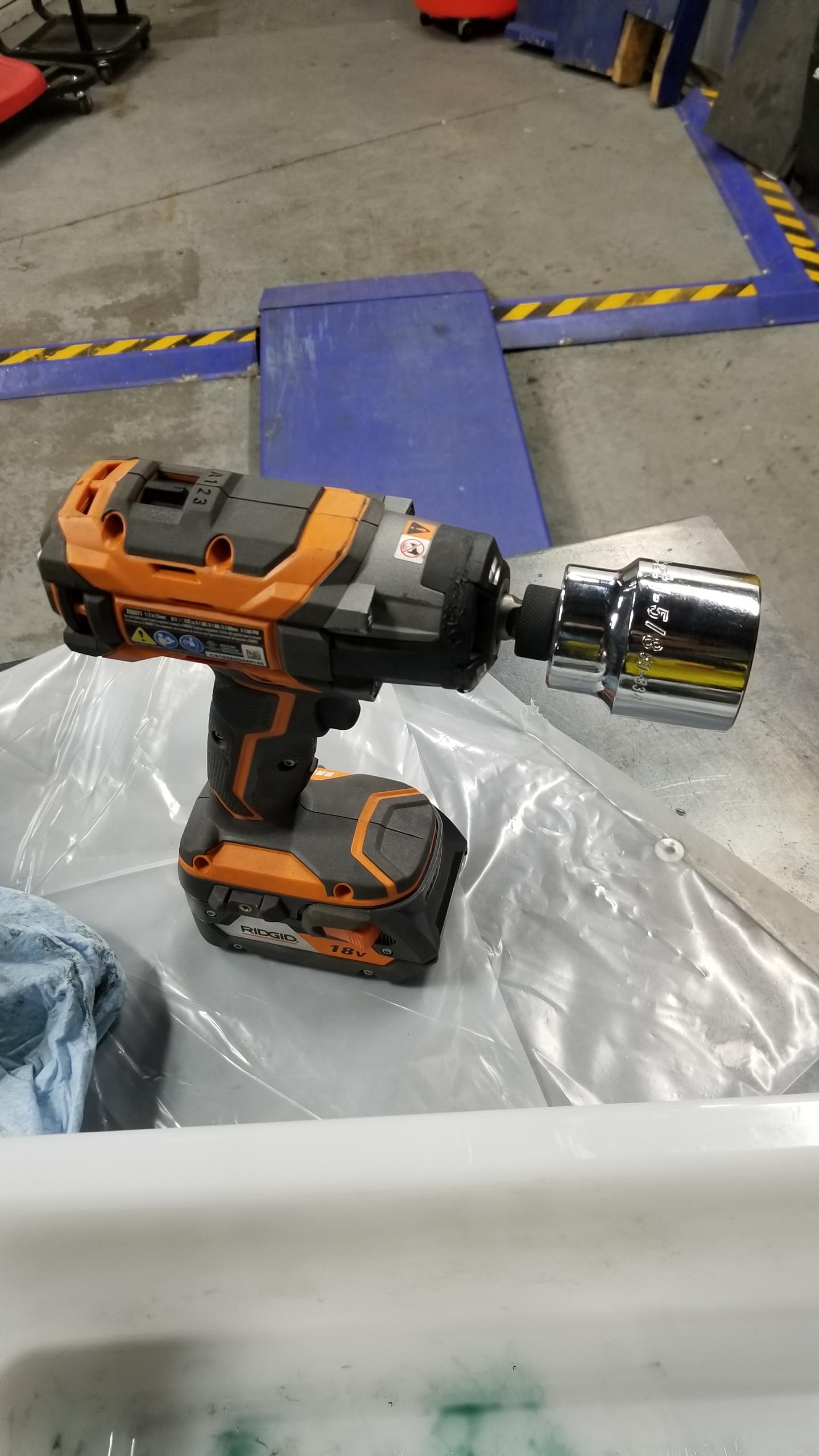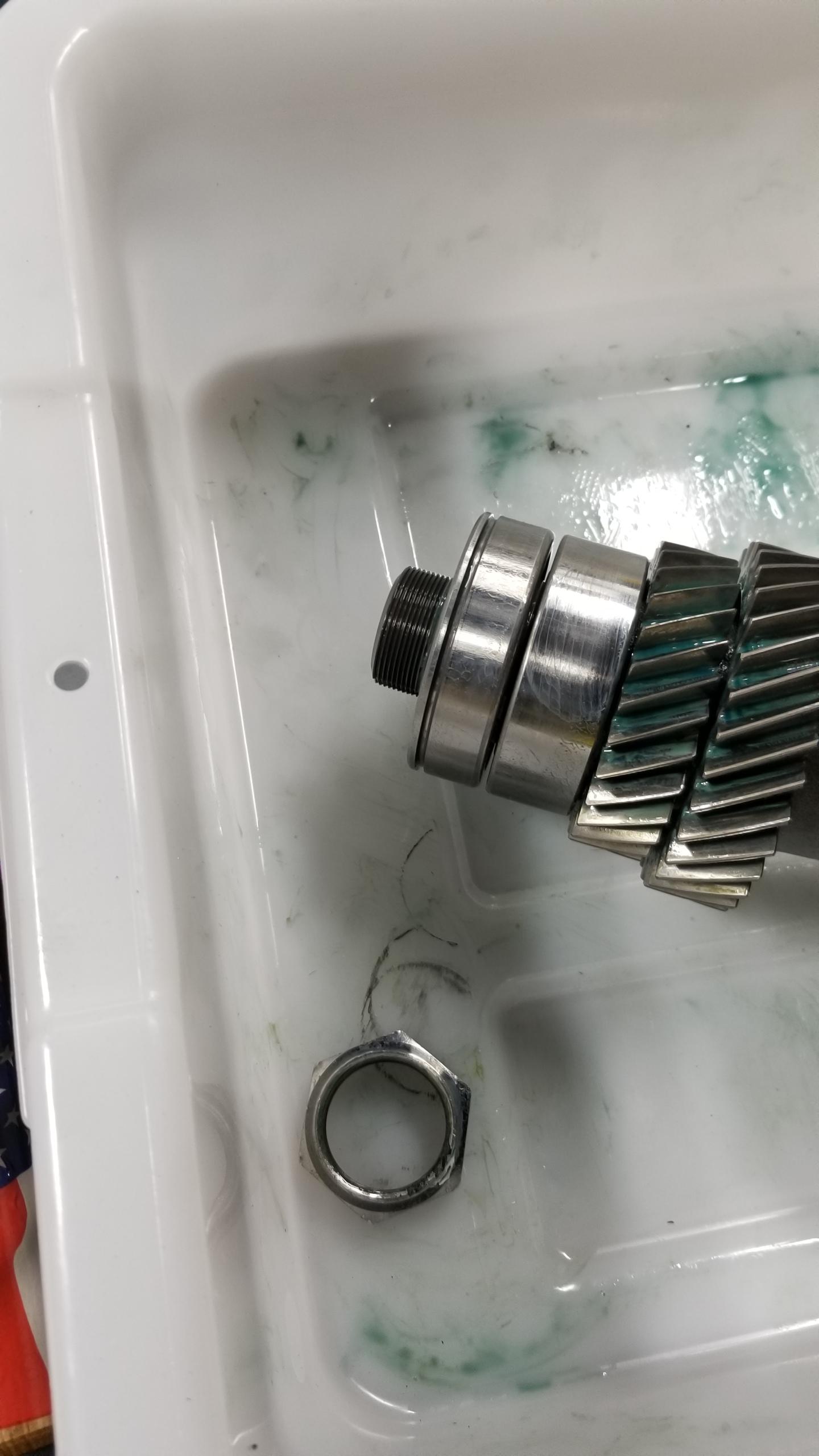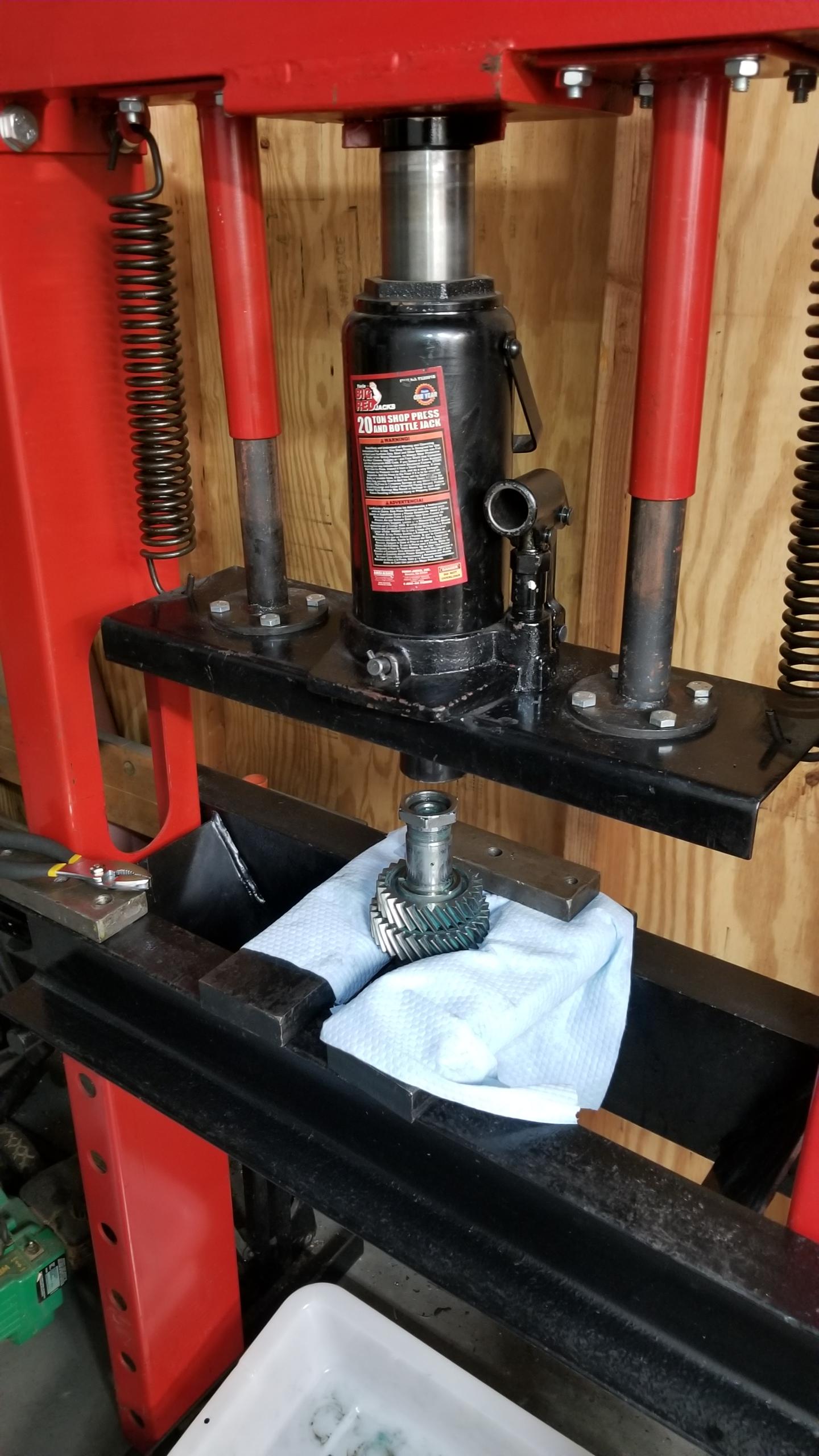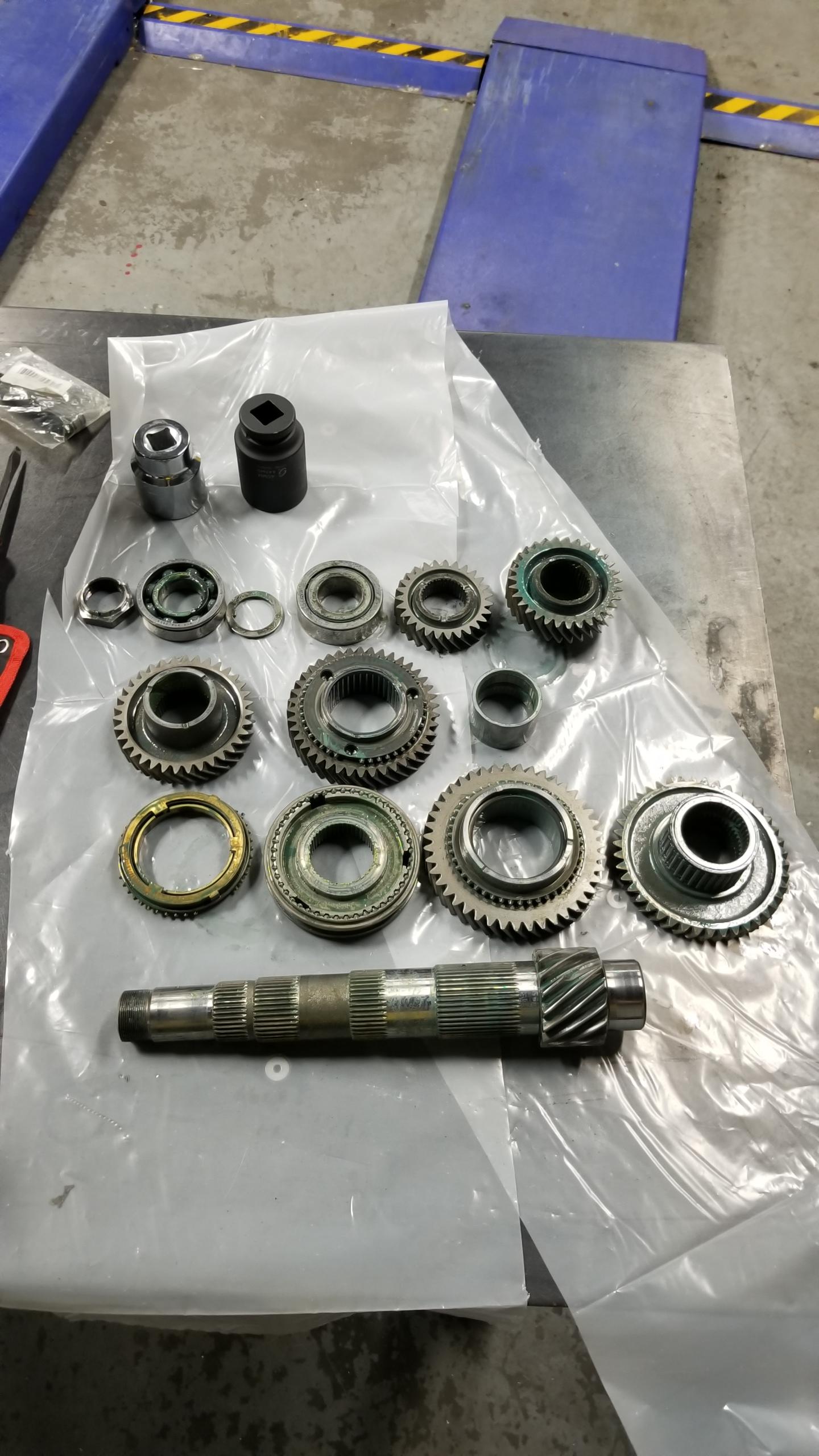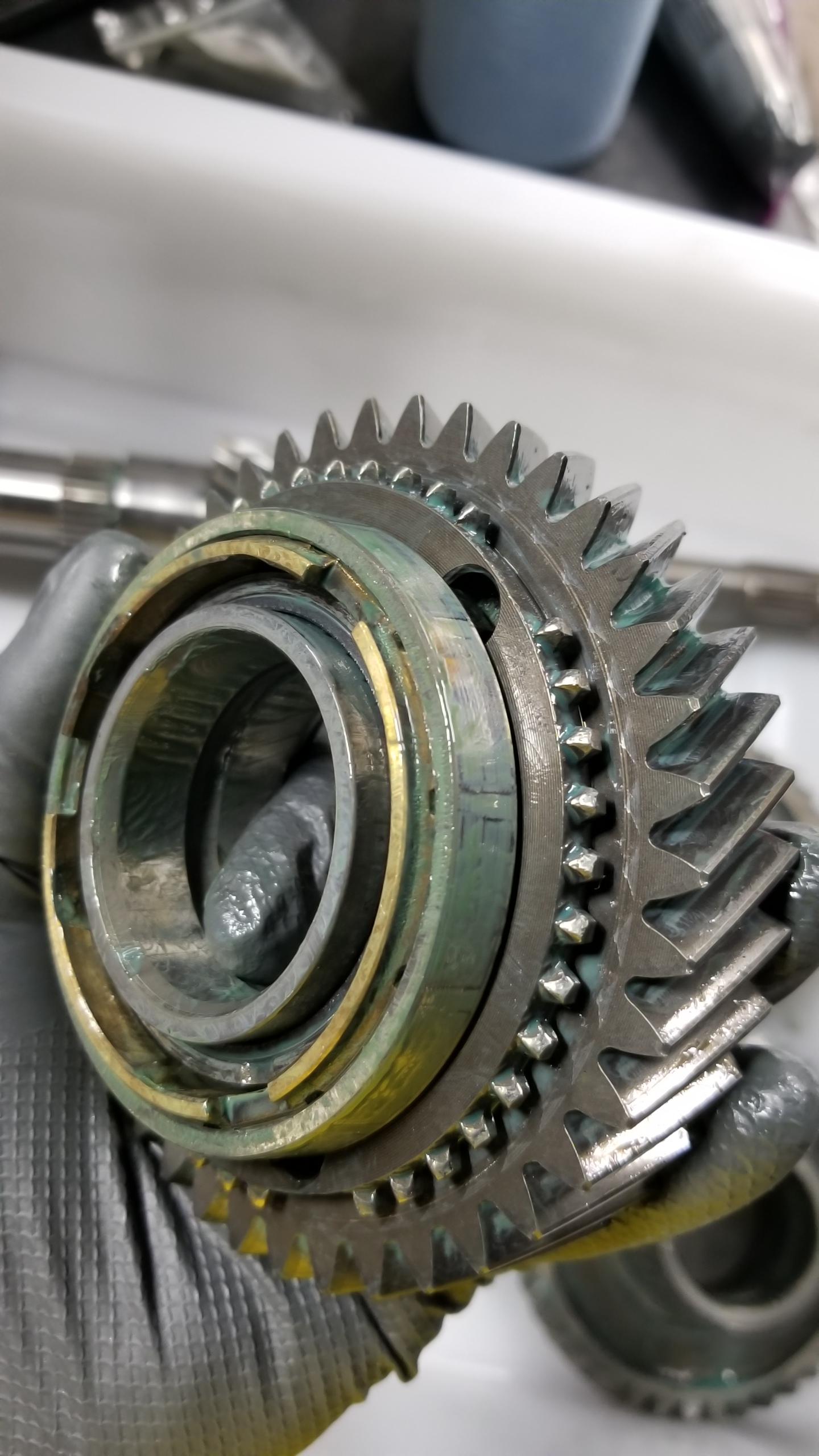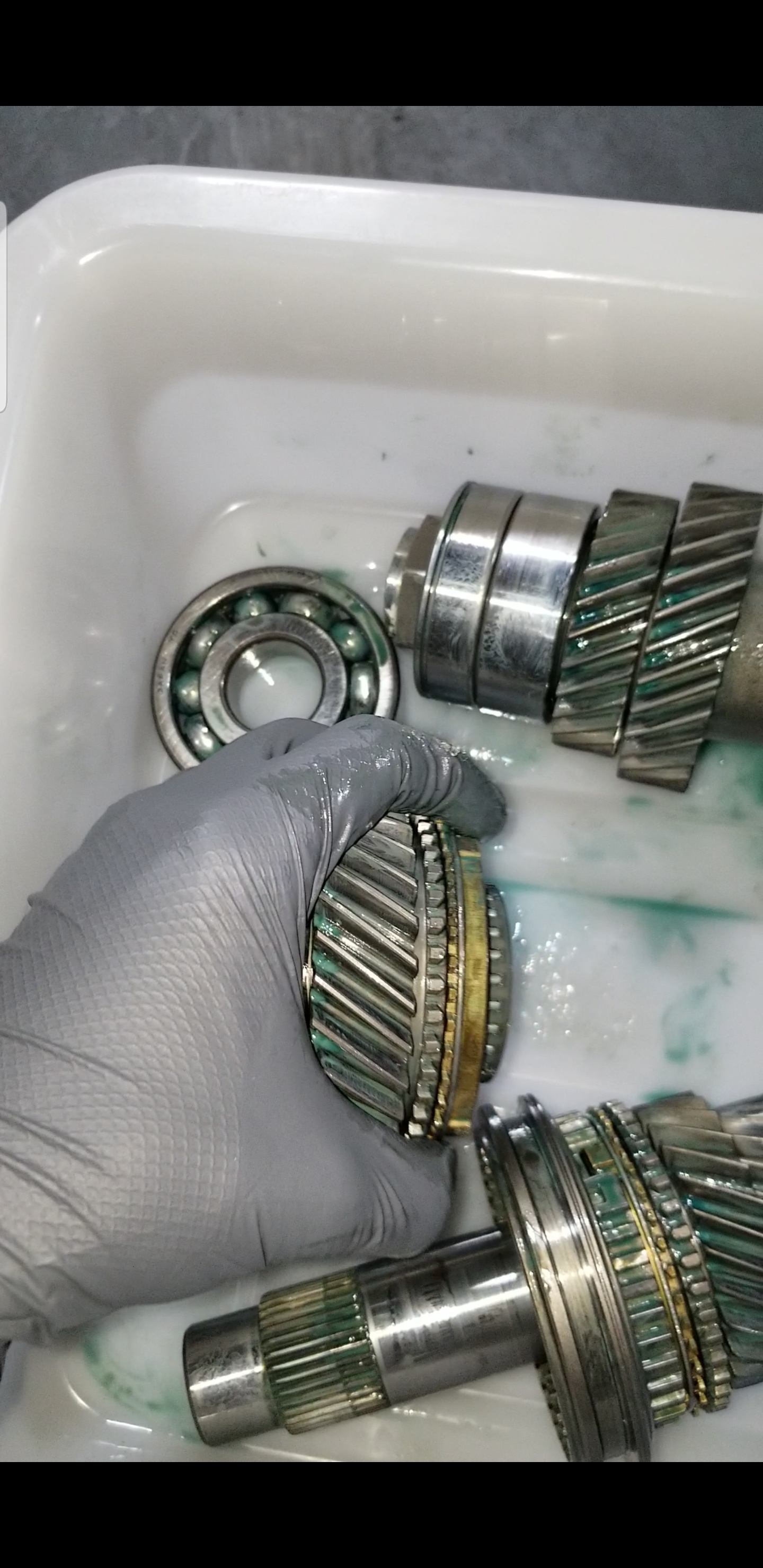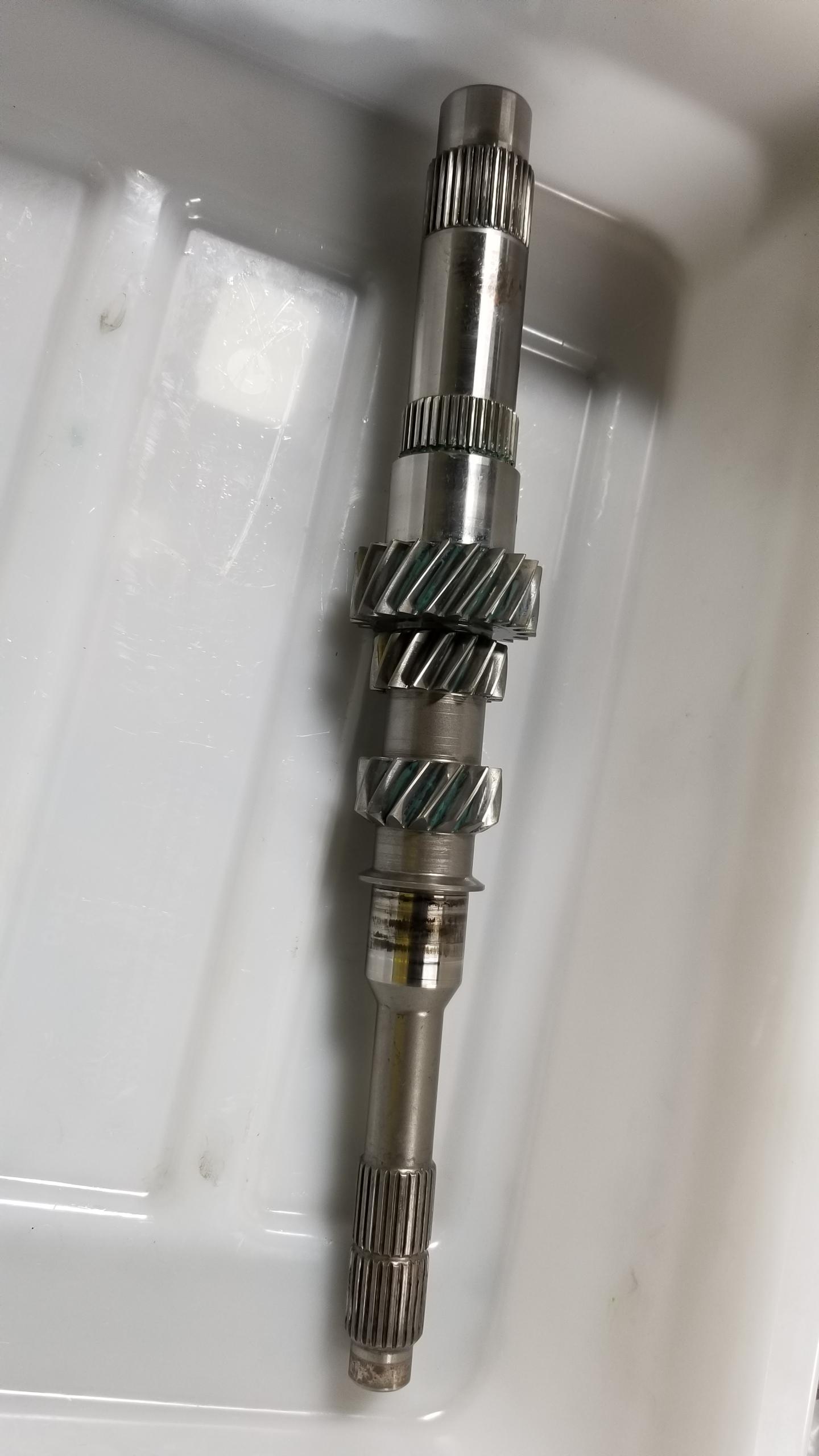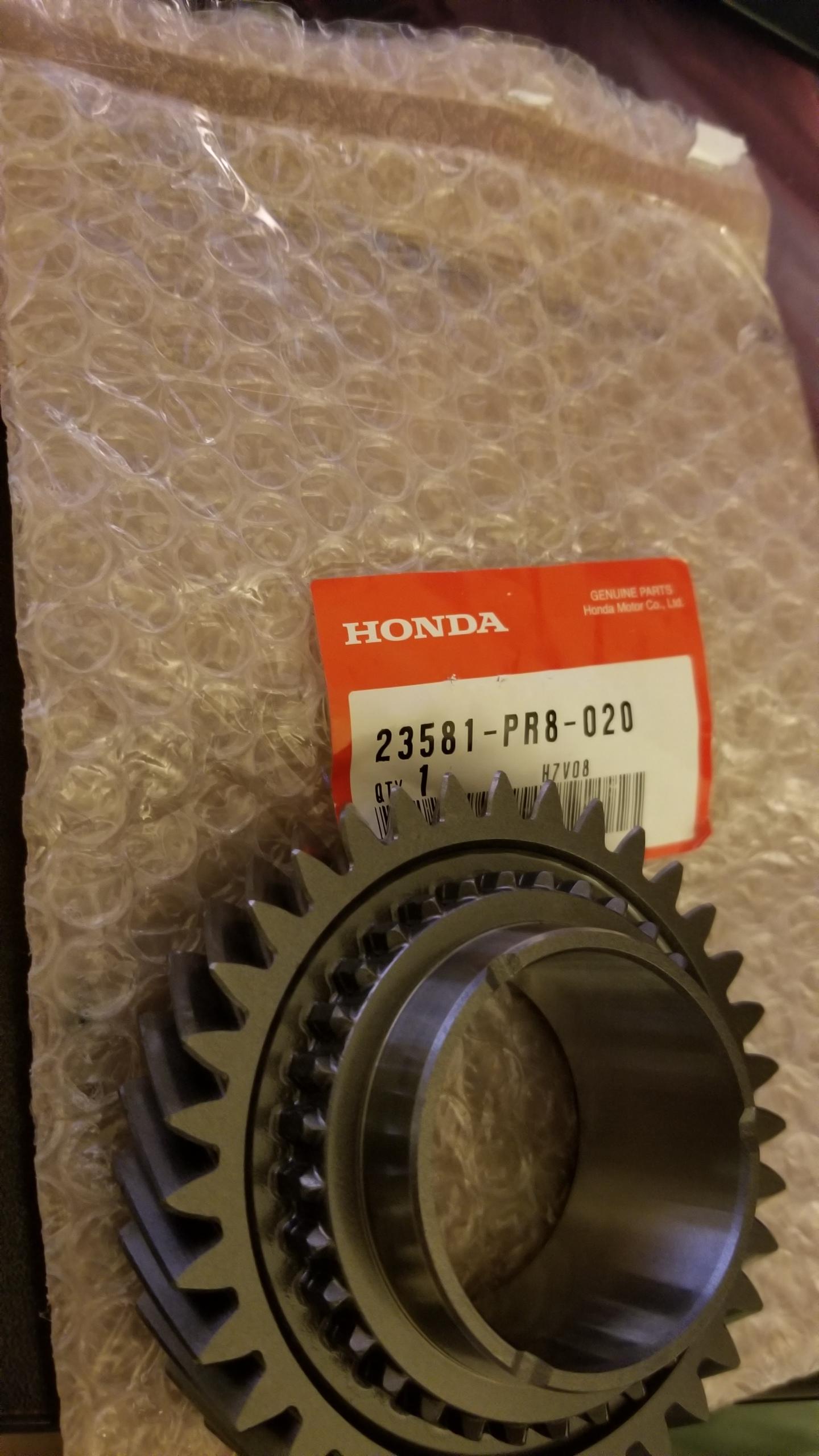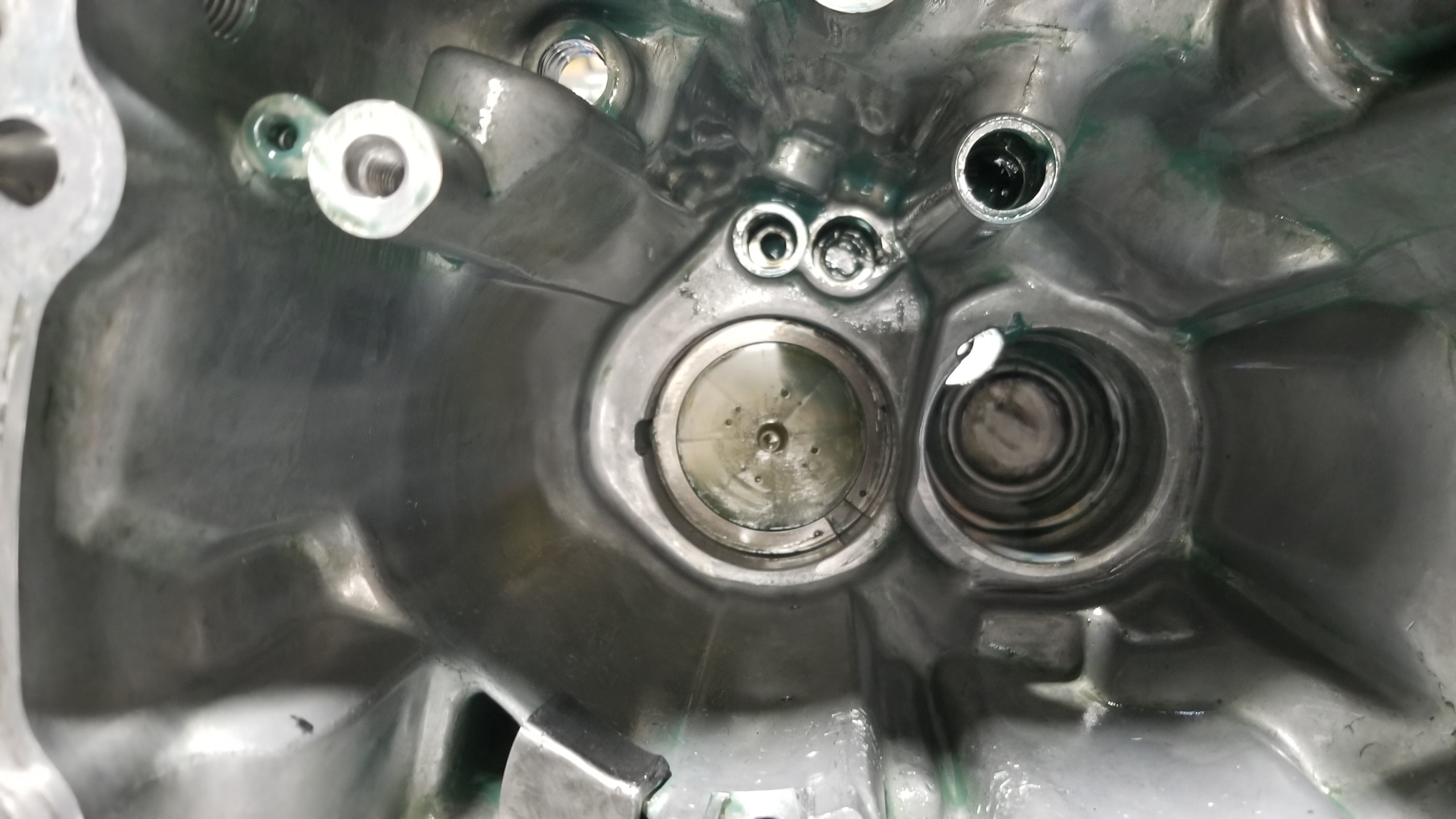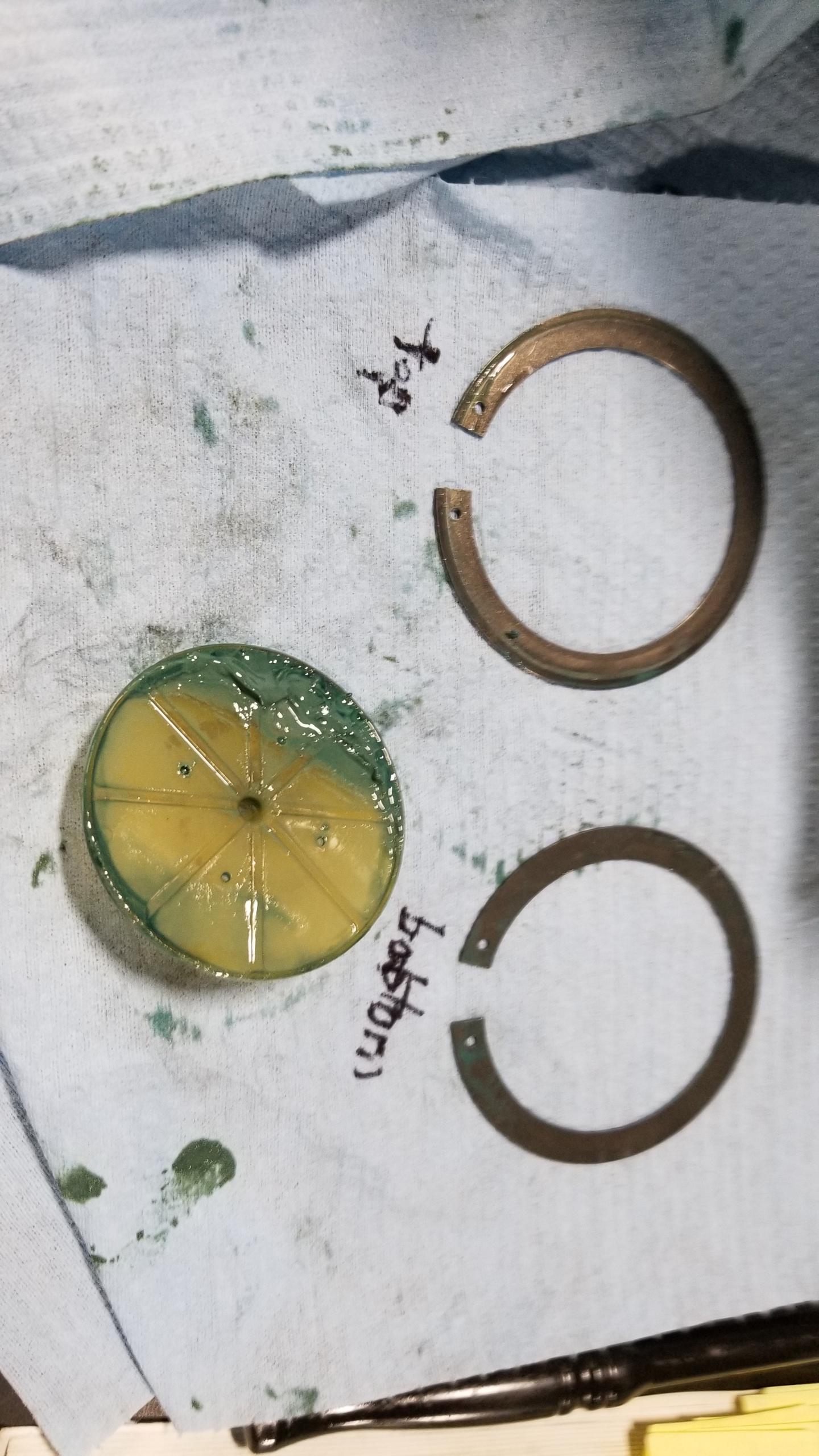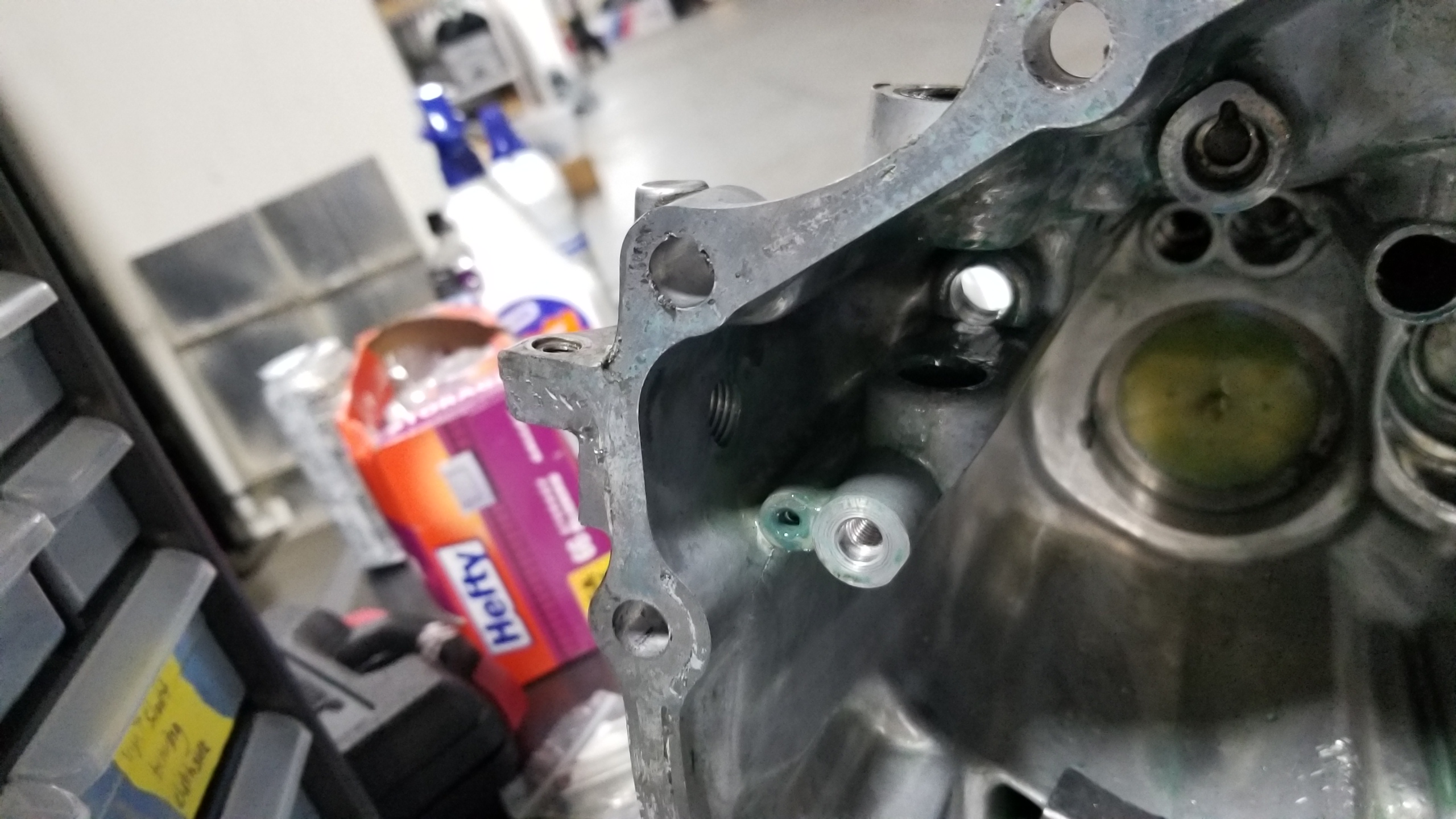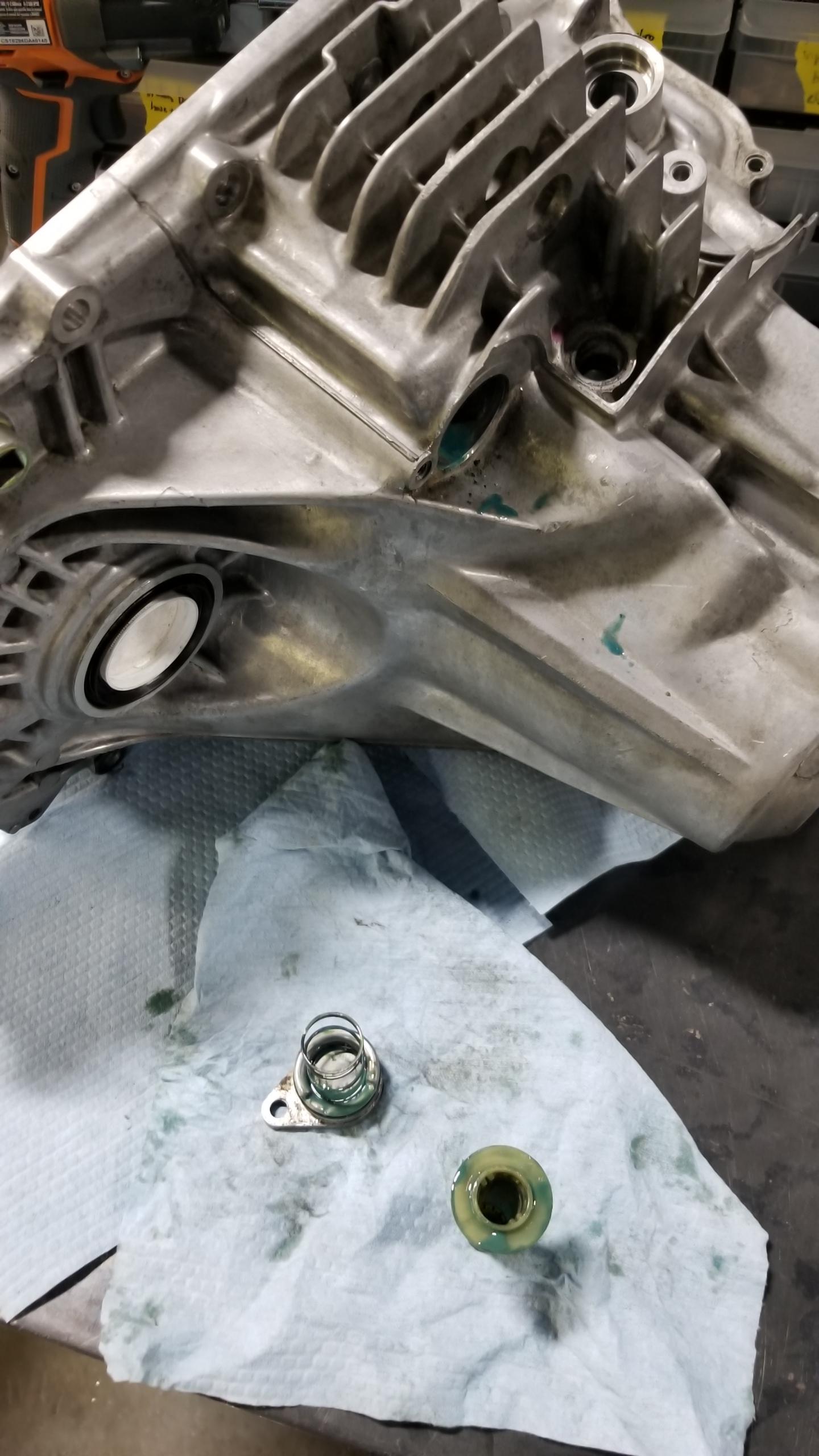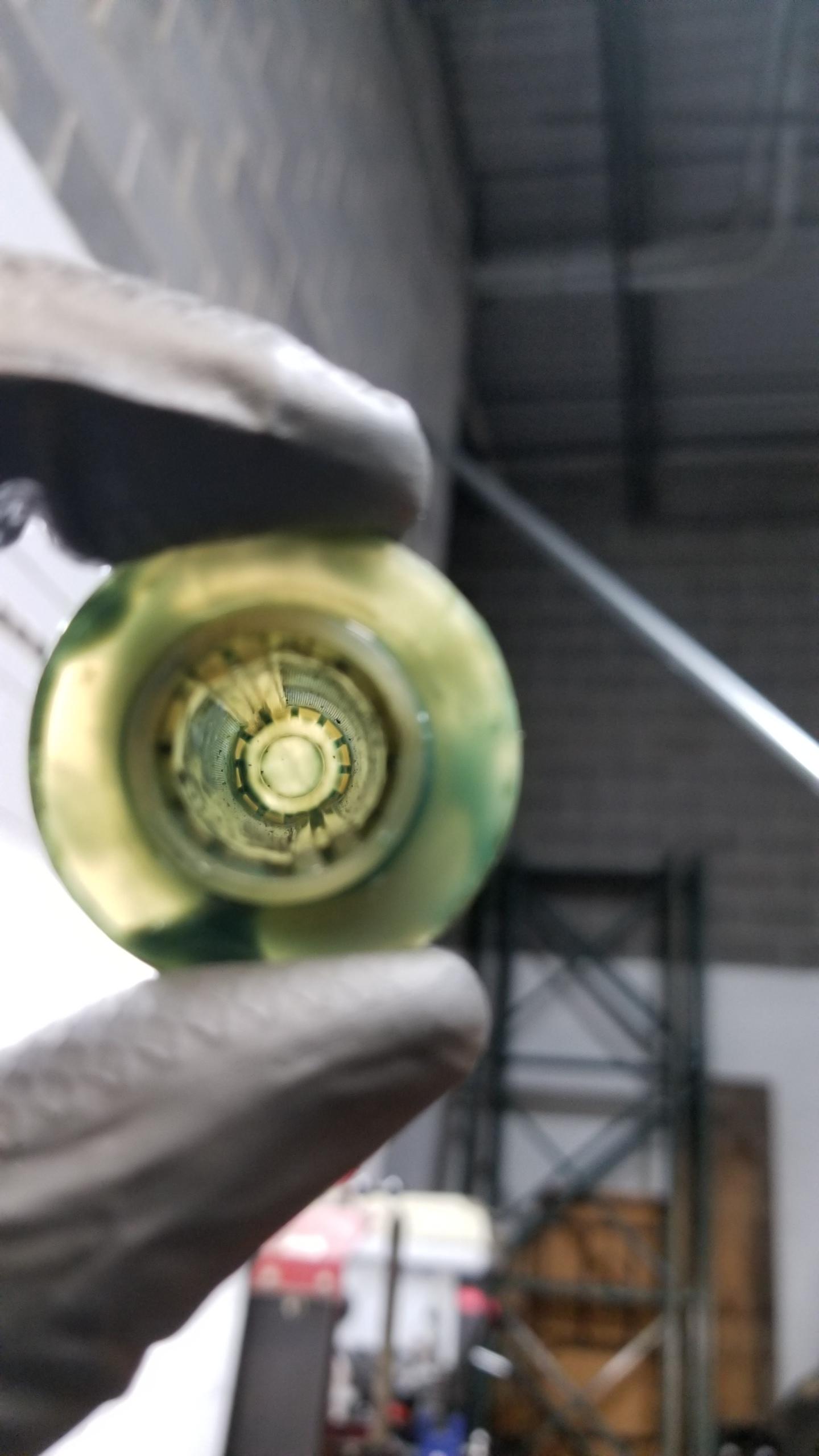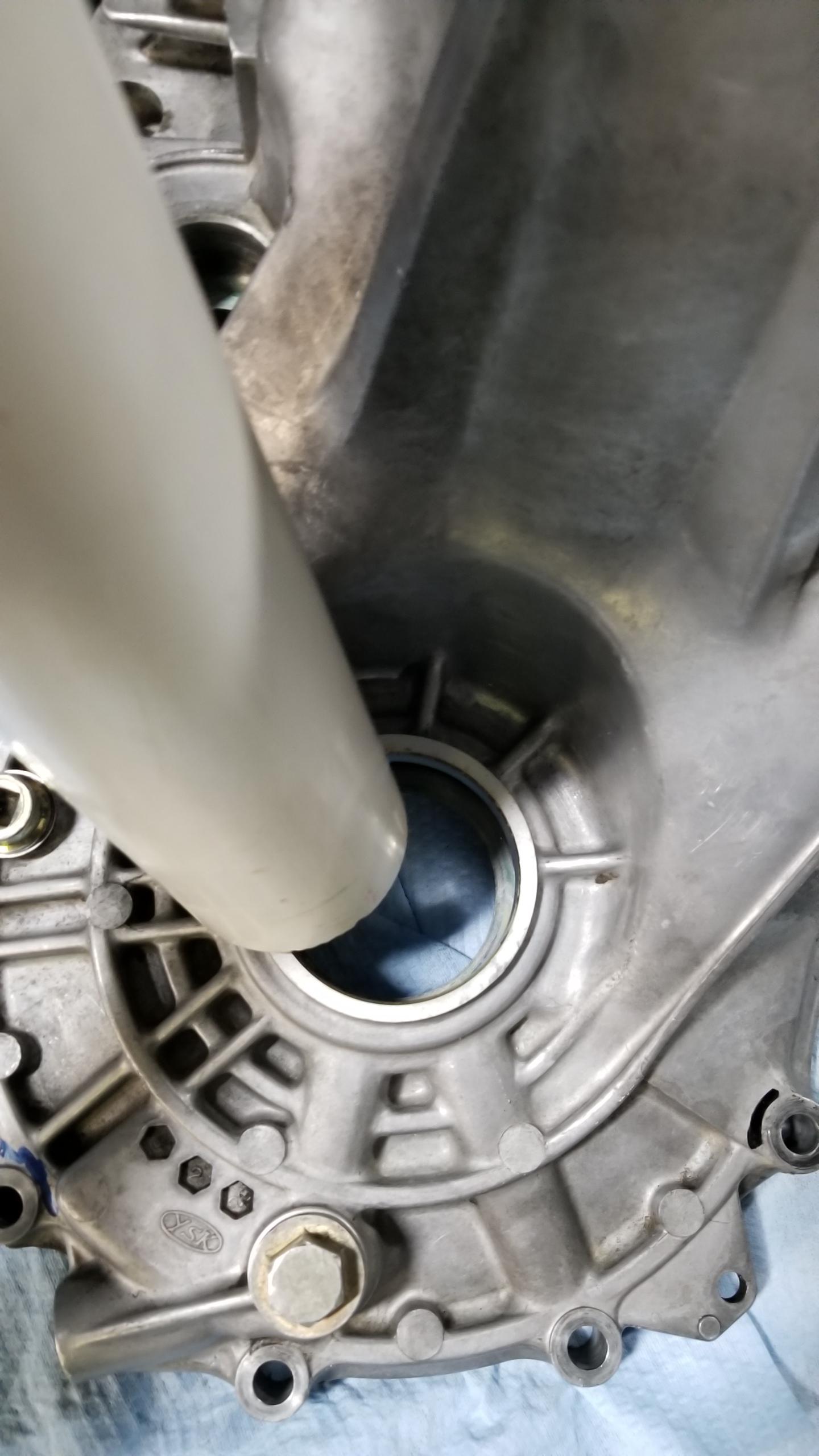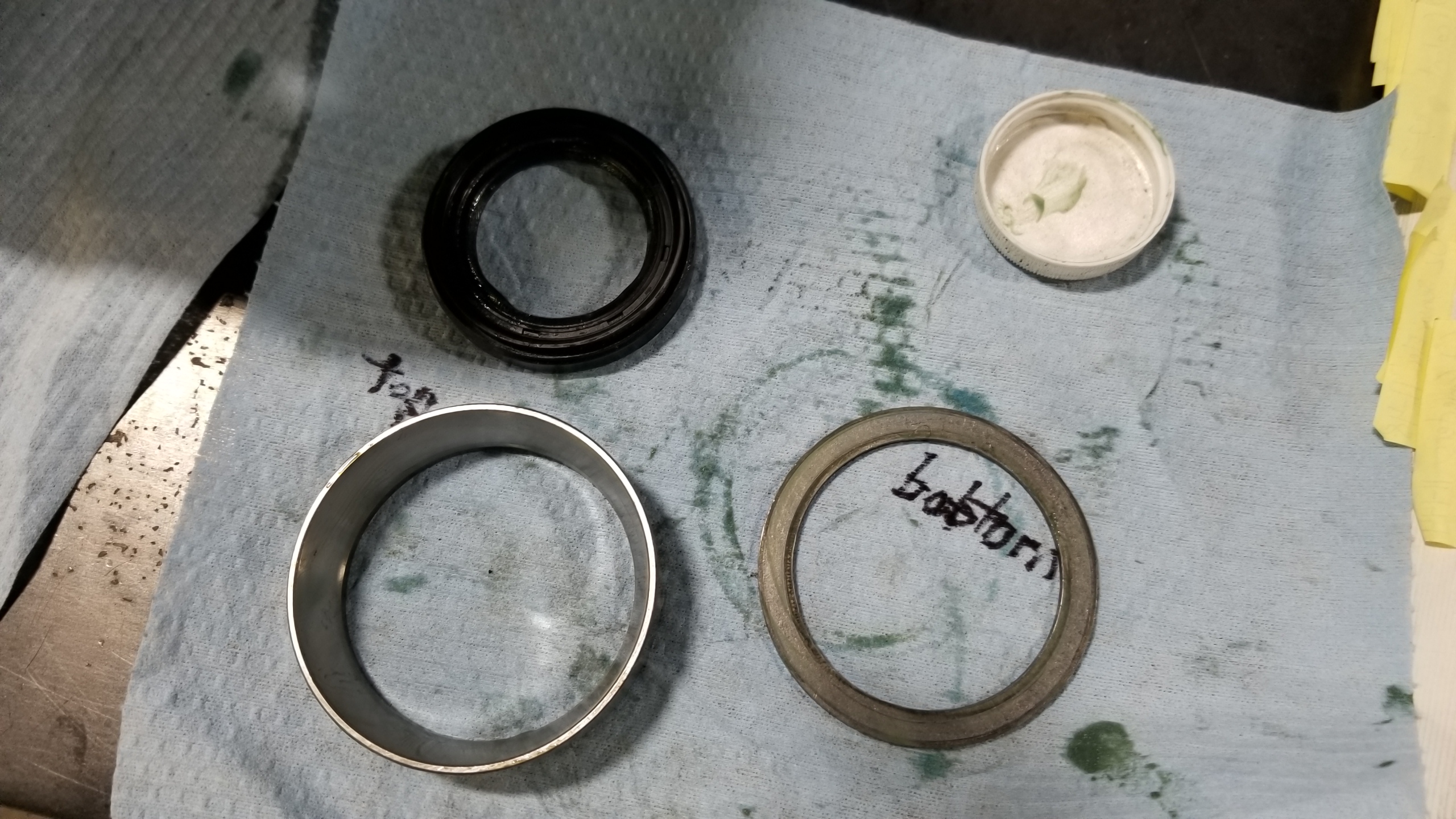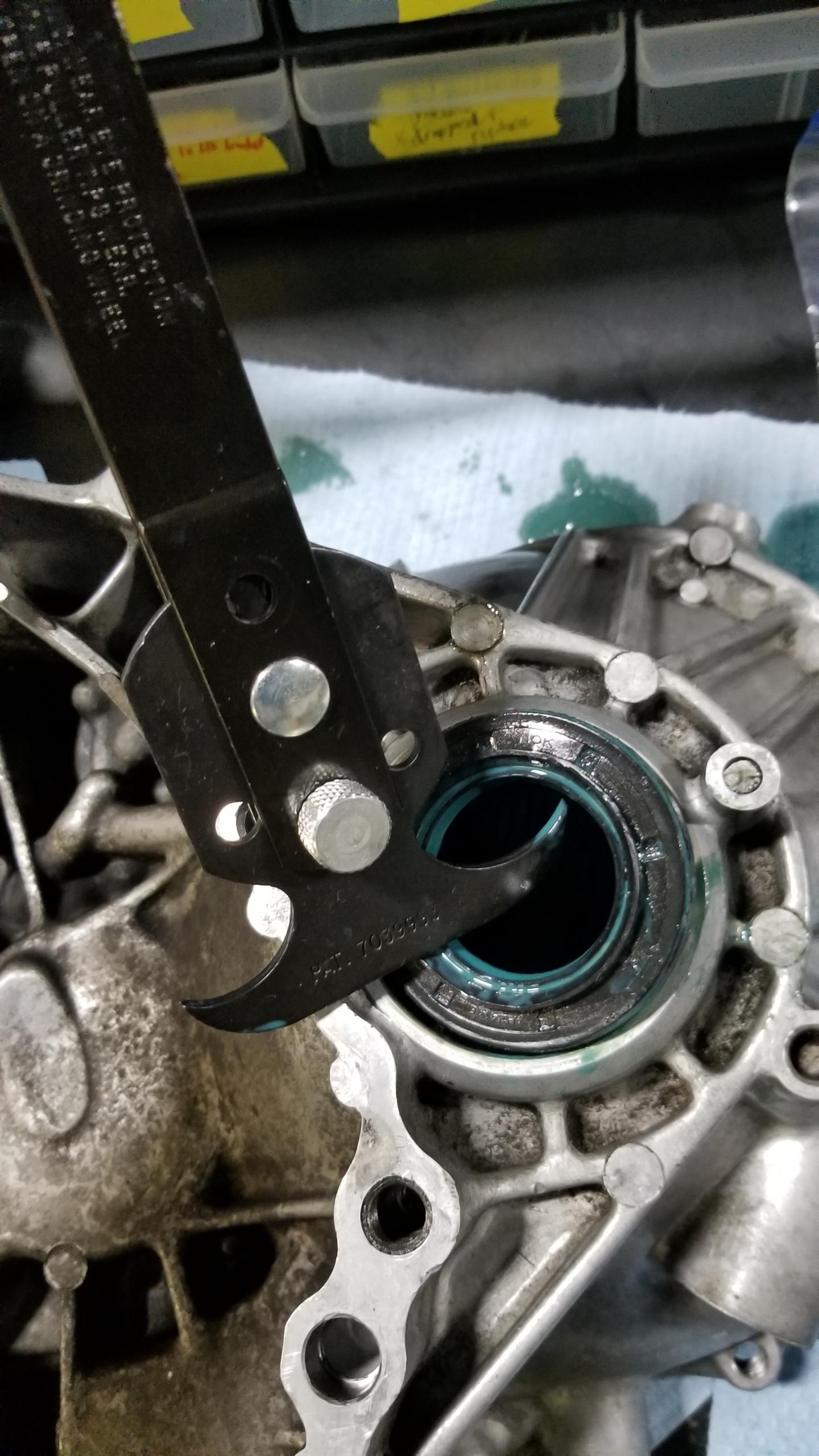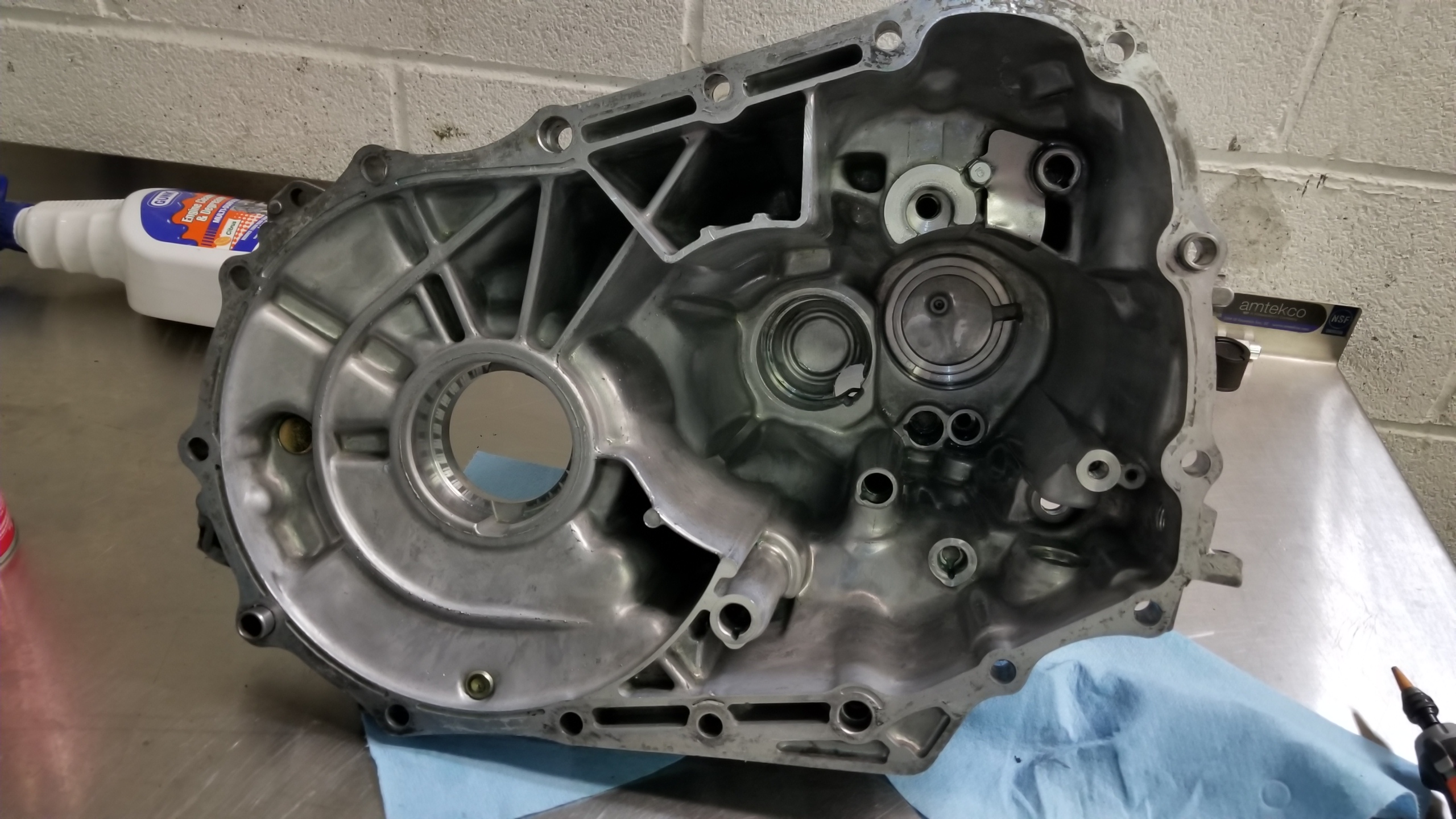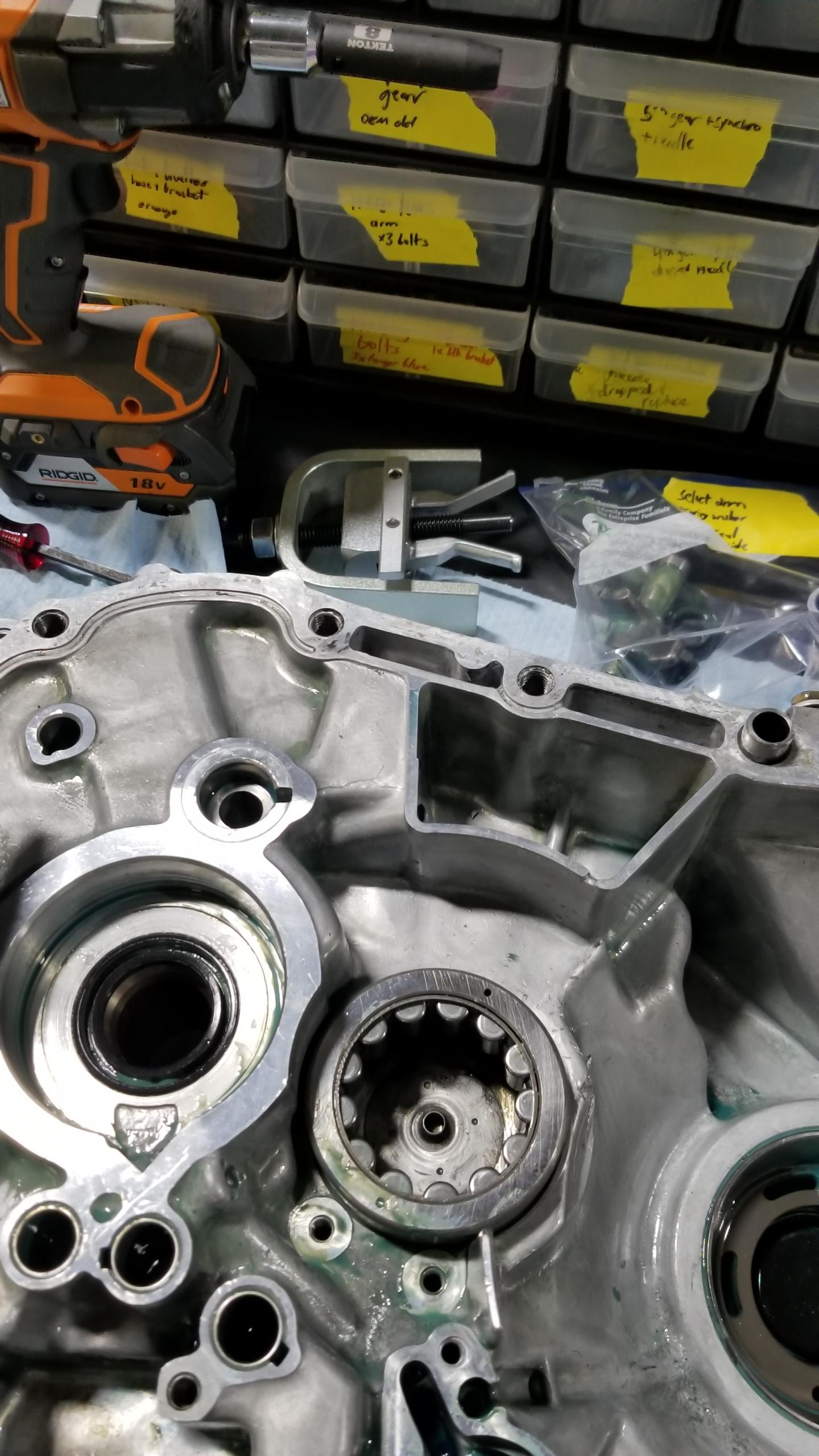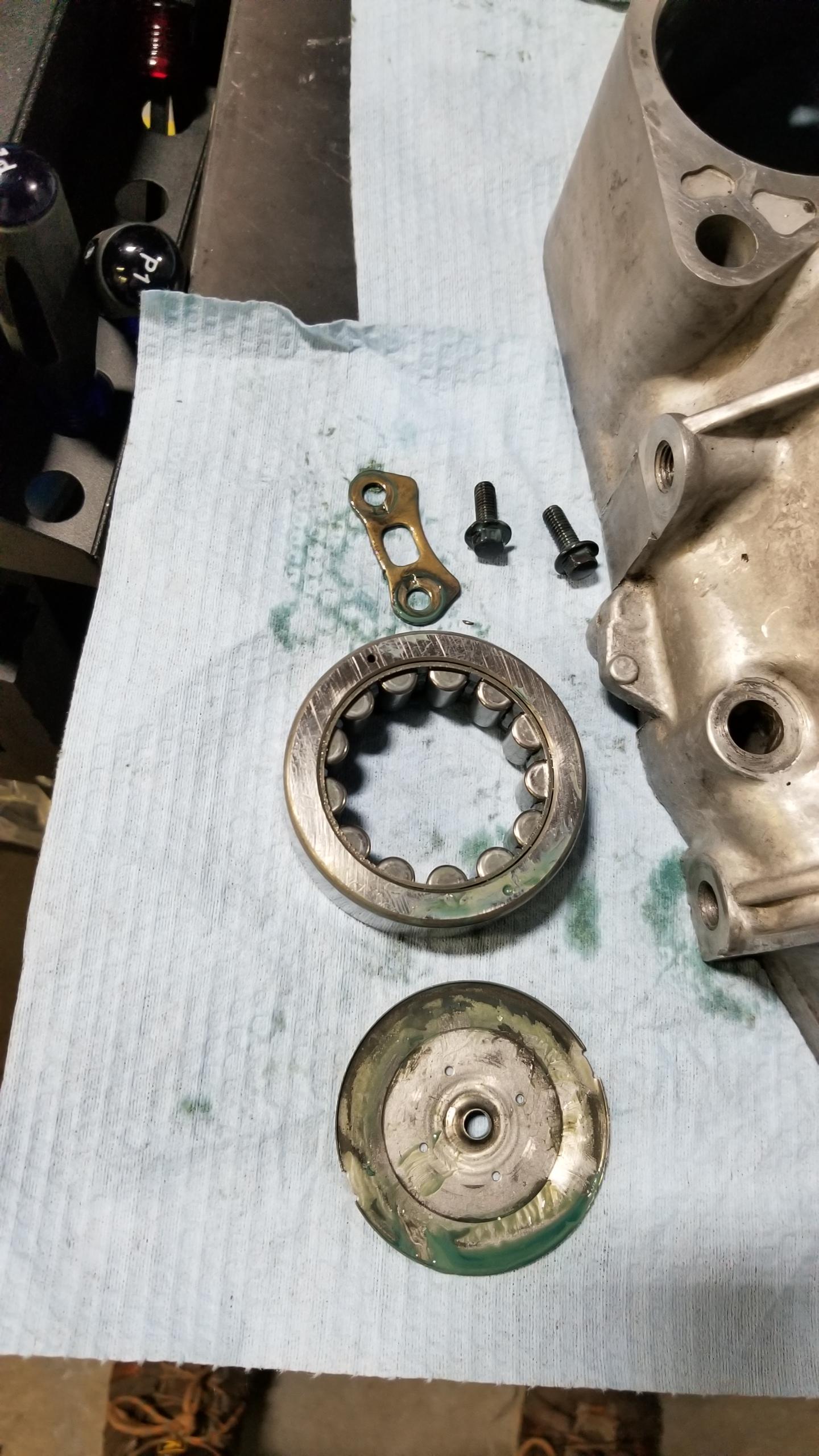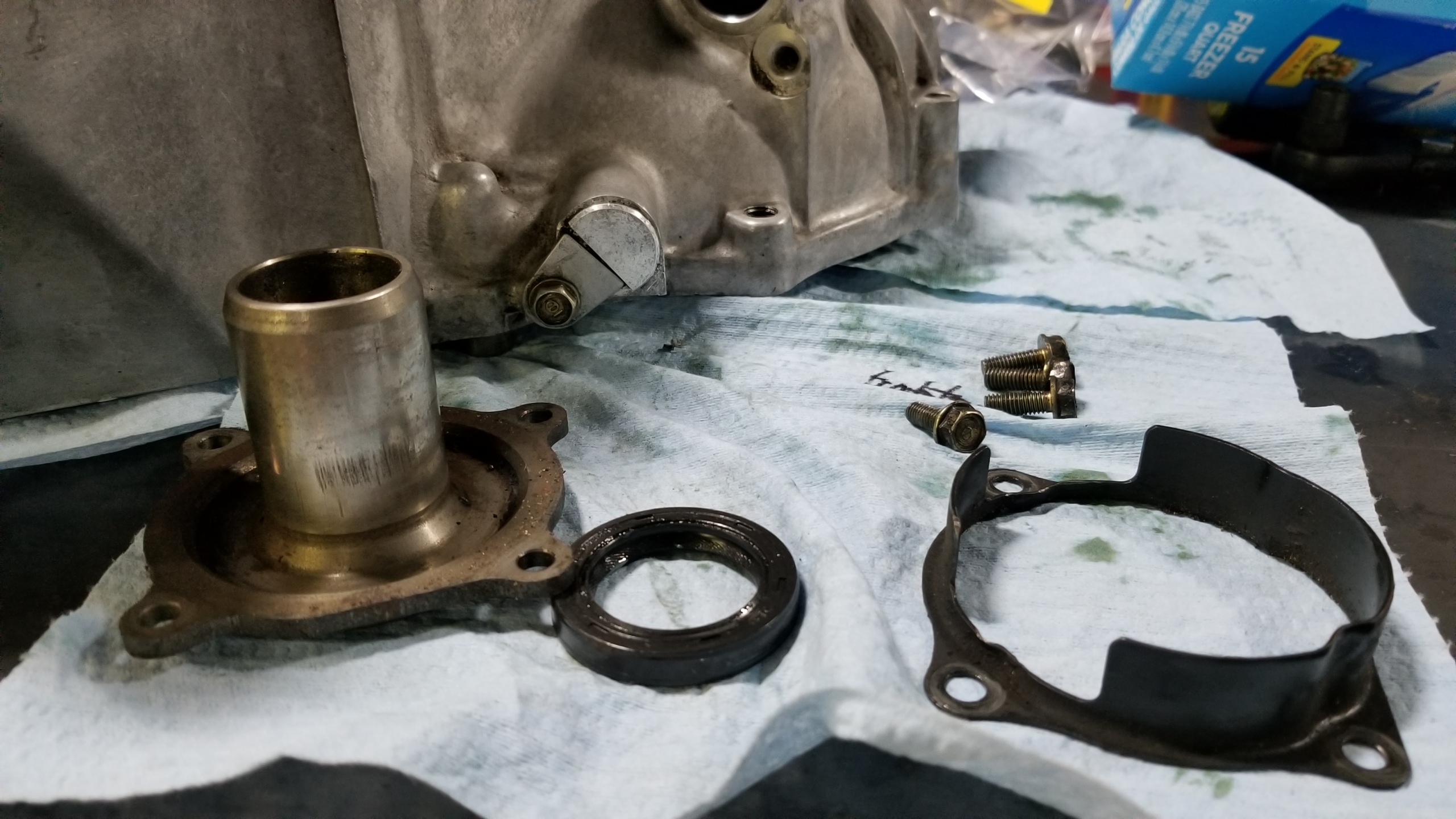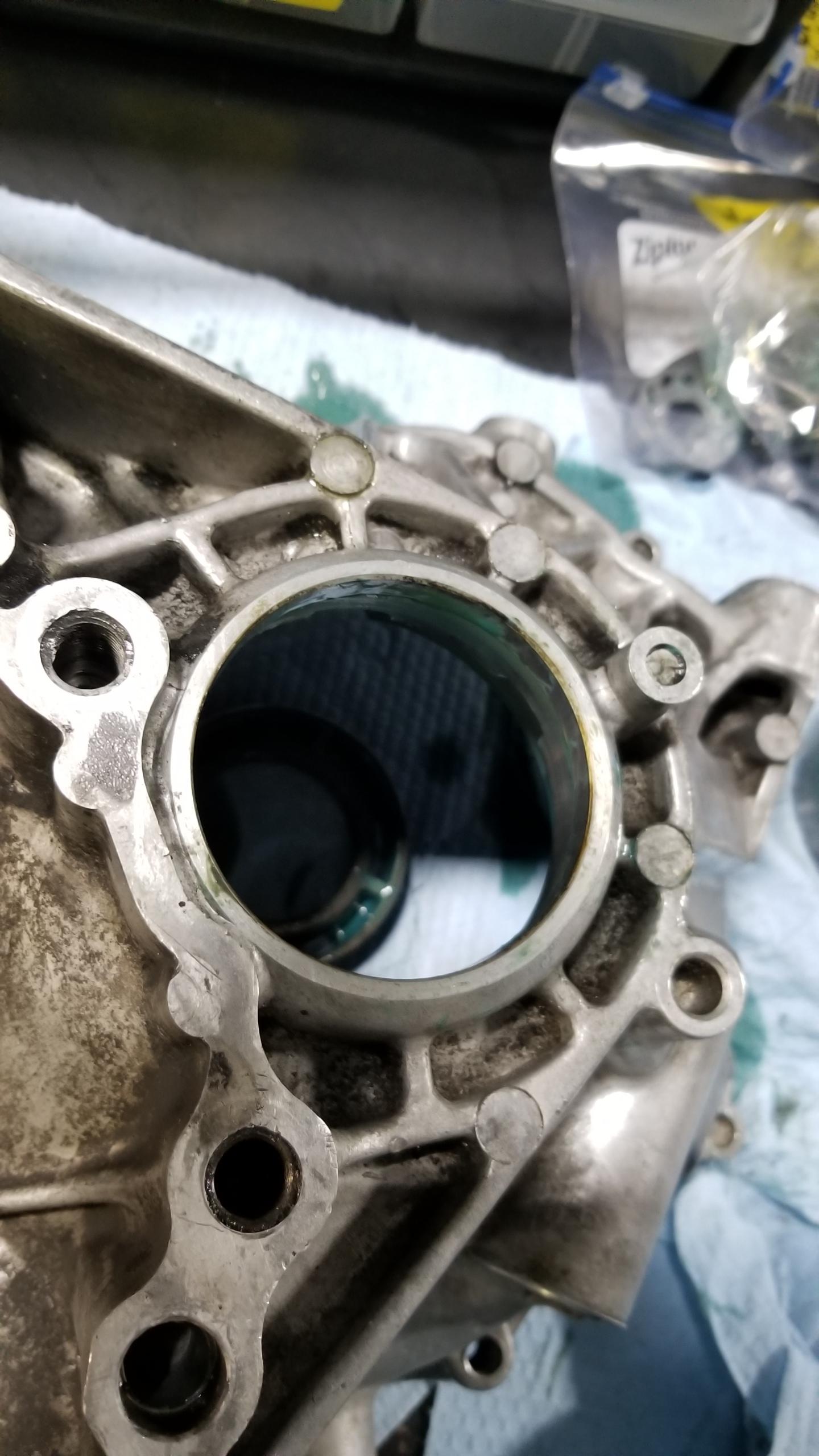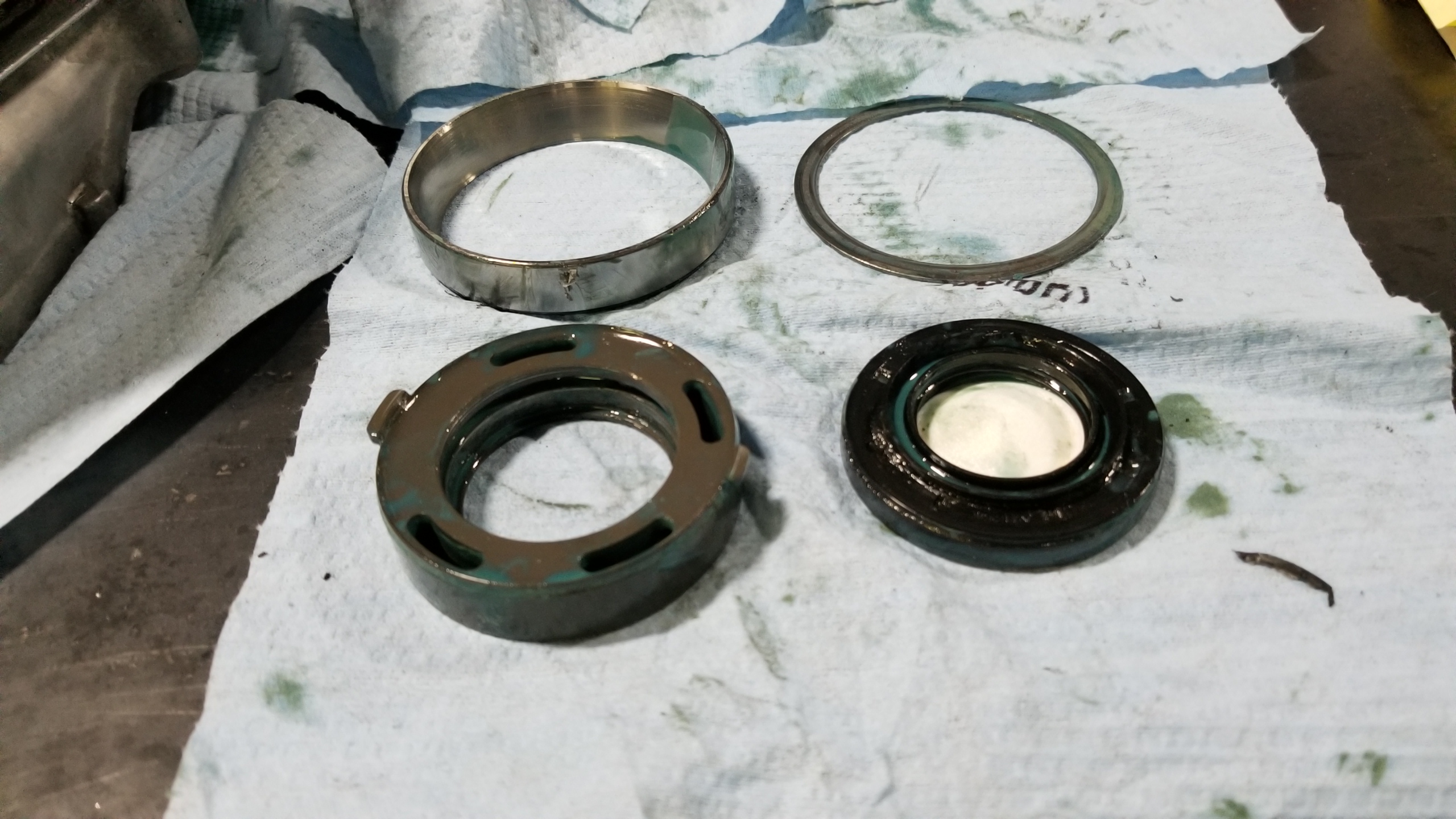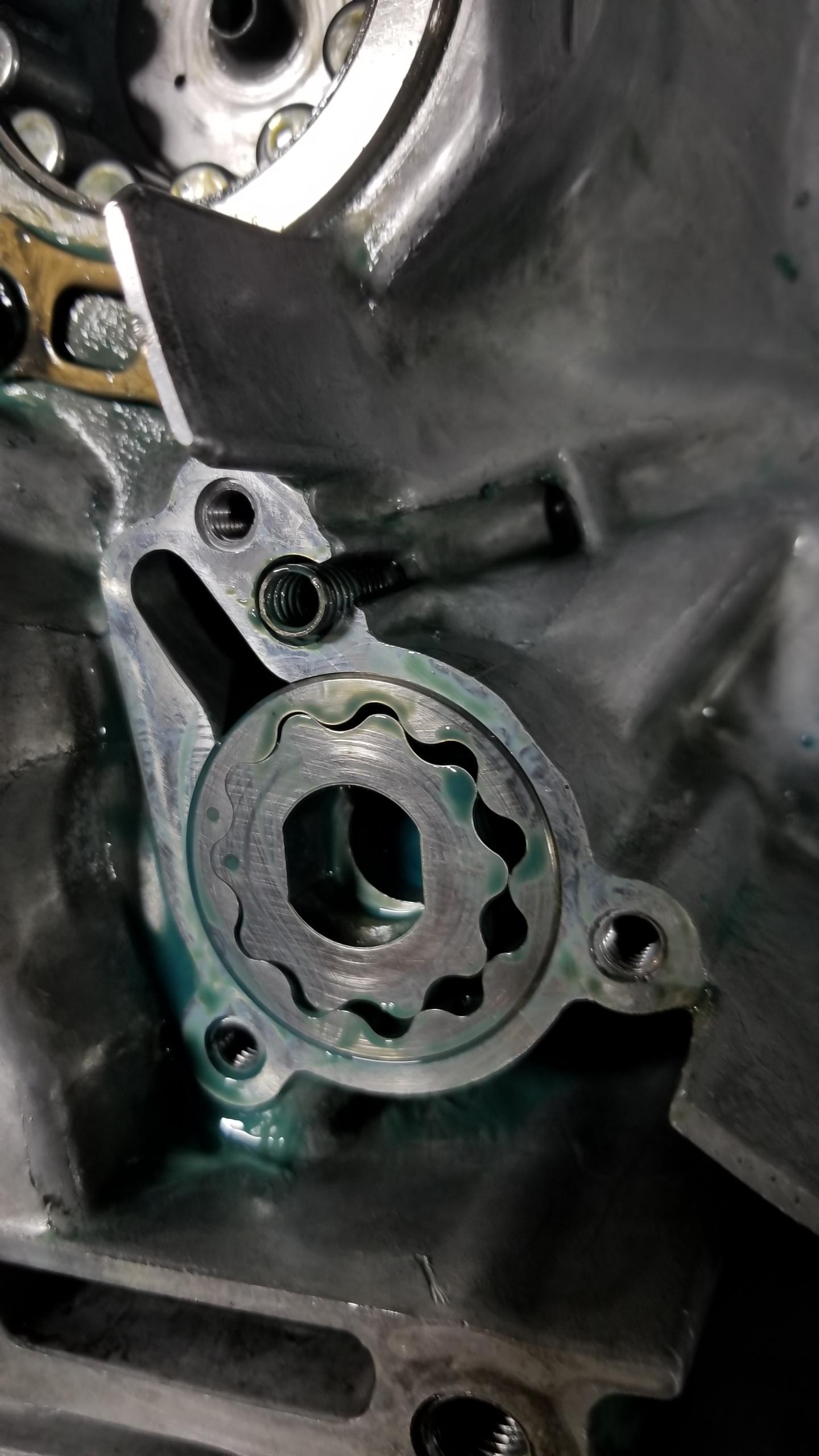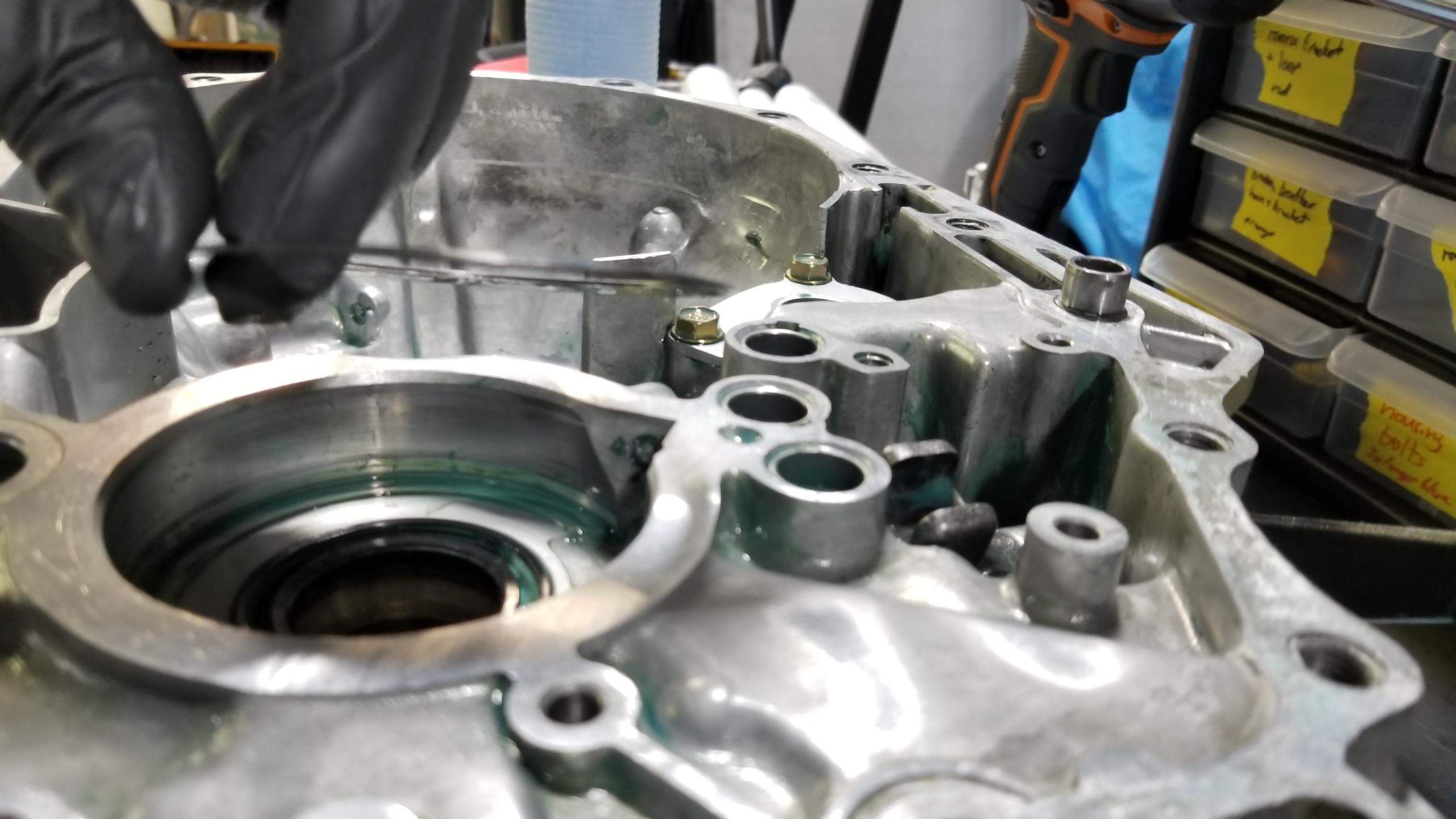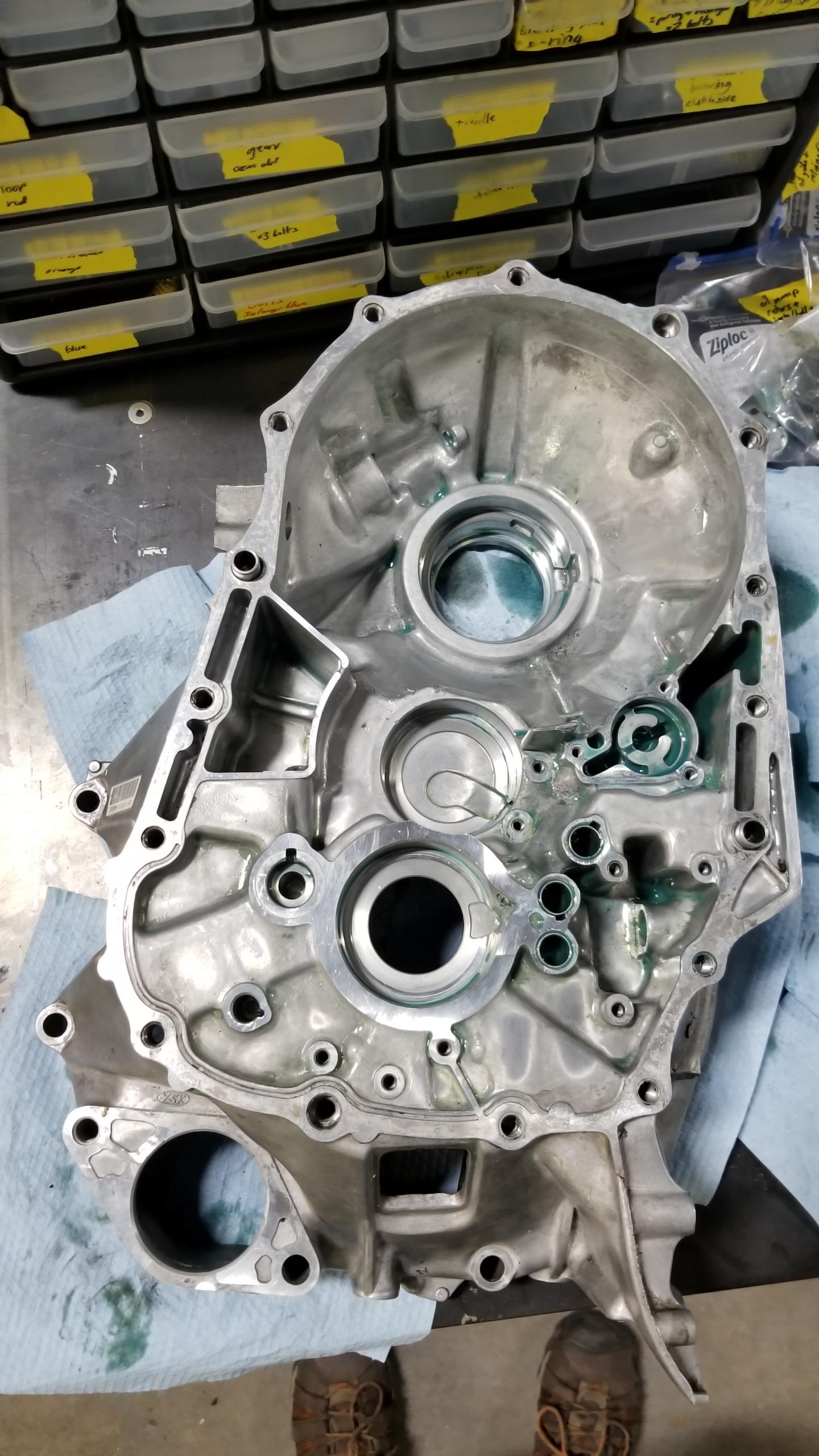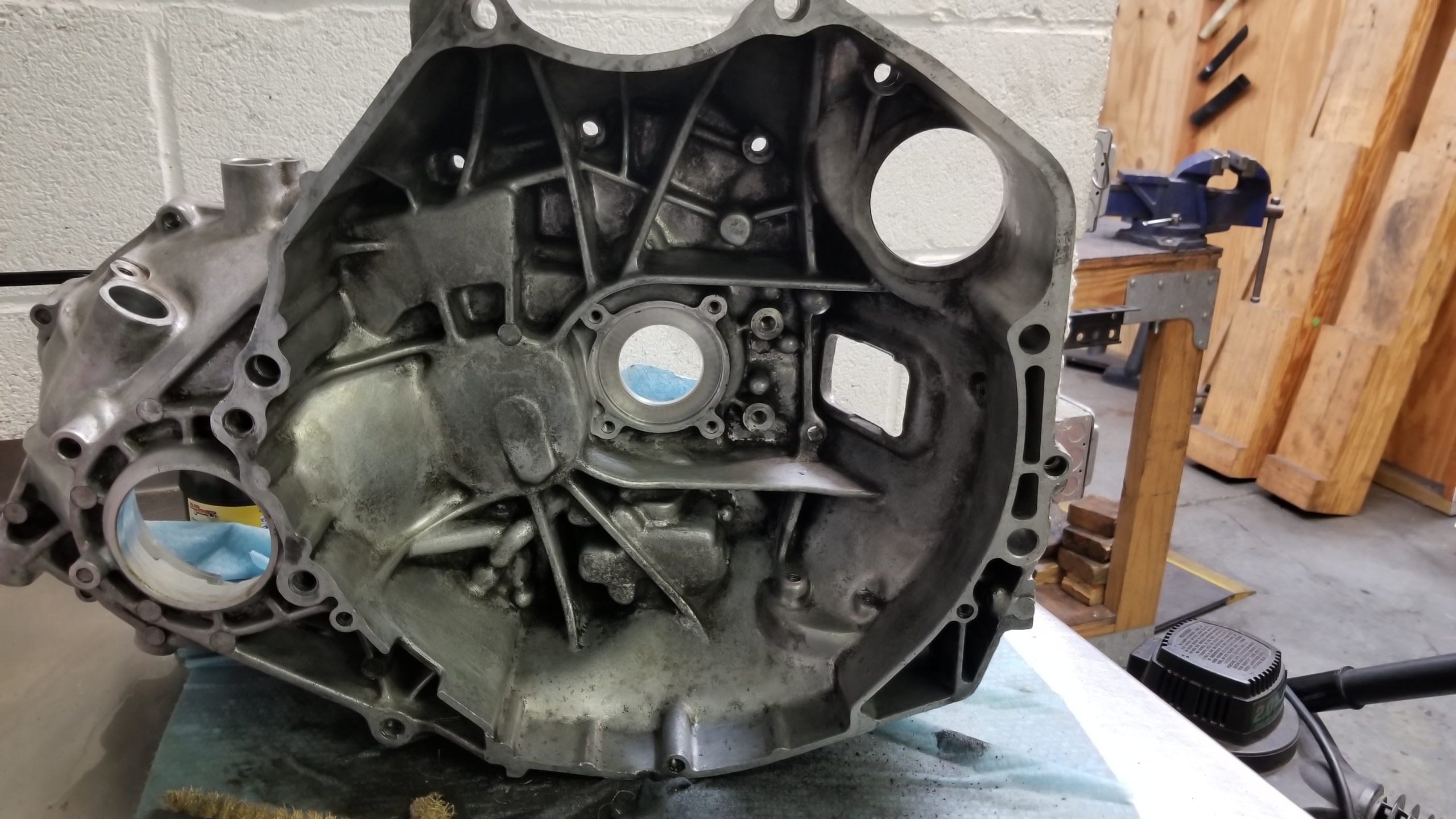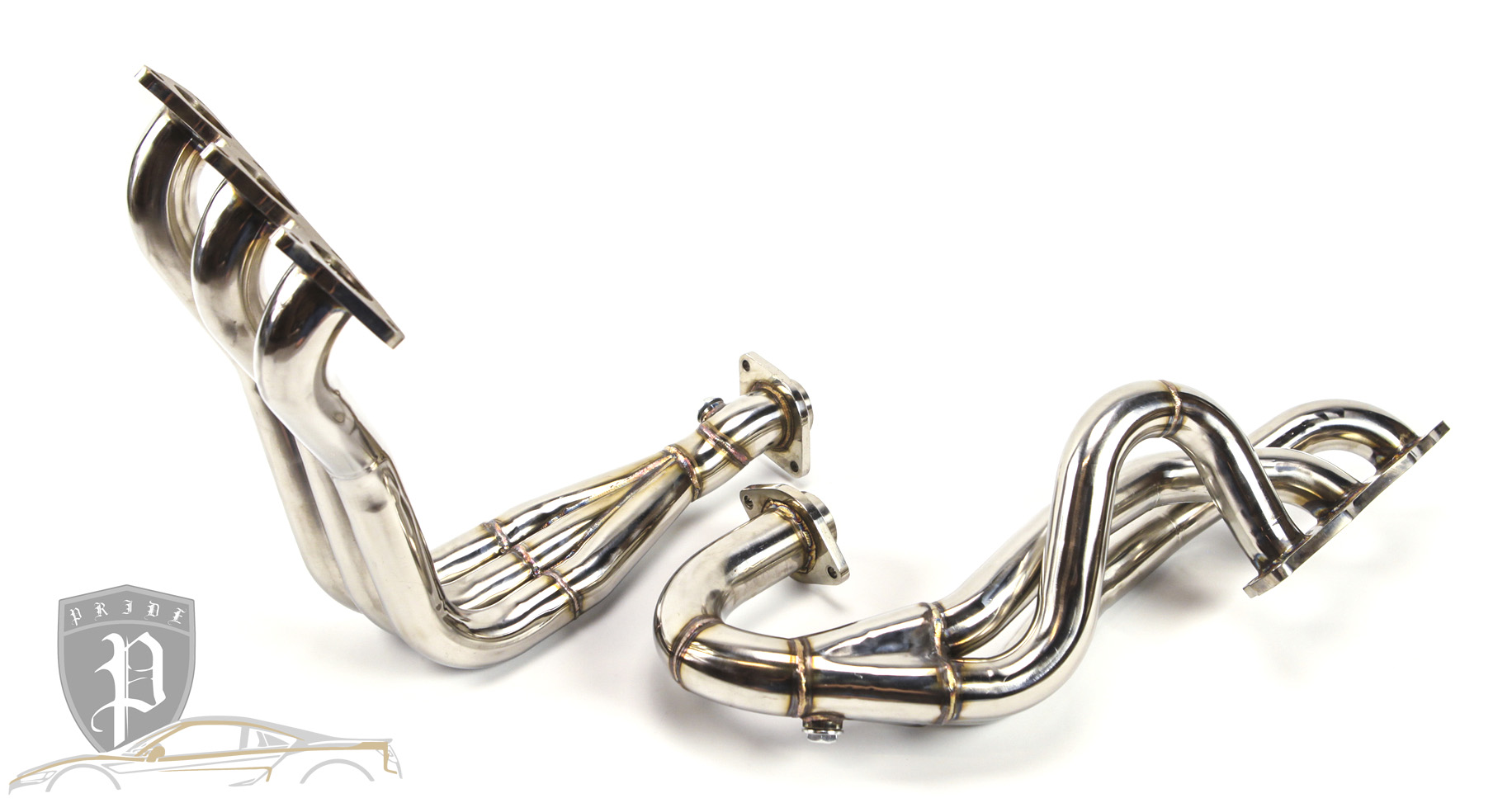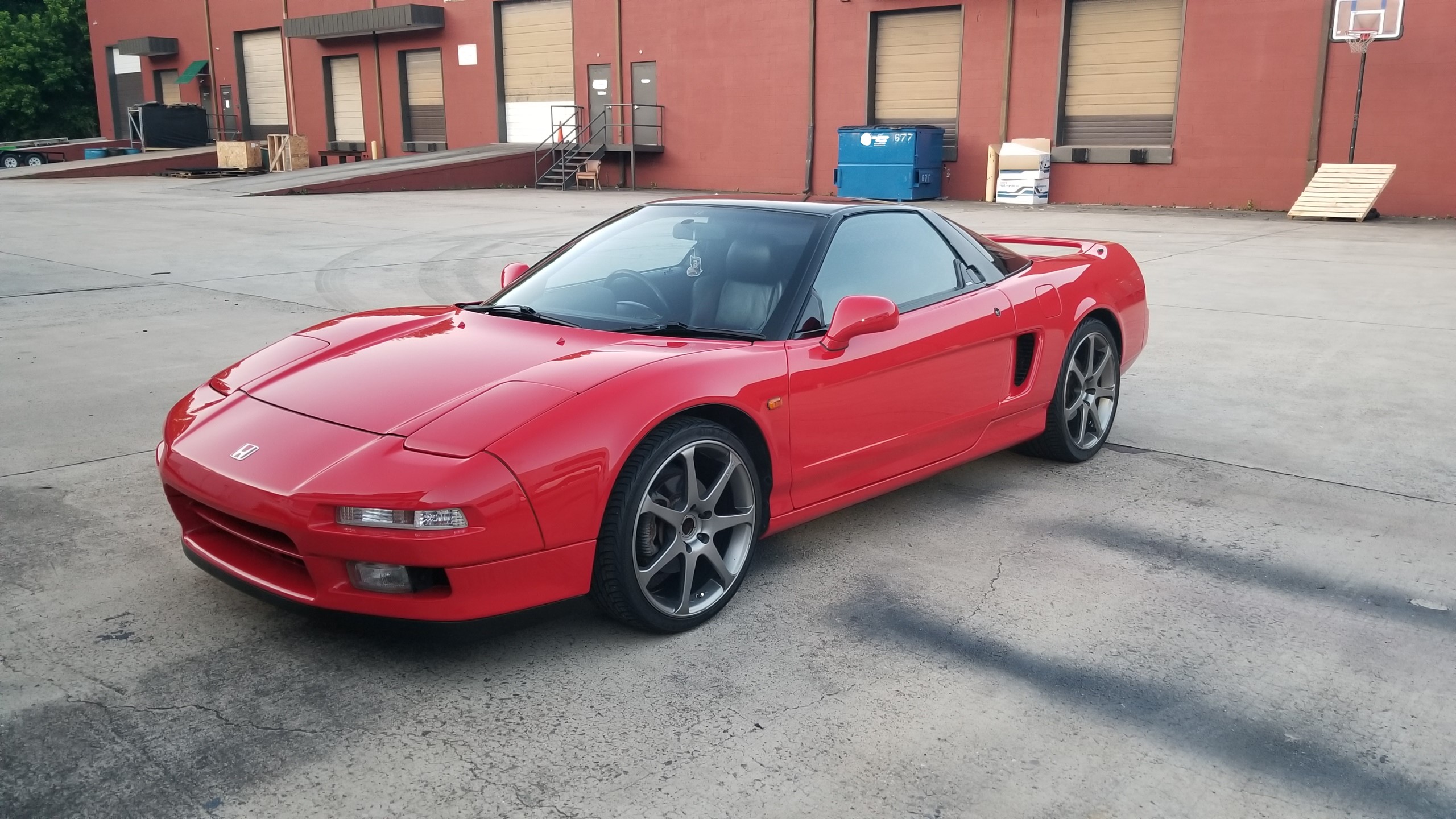Trans Rebuild pt1 & Misc Stuff
Finally, I'm getting to the real nitty gritty drivetrain stuff (in this case somewhat literally as you'll see below). Just in case you weren't convinced with the timing belt job. All this is in preparation for the manual swap, and my goal is to get this ready to drop into the car before I even start the swap.
Big thanks to MotorMouth for his rebuild thread here (
http://www.nsxprime.com/forum/showt...Transmission-Rebuild-Thread?highlight=AMAYAMA). It's a great resource for this job, and this thread I found while googling (
https://honda-tech.com/forums/trans...ansmission-teardown-rebuild-tutorial-2443459/). Not an NSX but a similar Honda trans with more good tips. I'm using these combined with the factory service manual as my main reference for this project, so that should be most of the bases covered.
It's taken me a few months to gather enough parts & tools (and time) (and knowledge) to tackle this rebuild job. I don't expect to get it done that quickly, but I made quite a bit of progress this past week just getting it apart and seeing the condition. I'm taking it very slow and making extra-super-duper-sure that everything is put back together correctly so that I have a long-lasting transmission that I won't have to touch again for years besides fluid changes...
Transmission strapped in for the ride to my place. I actually took this pic a few months ago before I had even bought my NSX yet since I had already decided to do the manual swap

.
Put it on a furniture dolly to make it easy to move around. I was barely able to lift it out of my car seat onto the dolly right below, definitely a two person job for anything besides a vertical lift. I can only imagine how much heavier the auto trans will be once I get that out...
Before taking it apart, I spent an hour or two cleaning off the outside to get rid of the leftover oil, debris, and little pebbles wedged into the casting. Brakleen worked well to remove old grease but also seemed to dull the case metals a bit, so I also used some normal citrus degreaser.
My little setup for the rebuild. It would be nice to keep everything here until I'm done, but I have to remain somewhat mobile so I don't hog the space too much from other people. Notice my organizer drawers that I'll use to store and label some misc parts during the rebuild. I got the idea from Ronald Finger during his Fiero rebuild here (
https://www.youtube.com/channel/UCgvRHIimO6otkQ4Dcl_9YqQ). I recommend it if you like car rebuilding, which you probably do if you're reading this particular sentence buried deep in my car rebuilding thread.
Taking things very slowly, I marked every bolt and sensor removed and labeled it before storage so I don't mix anything up. There are some ball detents for the shift forks that are specific to certain holes, a few sensors, wiring brackets, etc. to keep track of and using paint pens to mark the bolts and mounting spot makes it easy to remember where everything goes.
Other markings for brackets, breather tube, and stuff.
Once the sensors and outer case bolts were removed, I took off the big countershaft sealing bolt. It was already somewhat rounded from someone taking it off previously and my impact gun's snout made it worse, but using an extension with a more square face and some downward pressure allowed the bolt to spin off easily. I have a new one anyways, but it would be very un-fun to completely round this out without removing it first.
With the infamous countershaft snap ring exposed, I spread it open (a bit further than I thought was necessary) and allowed the countershaft to drop down past the snap ring groove in order to continue opening the case halves. I'm sure this will be challenging to seat back in the groove during reassembly since the countershaft has to come back up against gravity to line the bearing groove up with the snap ring.
With that done and all the housing bolts removed in criss-cross stages, I wedged a pry tool in this little ear protrusion to split the sealant apart. I alternated between two sides to pull up evenly off the 4 dowels and avoided prying on the machined sealing surface so I didn't gouge it.
After some fudging around with pulling the upper case around, finally it came free to expose the trans internals for the first time. It looks like a Smurf was trapped inside during a track day because the previous fluid used was Redline Lightweight Shockproof gear oil which is this off-green/blue color. I'm planning on using Redline MTL based on some other discussion on Prime.
Shifter lever component thingy removed, and the not-pictured reverse shift lever assy. Just following the factory service manual at this point, and taking measurements in a few places with feeler gauges to see how the wear on the shift fingers, etc. are. So far they are all within the service limits.
I used the zip-tie method to remove all 3 gear stacks at once. It would have been wise to use a second set of ties on the other end of the stack to provide more support, this group of gears is very heavy and it was a bit spooky lifting it all out of the trans into this new bin for disassembly & cleaning. I also removed the oil pump drive gear since it's a slip fit. A few of the items on the mainshaft also wanted to slide off since they're also mostly (or entirely) slip fit.
Here's the 5th gear shift fork. I read on the NSX UK forums that there is an older design with a thinner fork which has deformed in the past and caused 5th gear issues, but fortunately this one seems to be the updated design with the beefier ends so I don't have to mess with it. I would say the clearance between the fork and sleeve being ~0.80mm is a big higher than I'd like but still within the service limit of 1.00mm if I remember right.
You might be thinking that everything seems to be going pretty well for one afternoon of a first-time trans rebuild, I thought so too since it was a bit easier than I had expected and I was making good progress. My goal was to get the diff out and take it apart to see which version I bought.
Once I got to the trans magnet, I found this massive shard of metal stuck to it. I would say this surpasses the "meh that'll probably be fine" category and goes into the "shit's real fucked" category. I was in a bit of disbelief once I started looking for the shard's origins so I was surprisingly nonchalant about it until I started thinking about the damage it might have caused before being caught by the magnet.
Any guesses where it came from before you scroll? I thought about it initially and it looked too big/long to be from one of the main gear sets, so my money was on the diff ring gear or pinion gear/final drive. At least I hoped it was one of those.
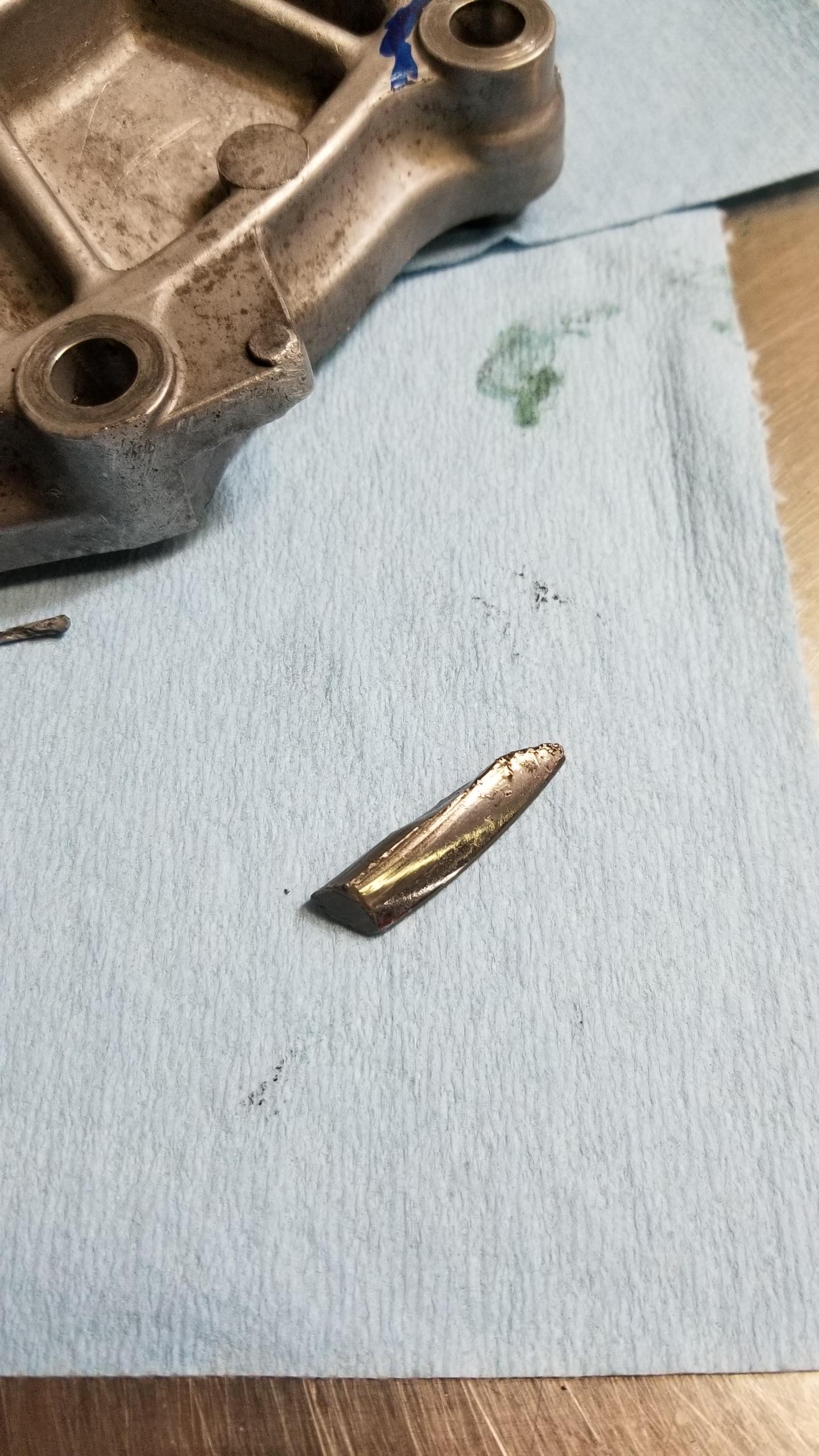
If you guessed the countershaft final drive/pinion gear, congratulations! That would be one almost entire tooth missing. Now, I'm not exactly in the "in-crowd" of manual transmission rebuilding but I don't recall reading any stories about a piece of the countershaft breaking off like this. There are other NSX problems like the 5th gear shift fork bending, 5th gear hub/sleeve wear, diff popping, and of course the snap ring failure, but I haven't heard of this one before. [MENTION=20267]sca037[/MENTION], I think I might have found the cause of your LSD "popping" noise :biggrin:. Or maybe not, I'm not an expert and this might not even be noticed during driving and might only cause some increased gear noise, though I'm sure the adjacent teeth would wear much faster too and eventually domino into stripping off the entire pinion gear.
Here's the magnet with the shard removed. Not hugely concerning if you discount the shard itself, but there were some small chunkier bits.
The real question becomes, how much damage did the broken tooth cause? Well, the answer seems pretty benign after some investigation. I closely examined the main/counter/reverse gear stacks (will go more in-depth during disassembly) and I noticed pretty much no wear at all on the gear teeth, so it doesn't seem like they were hit by the rogue shard. More pics will be posted in subsequent rebuild posts, but at first blush it seems like you could consider me "lucky" in that regard.
It would make sense the damage might be near the countershaft itself, and the inside of the casing near the diff certainly shows some scars on the soft (aluminum?) casing. This one was particularly noticeable, but I think after some filing down it shouldn't affect the operation of the trans.
This was the second casualty, a bit under where the diff sits. Again, some filing down to make sure the burrs don't break off or hit something and I think this should be fine.
Here's the overall lower case. You can see the two spots in the pics above, there are a few little nicks in some places but seemingly nothing too bad. So far it seems like the shard made a few revolutions around the differential before the magnet trapped it, which makes sense to me due to the layout of the gears and magnet.
And the differential lifted out of its home. It is very heavy and pointy. Fortunately, after a few minutes inspecting, I don't see any obvious damage from the pinion shard, but I will be replacing the ring gear with the 4.23 version anyways so it wouldn't have mattered.
After zipping off the bolts in stages in a cross pattern with a 10mm 12pt socket, finally exposed the greasy internals. It appears to me as if this differential is the 90-94 torque control version and not the 95-96 updated torque reactive differential like I thought it would be due to the missing thrust needle washers and the presence of the spring retaining clip on the hat I removed. I posted a thread in the DIY forum just to make sure that's actually true.
If this is the early diff like I think it is, then I'm in luck because this one should be compatible with the 4.23 ring gear and I don't have to wait another few weeks to source the right diff. That would be a big holdup to this project so at least this seems to me like good news.
Underside of the planetary gearset/carrier if you were curious. I will be measuring the clutch pack thickness soon to see if it needs replacing but didn't get to it yet. There's some metallic clutch dust in suspension so it's been through some prior driving for sure.
That's where I left off for the (late) night. I covered up everything with plastic to protect the pieces from airborne contaminants, which for now isn't a huge deal but will be once I get to full disassembly, cleaning, and reassembly, where the only thing I want inside the case once I seal it up is Honda parts and new oil. This weekend I will have plenty more time to dig in and make more progress. I anticipate this will probably take me 2-3 more weeks since I might end up needing to order other worn parts like gears, sleeves/hubs, and shims that weren't on my original parts list (and would certainly not have been provided by any other pre-made rebuild "kit").
There was no noticeable wear on the outer gear mesh teeth but there was some visible on the synchro-gear mating teeth like on the 2nd countershaft gear (i.e. likely from hard 1-2 upshifts), so I'll have to weigh my options when I get to that stage. That particular gear happens to be discontinued (of course) so it probably would have to be sourced internationally, which would really suck because international shipping to/from the US is an absolute mess right now. If the worn gear is part of the JDM gearset it probably won't get replaced unless it's really bad since most of those are on a very long back-order. It seems to me like there are a few people looking for JDM gearsets now that are running into this issue, so I hope we're not at the stage where those parts are being discontinued altogether.
Though my original countershaft is only good as a lampshade holder or heavy blowgun, I'm still fortunate because I was planning on replacing it anyways and I have the 4.23 countershaft on hand, so I guess this means I'm doing the 4.23 conversion whether or not I can get it to work with the EPS system. If the damage was on the mainshaft or other component, I would be out another few hundred+ dollars and probably several weeks/months of time waiting for new parts :redface:. I still think this project will go well, I will find out more and post updates on the gear stack assy/disassy after this weekend.
 .
.


